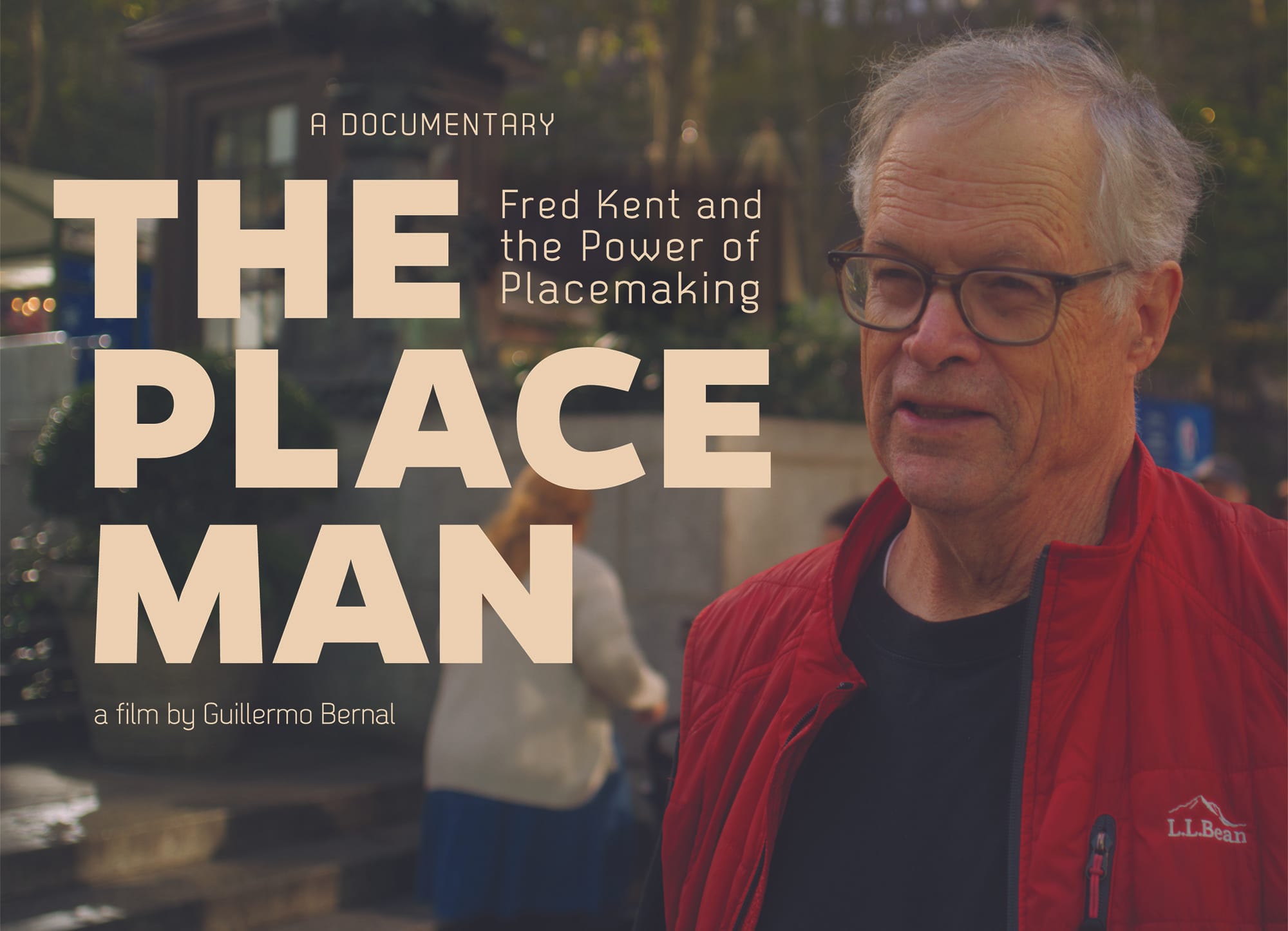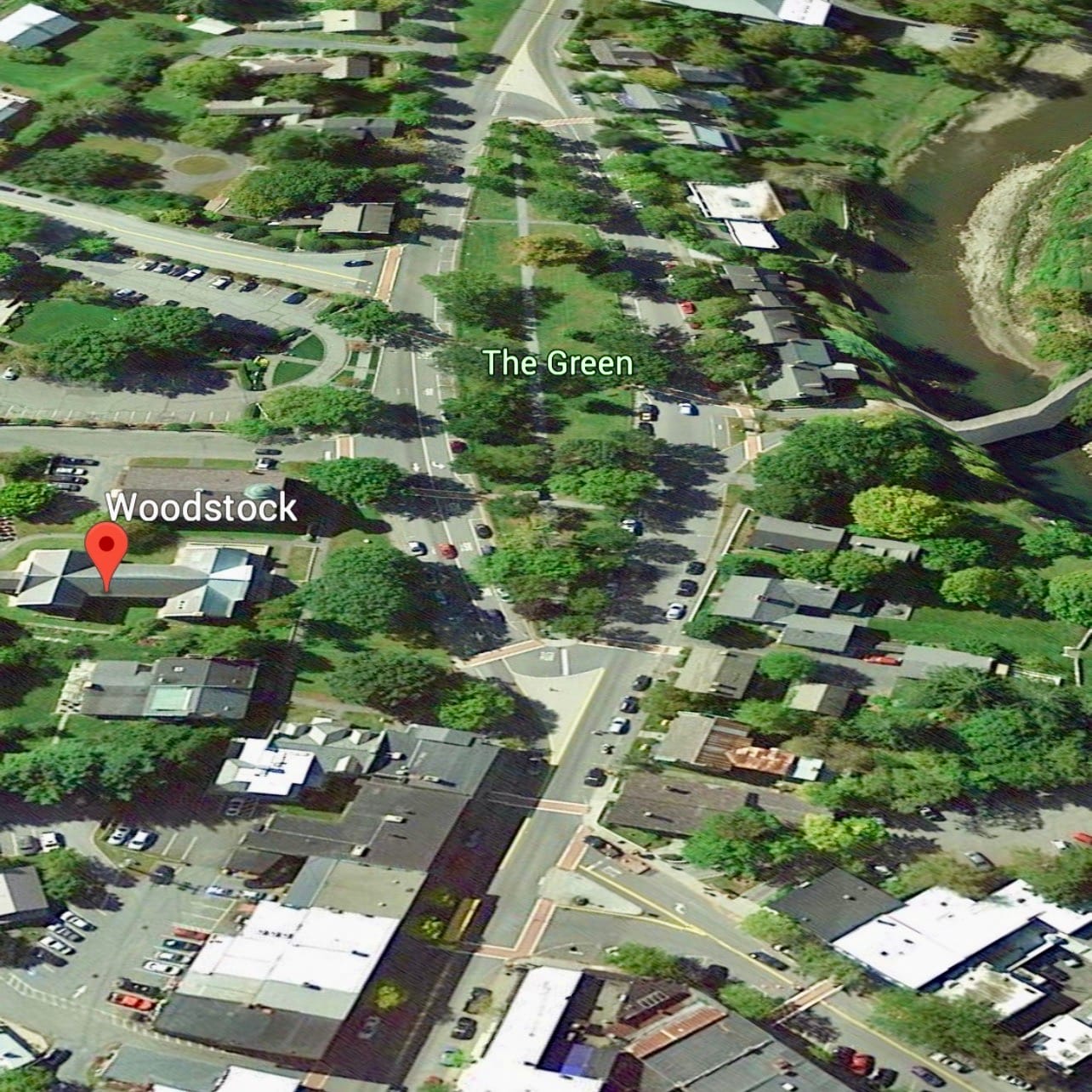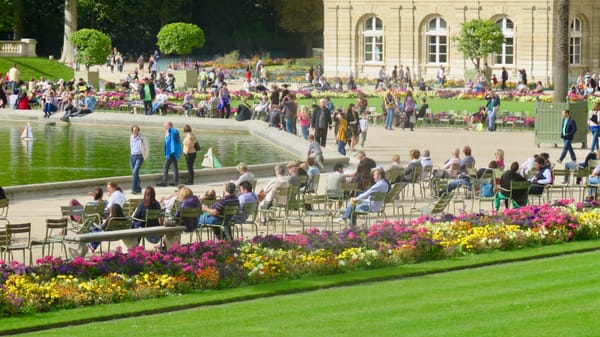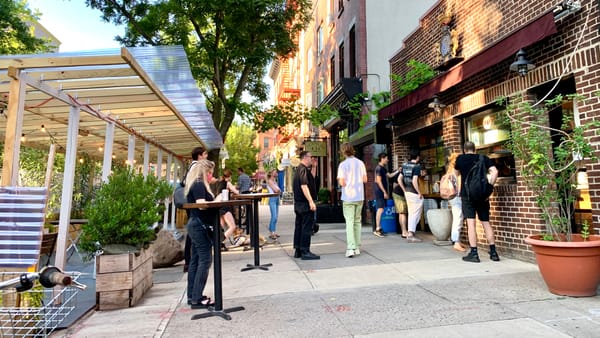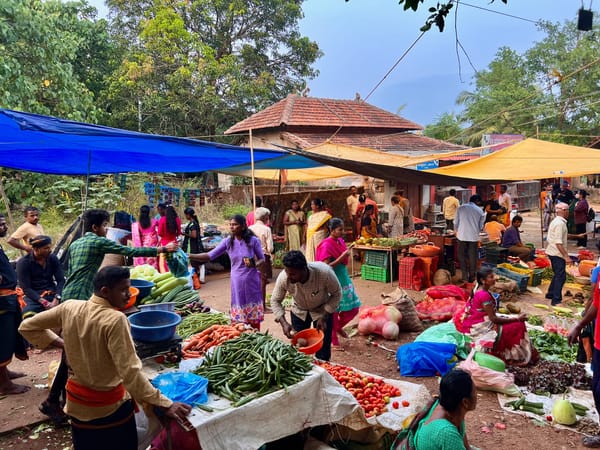Place is the missing link to land conservation and historic preservation. By starting with the public spaces – streets, sidewalks, open space and architecture – social and economic life in small towns can be revitalized.
So many of our beloved small towns have been deeply damaged by the transportation industries that have reshaped them around cars and traffic. To get back to the beloved village dynamic that many small towns across the US have lost for this reason, we need to put place at the center, and let this idea radiate out into the ways that we approach historic preservation and conservation. The character of our neighborhoods need to be defined by the people who live there, not the cars that pass through. To that end, focusing on the ways our sidewalks, intersections, and other shared spaces work is at the core of how we continuously create and sustain a feeling of welcome.
We grew up in small towns that had many qualities of the great places we cherish – Kathy in Little Falls, Minnesota and Fred in Andover, Massachusetts, with summers in Wolfeboro, New Hampshire. From firsthand experience, we know what public spaces were like at a time when social life was much more prominent than it is today. We have watched the decline of small towns over the last few decades and have worked actively on main street revitalization for more than 40 years. We were an early part of the National Main Street movement by the National Trust for Historic Preservation, and were brought in on occasion to reaffirm the values of social and community life.
Woodstock, Vermont, as lovely as it is on the surface, is a perfect example of what is currently going wrong in almost every small town we have visited in the last four years, where social and economic life have been negatively impacted by the drive to "improve" streets by facilitating more through traffic.
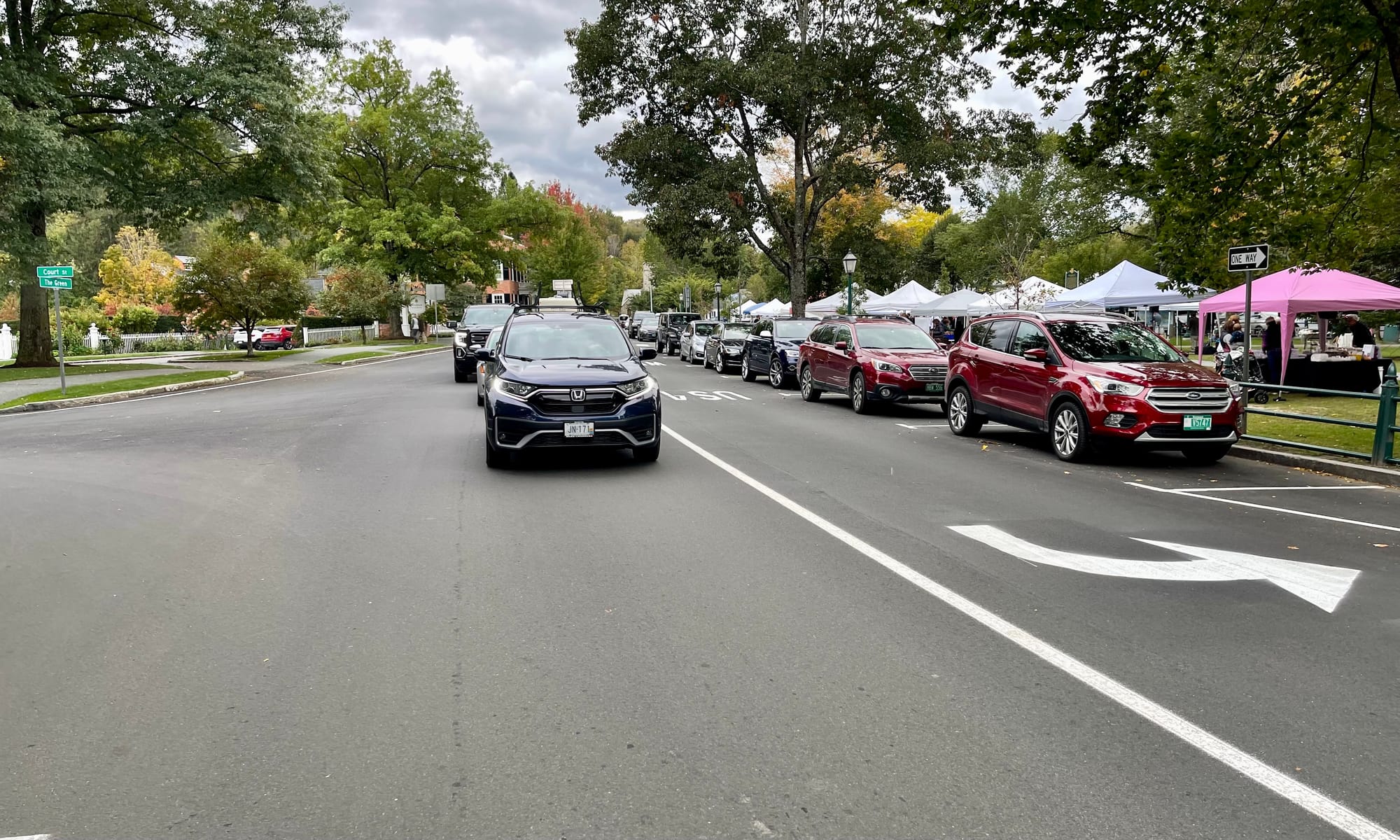
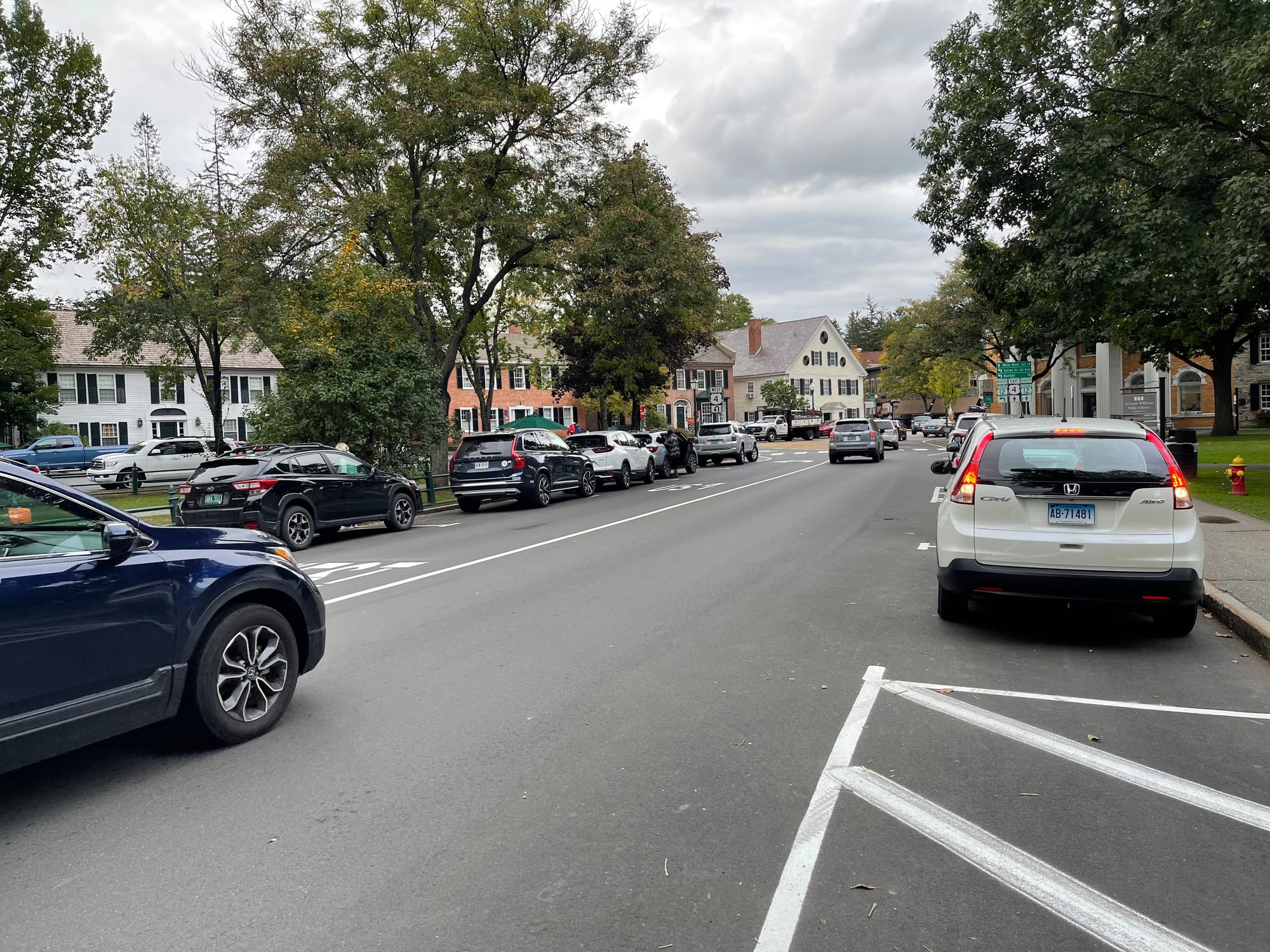
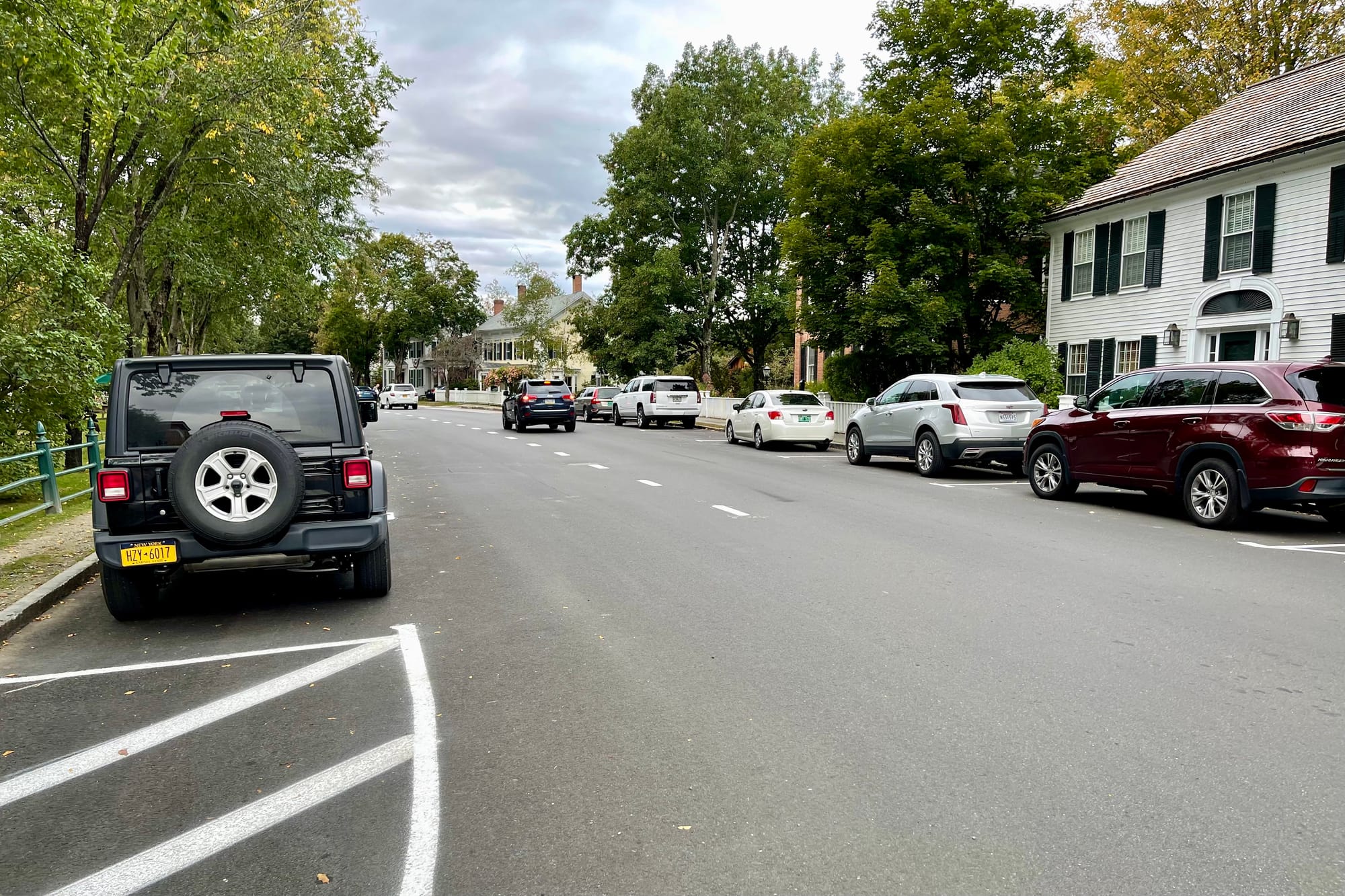
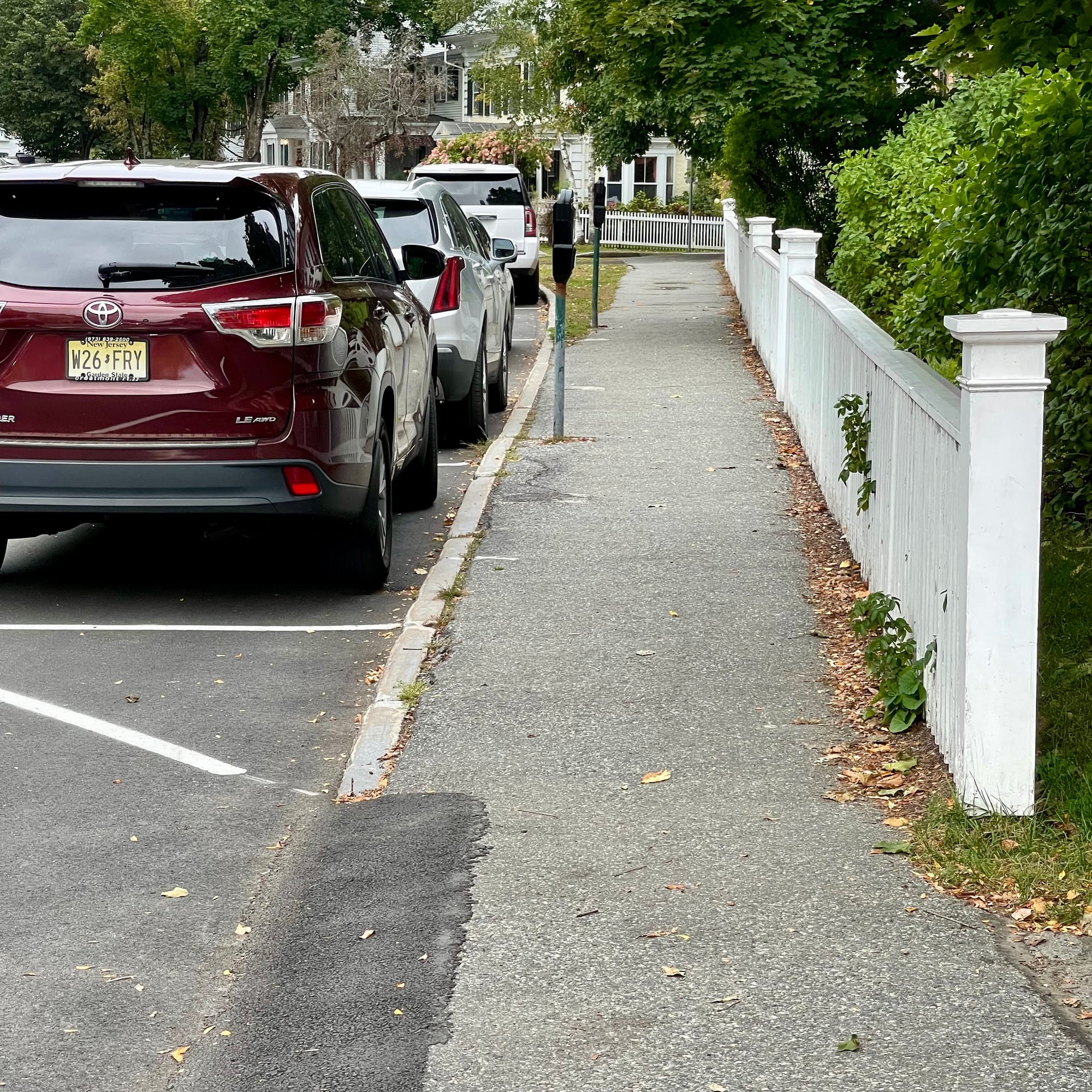
Traffic around the Green – overly wide roads and narrow sidewalks, barely possible for two people to walk comfortably
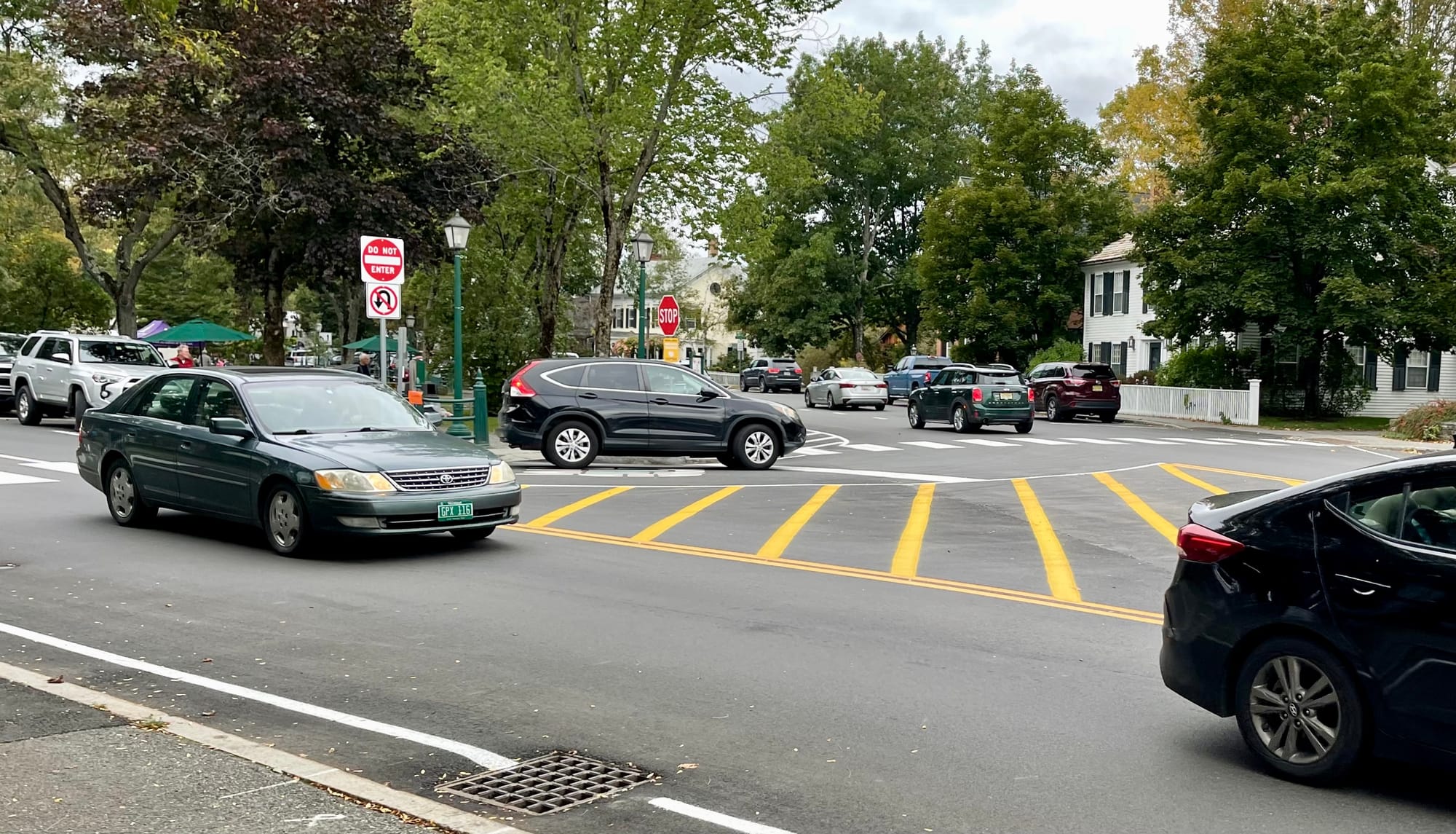
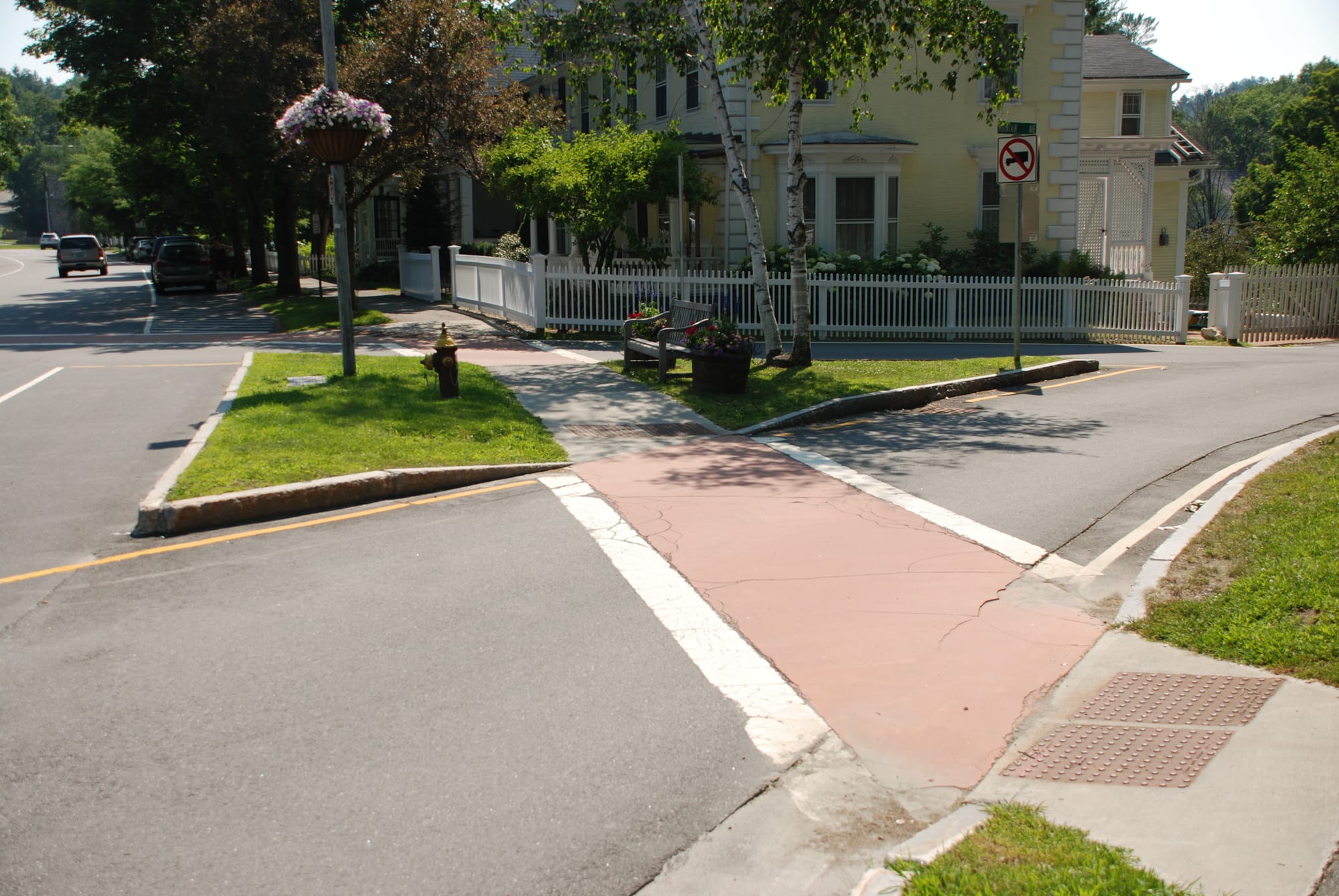
Turn lanes and hostile intersections create traffic-dominated gateways into town
Conservation and Historic Preservation
Woodstock is the poster child for both land conservation and historic preservation. Its transformation was led by the vision of Laurance Rockefeller who was the catalyst for the conservation movement.
Laurance Rockefeller's American Conservation Association and our mentor, William "Holly" Whyte, were the backbone of the Conservation Movement. Lady Bird Johnson, a member of the board, was the inspiration that helped make it a national agenda. I have been on the American Conservation board for almost 50 years. The Rockefeller family were also keenly interested in historic preservation. Both these ideas – conservation easements and preservation of historic structures – were the foundation of the revival and ongoing efforts of the Woodstock Foundation.
Conservation, Street Life Project and Placemaking
When Holly wrapped up his work with Laurance Rockefeller and his conservation efforts, he turned his interest to the study of "street life" in cities. I joined him following the 1970 Earth Day event in New York City which I led.
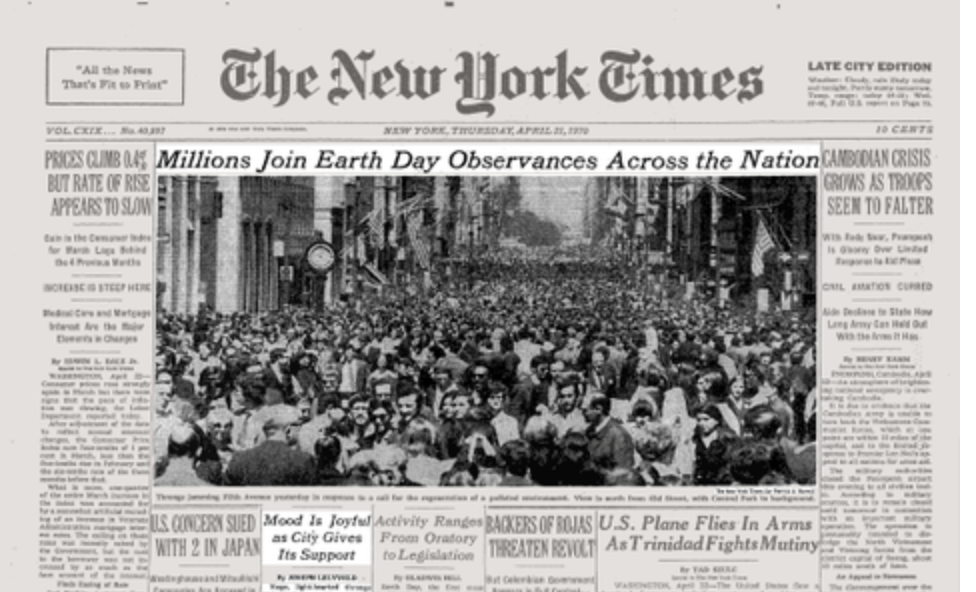
A recent book by Richard K. Rein, American Urbanist: How William H. Whyte's Unconventional Wisdom Reshaped Public Life is testament to the foundation of the conservation movement and subsequently the Placemaking Movement which we founded – a fast growing network of local leaders around the world creating a future we all need globally. You can view the documentary on our placemaking work here.
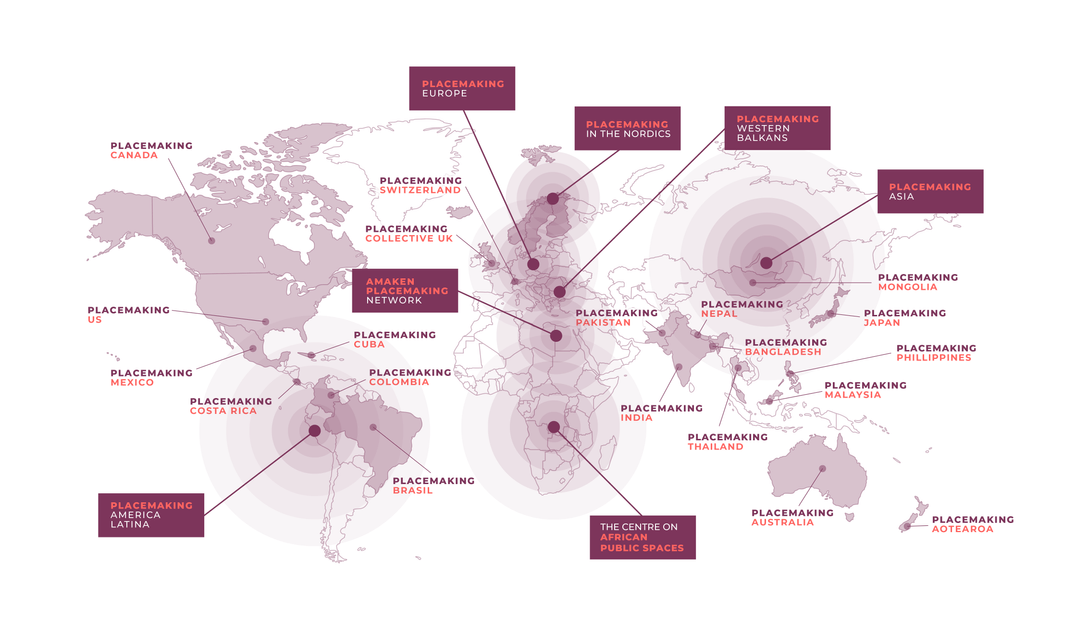
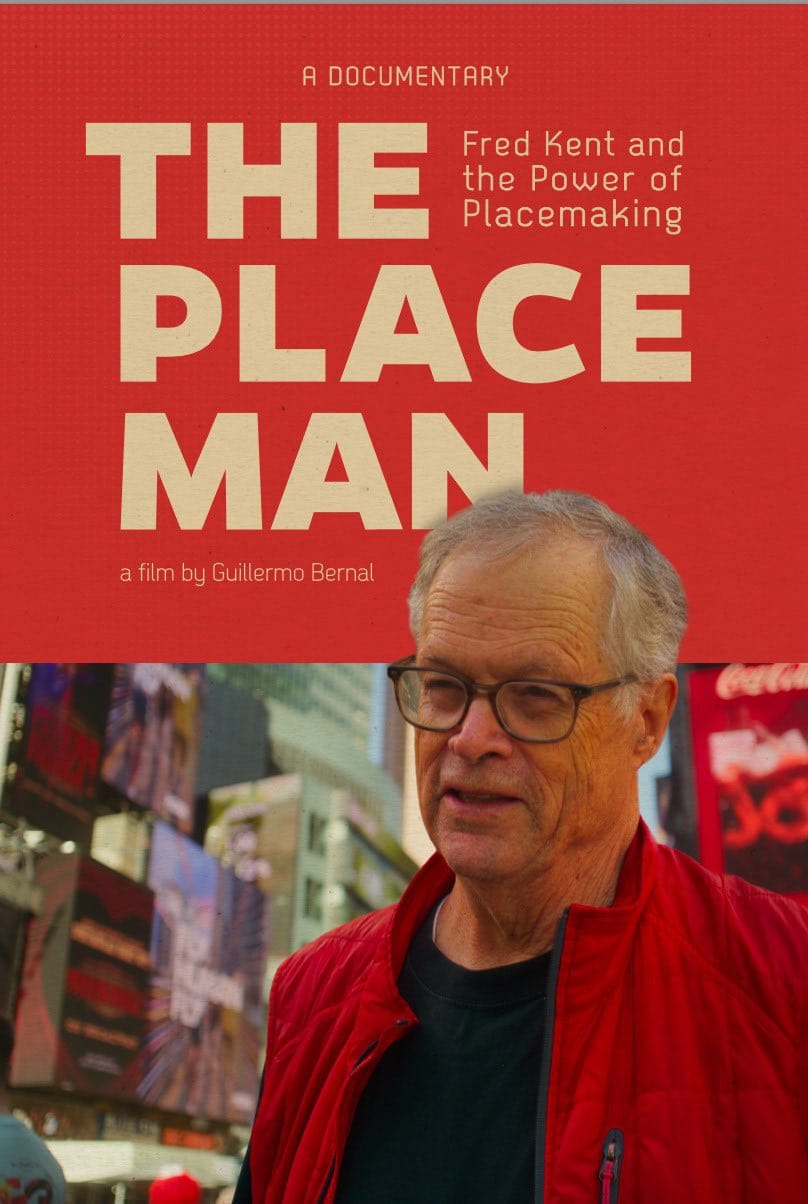
Woodstock, Vermont – Ways to Create a Town's Future by Bringing Back its Heart
Woodstock is a thriving small town in a very desirable part of Vermont. It has rolling hills and enticing terrain that attracts many owners of second homes and retired families. The Rockefeller/Billings family was a major factor in preserving its character along with protecting large areas of farmland and open space, with an associated working farm and museum that serve as local attractions. Most of the buildings have been restored and are lived in or have stores catering to both tourists and locals.
Woodstock is full of natural and historic resources, local artisans, and a special network of trails and historic streets that collectively create one of the most beautiful towns in Vermont. But it needs a dynamic center for the community in order to really shine. Currently, the town's center and main street suffer from over-designed intersections and too wide roads, isolating two central parts of town – the Green from the the downtown core. Even the entire length of Main Street (Route 4) in the downtown is designed to maximize through traffic. Making the experience of walking enjoyable has not been a priority here.
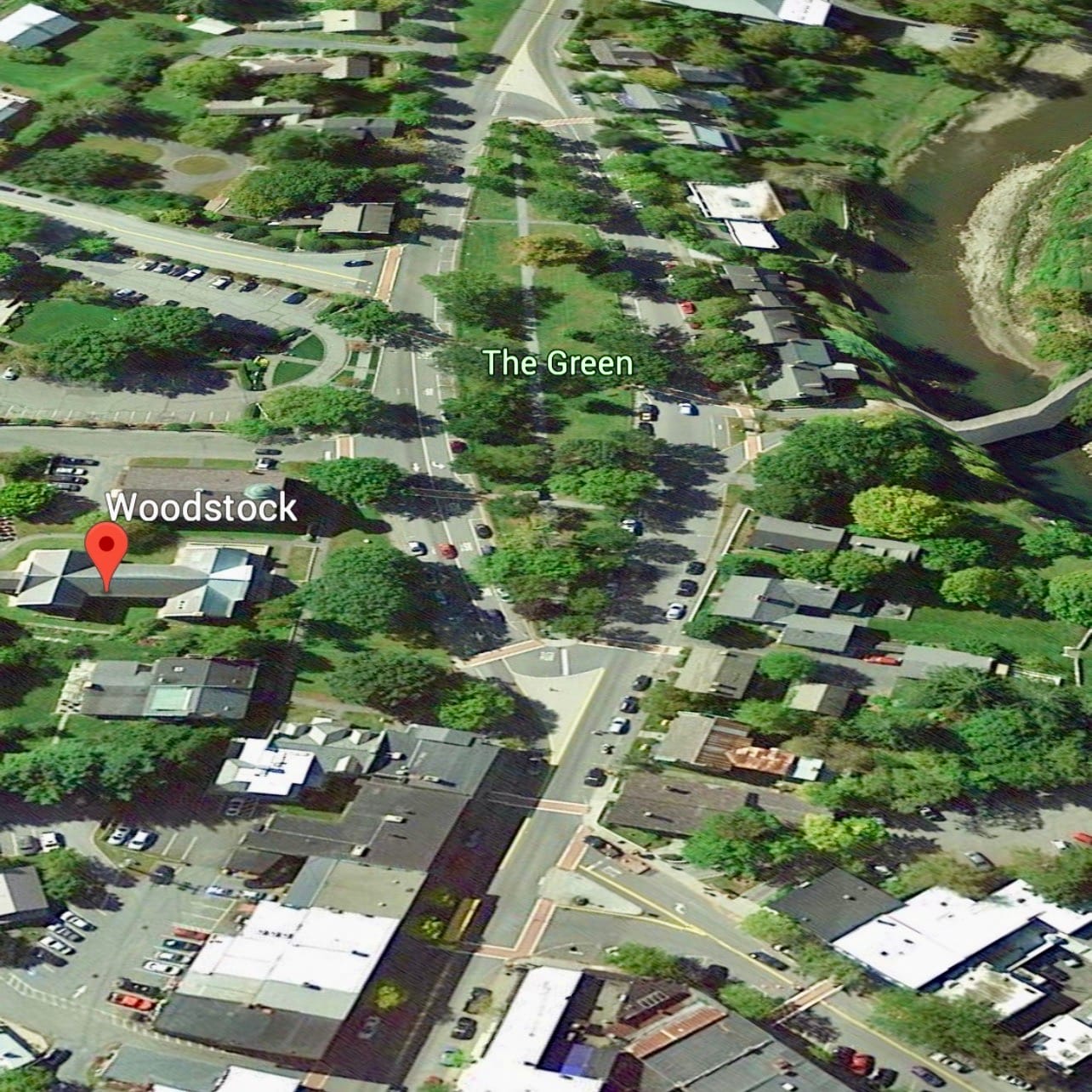
Looking Into the Past
Before cars and the digital age, sidewalks were what connected everyone. People didn't jump in their vehicles to drive somewhere or log on to their social media accounts when they wanted to interact with others, they took a walk. Sidewalks connected the main street – the backbone of community – to neighborhoods, residences, and community assets such as stores, schools, libraries, parks, houses of worship, and other essential institutions. They were the places where residents crossed paths and had spontaneous encounters with friends and neighbors.
On their homes, people had porches so they could further interact from the comfort of their property. While sipping tea or having an afternoon snack on their porch, they could stay updated on the state of their neighborhood and receive news from their neighbors. They could keep an eye on children as they played, often in the street, making sure they were safe.
Four summers ago, we started visiting the small towns and cities we had been familiar with growing up. We wanted to know how they have changed over the years. With people staying nearer to home during the pandemic, we wanted to see if small town life had finally regained its importance after years of being deprioritized in the name of car infrastructure. It hadn't, and this became cause for significant concern...
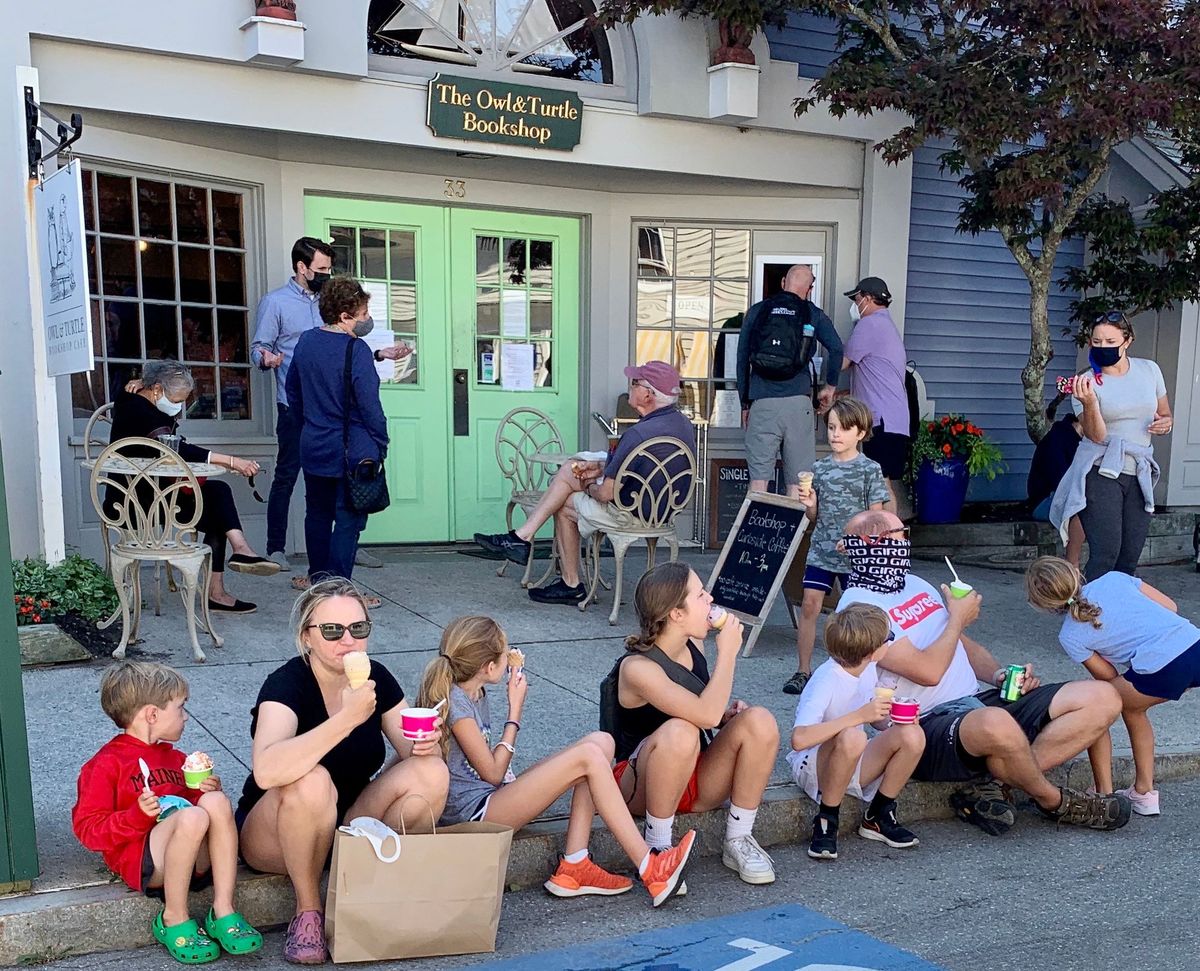
Local communities feel left out of the conversation when it comes to roads that rip through their towns because they do not have any authority to challenge the "knowledge" that traffic engineers come with, presenting numbers and diagrams and data that seems indisputable when it comes to what will "improve" a particular street. They set up the demand for their agenda through years of research tied to the performance of road systems that require widening streets, and prioritizing traffic flow as though streets are simply conduits for cars rather than platforms for community life. That is the story of the downfall of small towns across North America.
The only town that stood out to us as still being vibrant and full of social life and community, where people were front and center instead of cars, was Chautauqua in upstate New York. Its streets were peaceful and buzzing with life, porches pushed up right against the path, and there was a sense of connection everywhere. We need more of this in our small towns and less of cars speeding through at the cost of security, joy, vibrancy, and peace of mind. Chautauqua was built in the 1870's and has survived as a sacred place of art, culture, religion and politics (with a small "p").
“There's no place like it. No resort. No spa. It is at once a summer encampment and a small town, a college campus, an arts colony, a music festival, a religious retreat, and the village square." – Historian and author David McCullough
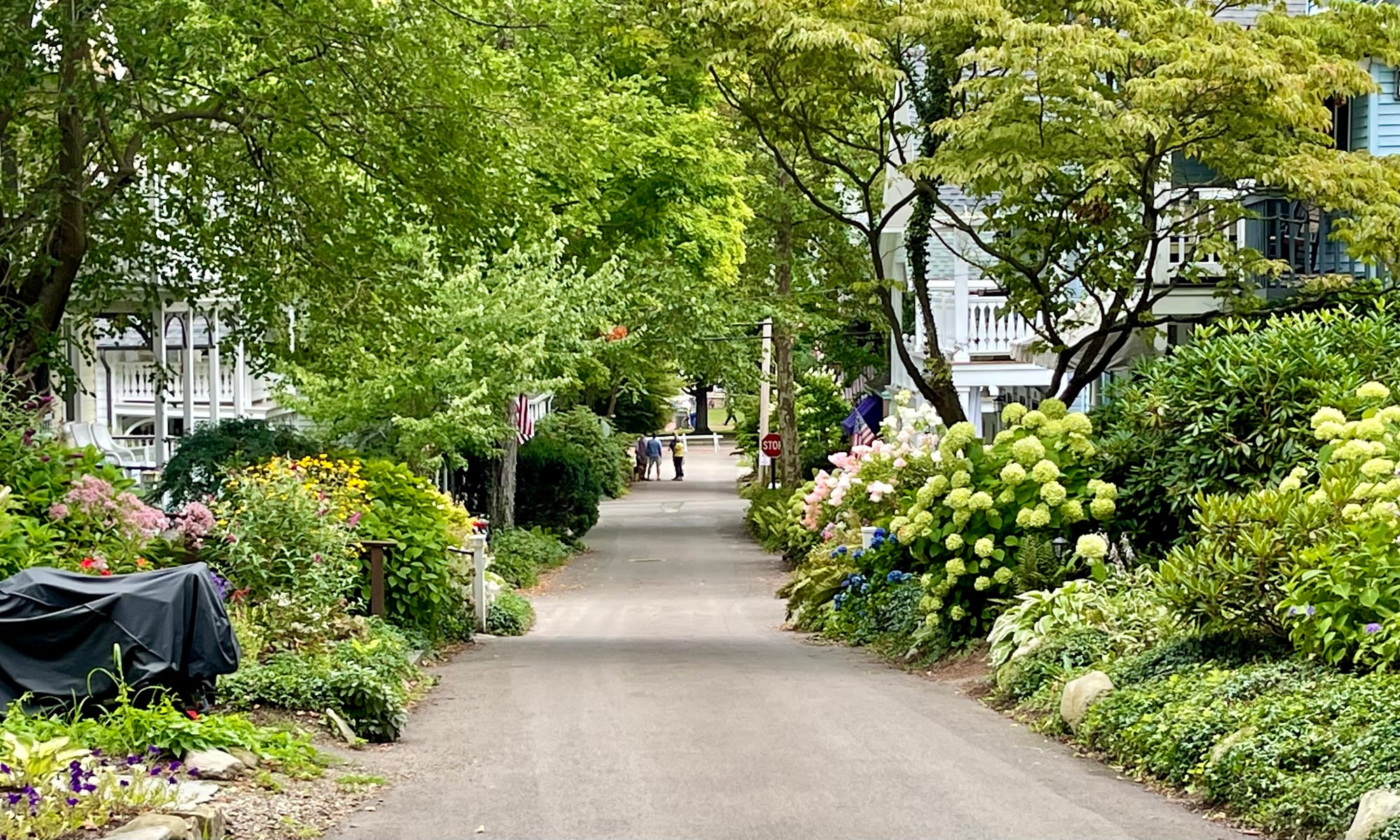
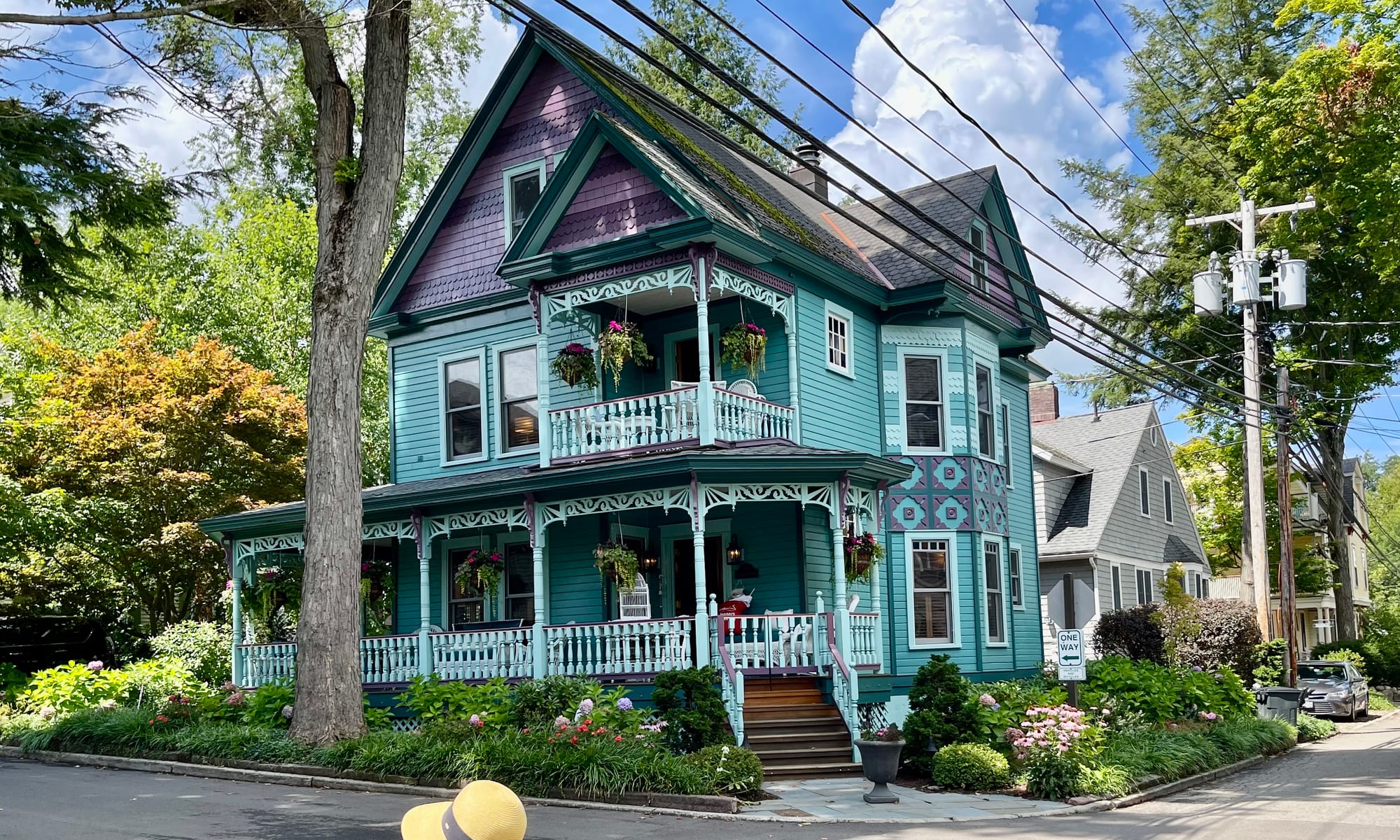
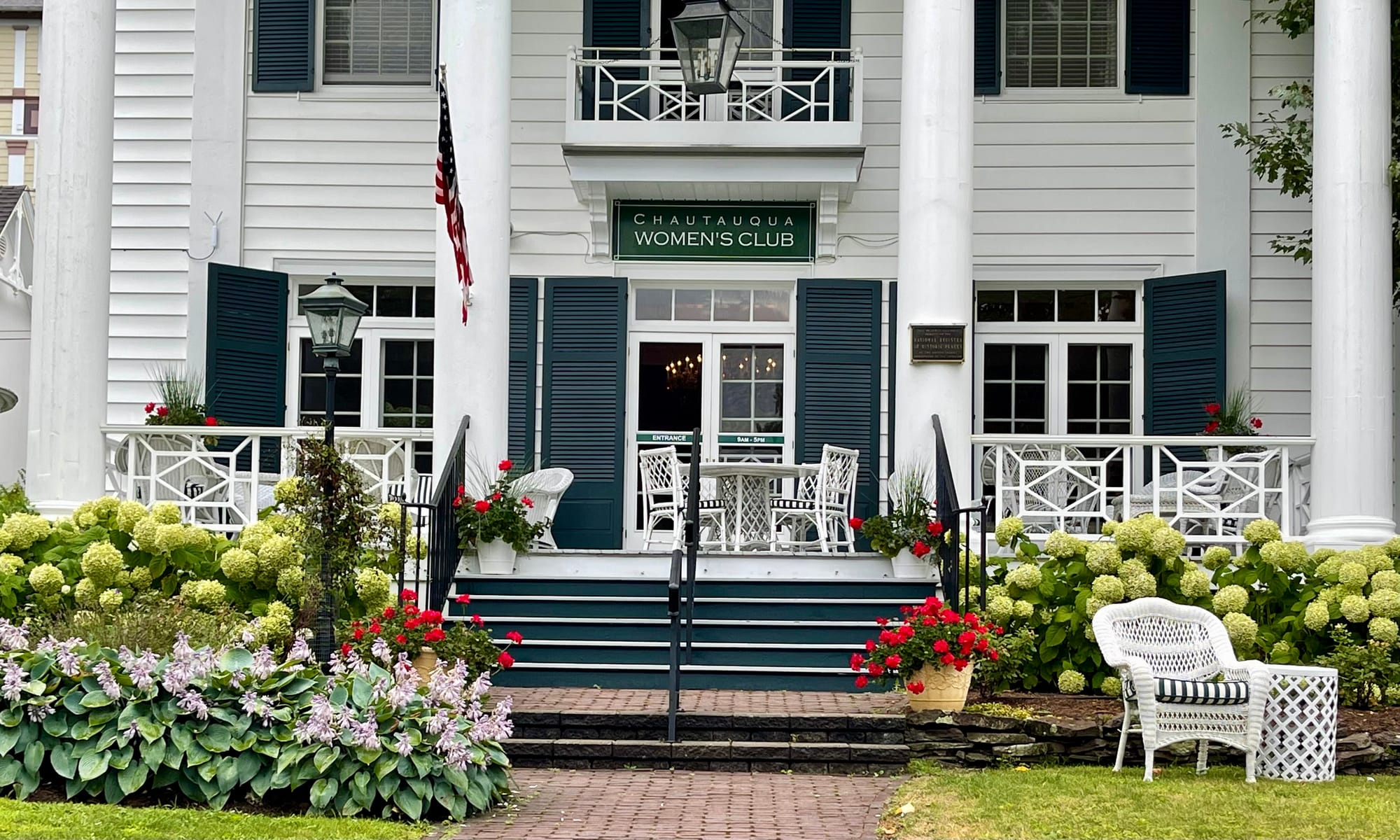
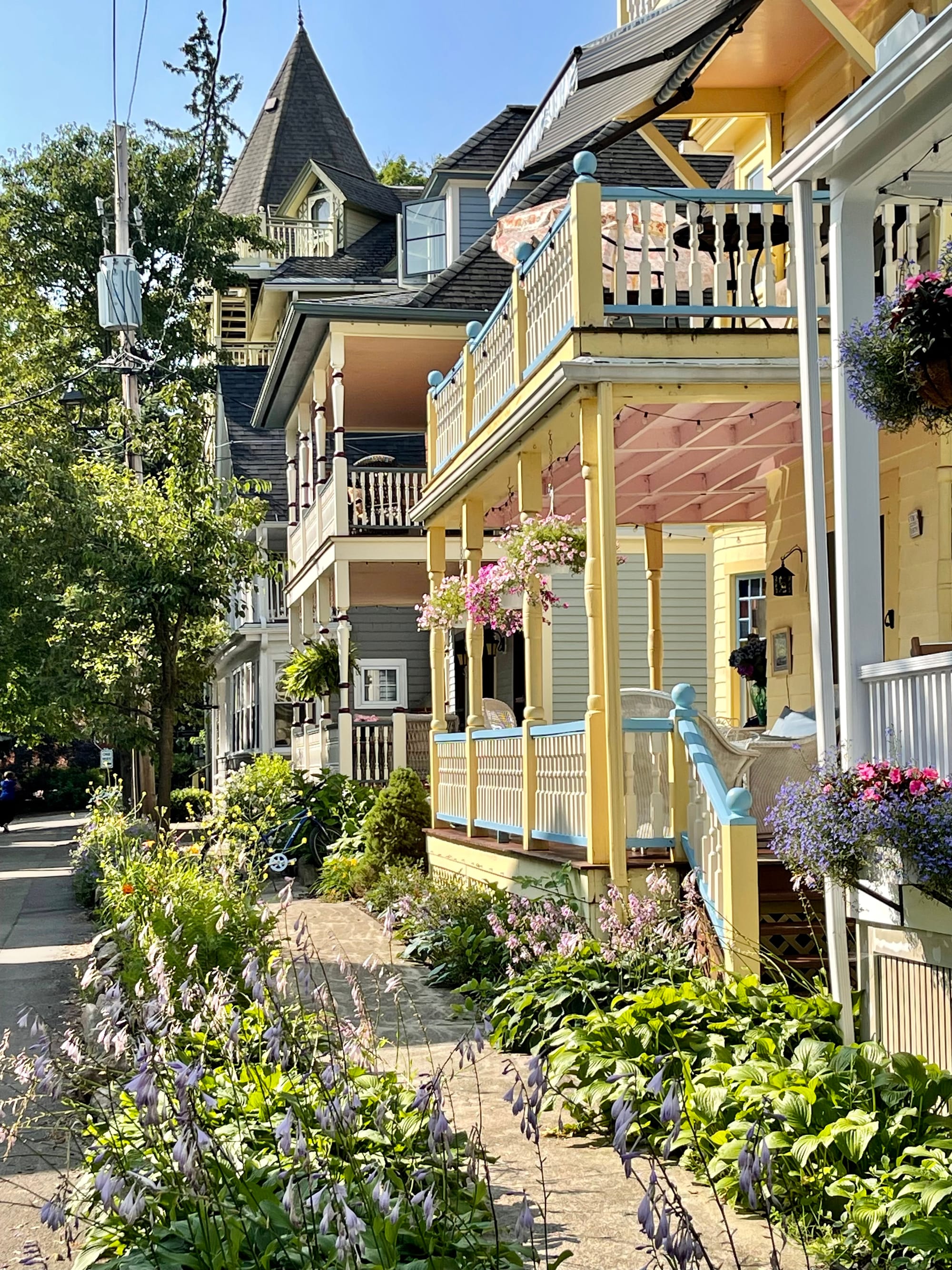
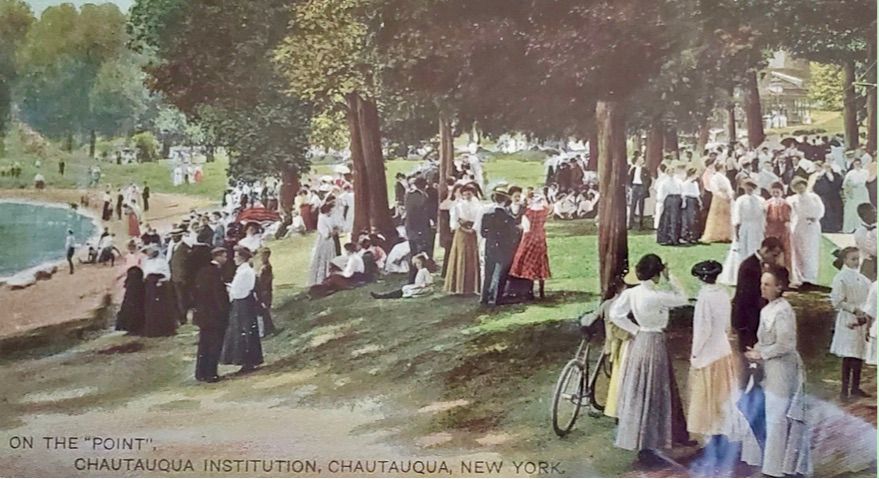
What Can Be Done for Small Towns?
We decided to start brainstorming what could be done to make other small towns better. We recognize that we're just visitors, but because of our background as Placemakers, we are visitors that can look at a town with experienced (and simultaneously fresh) eyes which can hopefully help these towns create a vision for their future.
This post will be the first in a series of deep dives on small towns. We explore in this article the town of Woodstock, Vermont, to figure out how it can be brought back to life. With conservation and preservation of Woodstock as a foundation, Placemaking is the missing link that can turn Woodstock into a prime example of how the intersection of preservation, conservation, and Place revitalizes beloved communities – the ultimate goal.
The key to doing so is focusing on the public spaces. By starting with something as overlooked as the sidewalks, towns like Woodstock can be fundamentally transformed. Wider sidewalks and small hubs of activity along the streets can be added to create a sense of enjoyable promenading for exploration and discovery. By expanding and improving the sidewalks and public spaces, entire communities can transform their main streets from throughways into destinations.
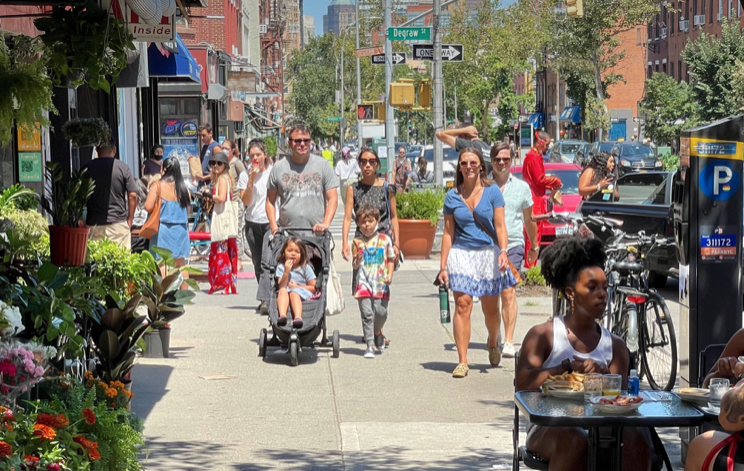
Revitalizing Streets and Sidewalks
Streets are vitally important channels for social and commercial life. The impact of focusing on car traffic has stripped streets of their important multi-faceted roles. We have to reverse these detrimental impacts of car culture as a way of reshaping our communities and our planet to be healthier and more resilient.
This post outlines what steps need to be taken in order to transform a small town into a wonderful destination. What's more, making it happen can be done quickly and for the most part inexpensively. Woodstock can become an example for the future of small towns everywhere.
Key Recommendations
1) Sidewalks need to be expanded to allow for more social and commercial activity, outdoor seating, "inside out" design, etc.
2) Intersections at the heart of town need to be made smaller to not impede social and commercial life, or they should be transformed into public squares
3) A pedestrian promenade/"passeggiata" where people can stroll calmly is a central feature of any great town
4) Hubs of activity are needed throughout to create a flow of foot traffic and keep people moving along a street
5) Main Street needs to be the backbone of the community and designed with this role in mind
A Plan for Woodstock
A major goal for Woodstock should be to create a town center through the development of a main square and a lively village green, and then connecting them to form a heart of community. This heart, much like a real heart, should reach out into surrounding neighborhoods through the "arteries" of its streets, revitalizing various parts of town with the lifeblood of foot traffic.
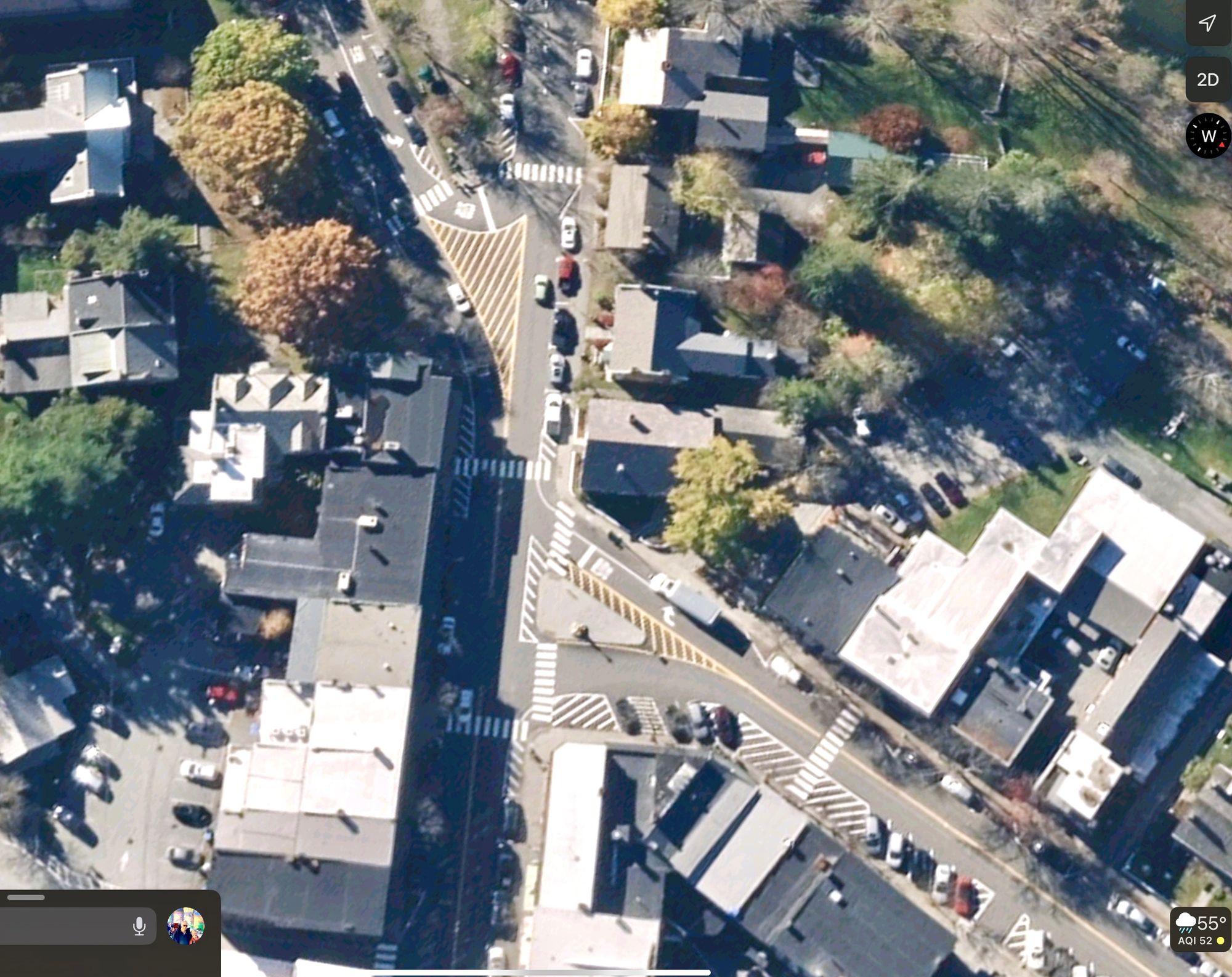
The downtown core has overly wide roads with narrow sidewalks.
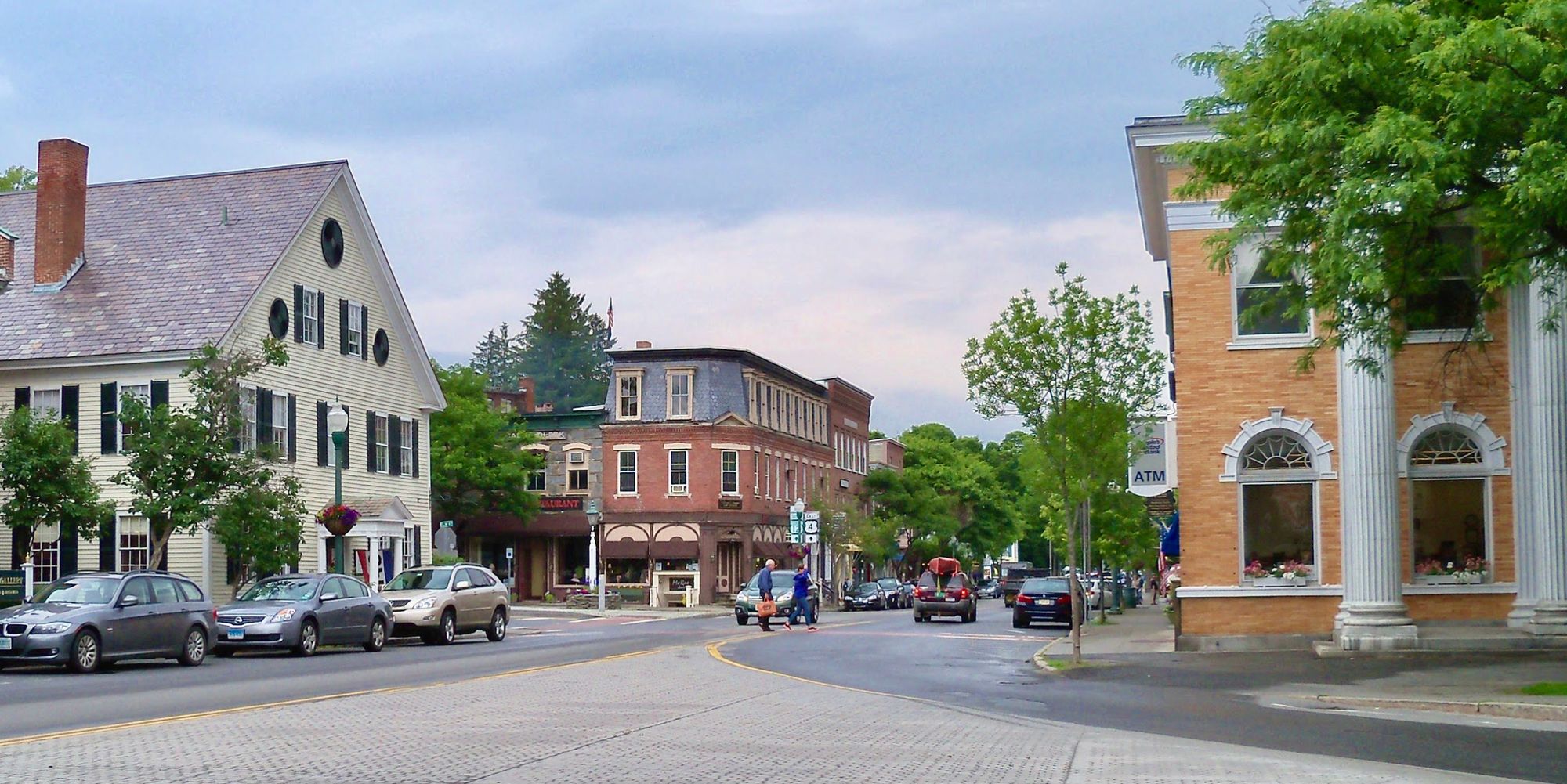
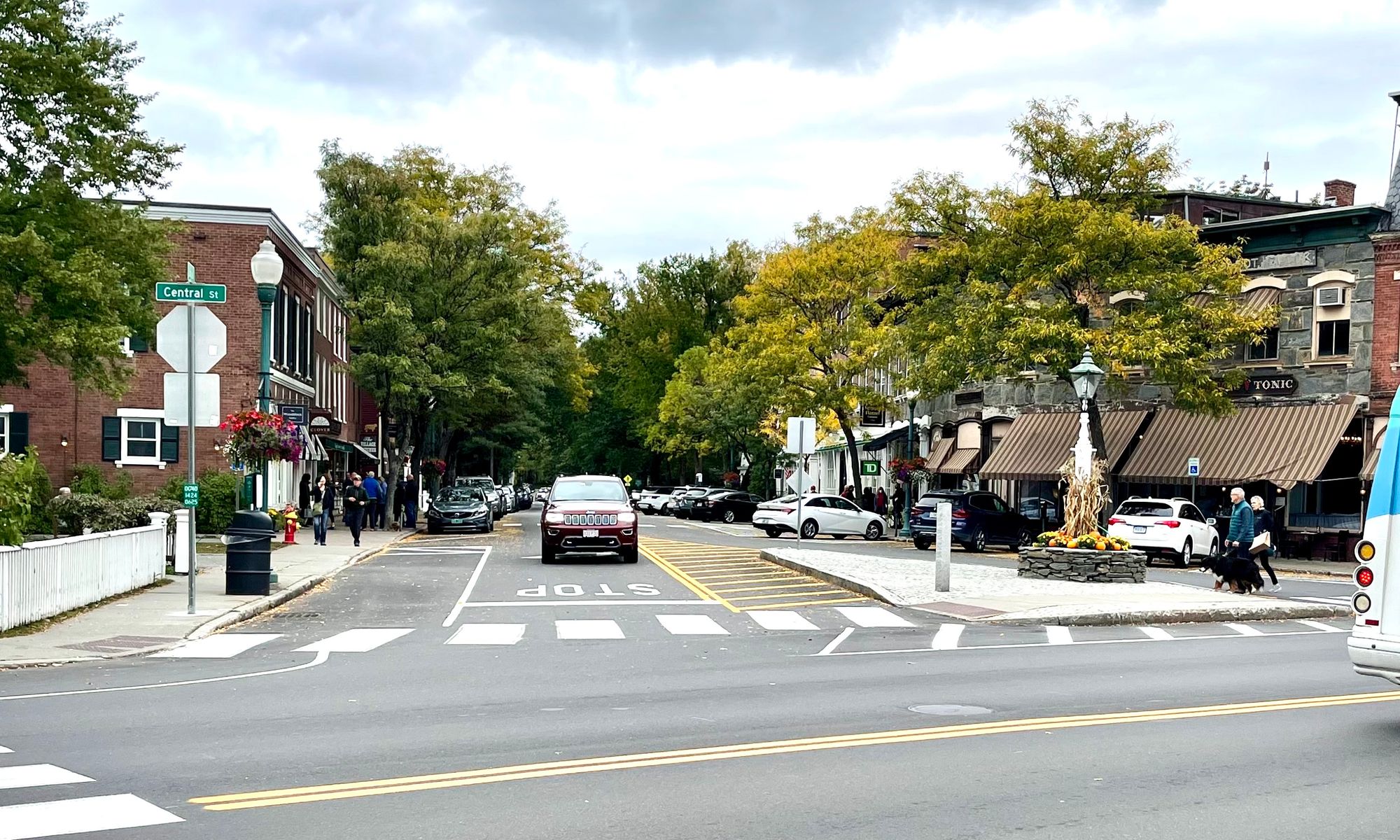
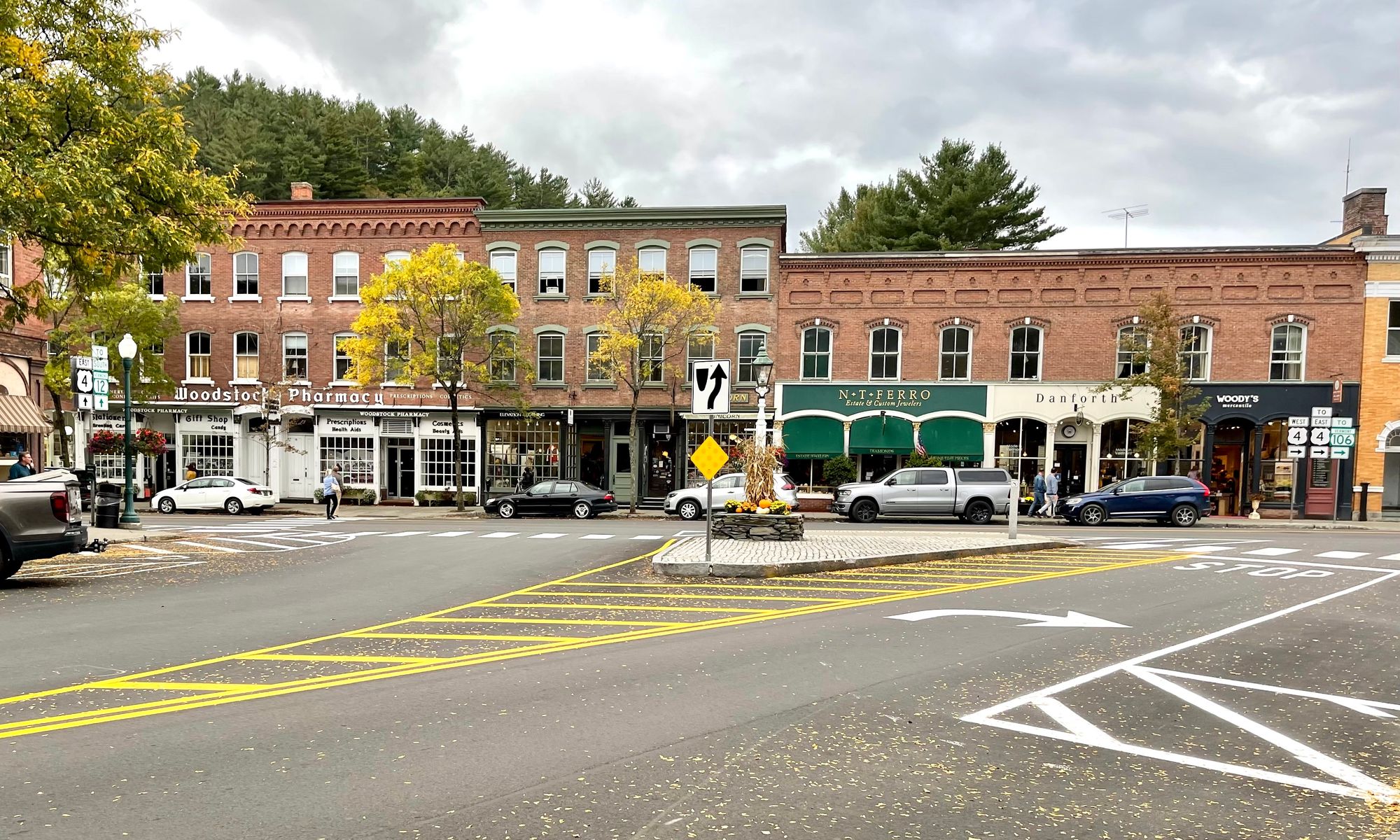
Main Intersection as a Square
This tiny island is the main downtown gathering place. This focal point could actually become a great plaza by doubling its size and bringing the sidewalks on each side closer to create a true central square.
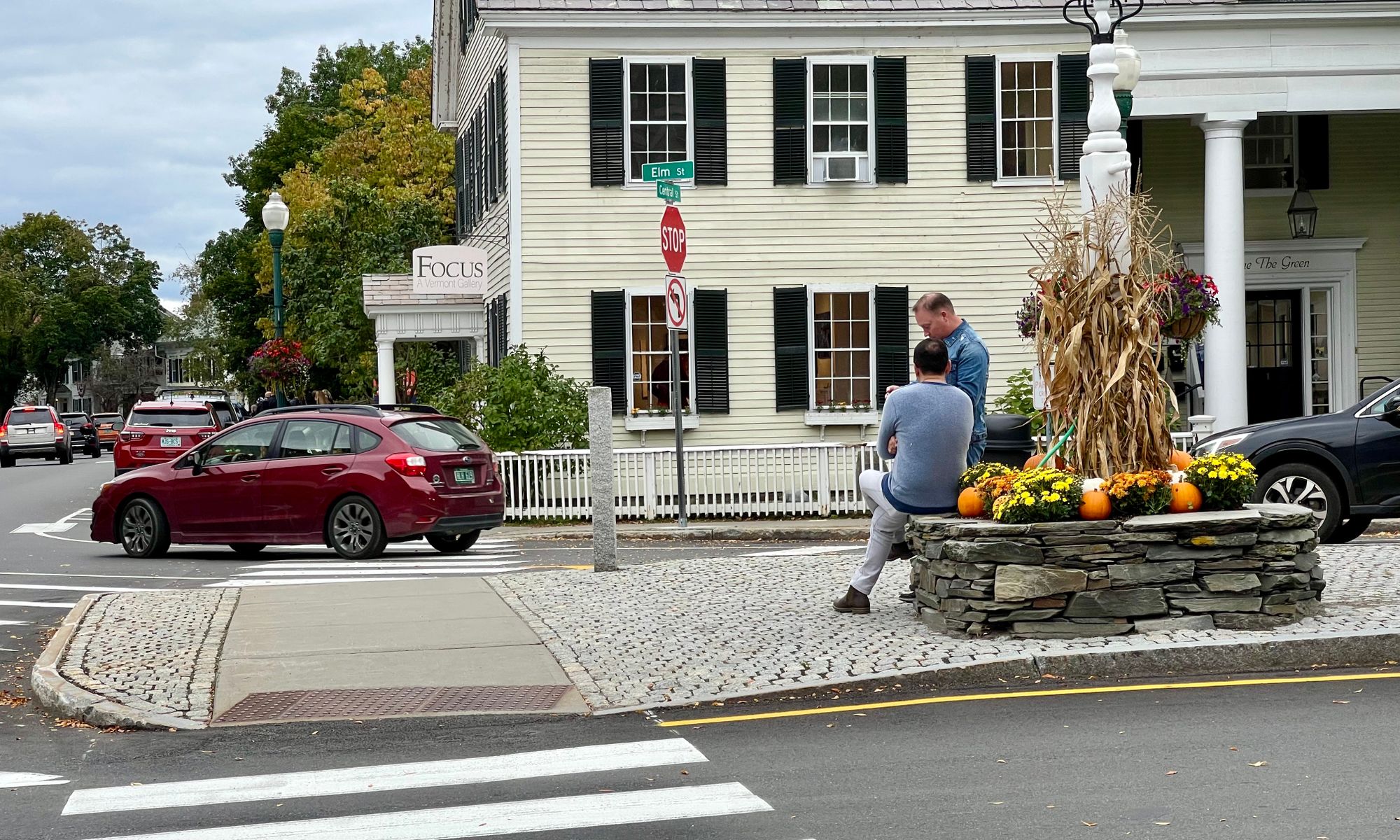
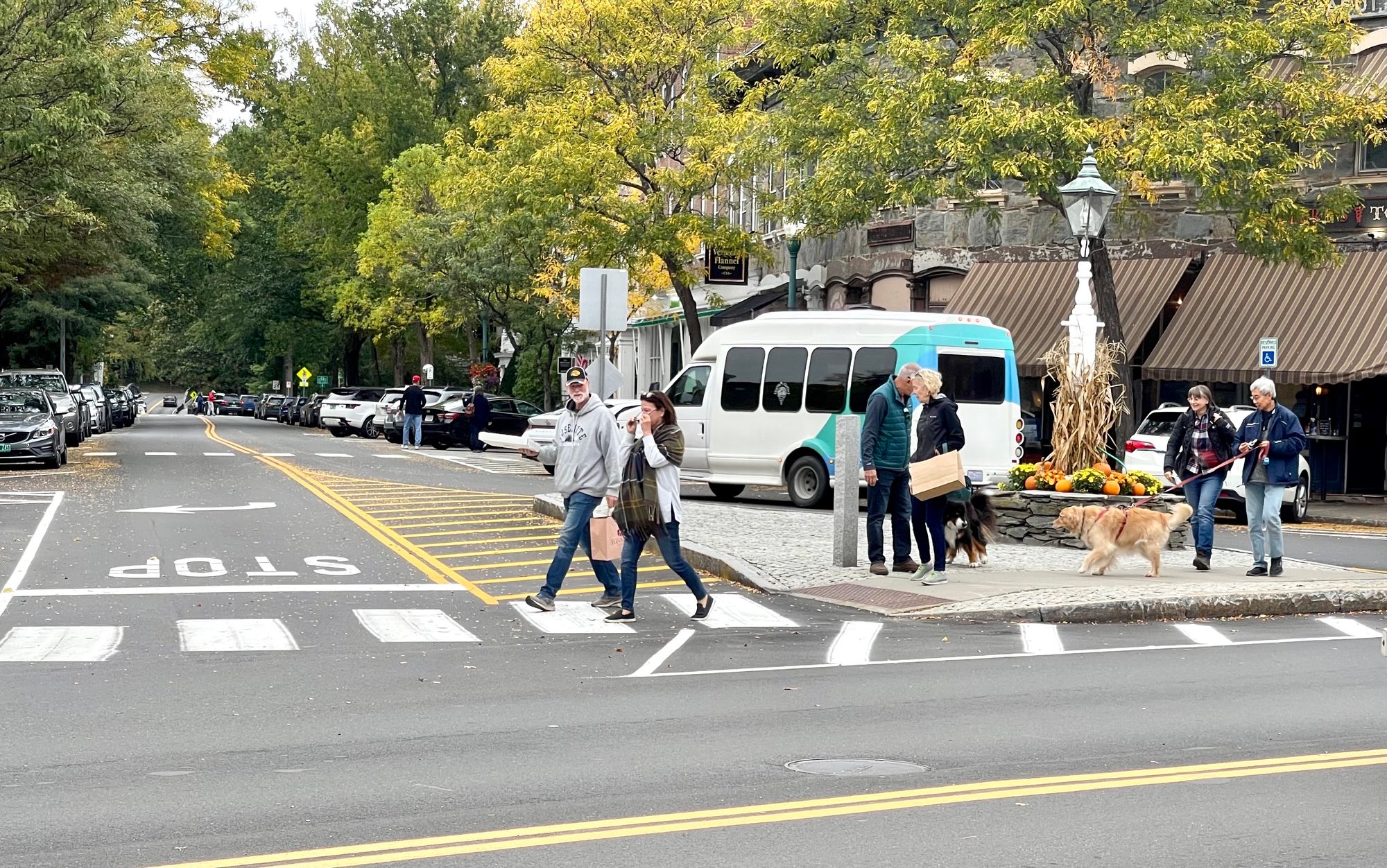
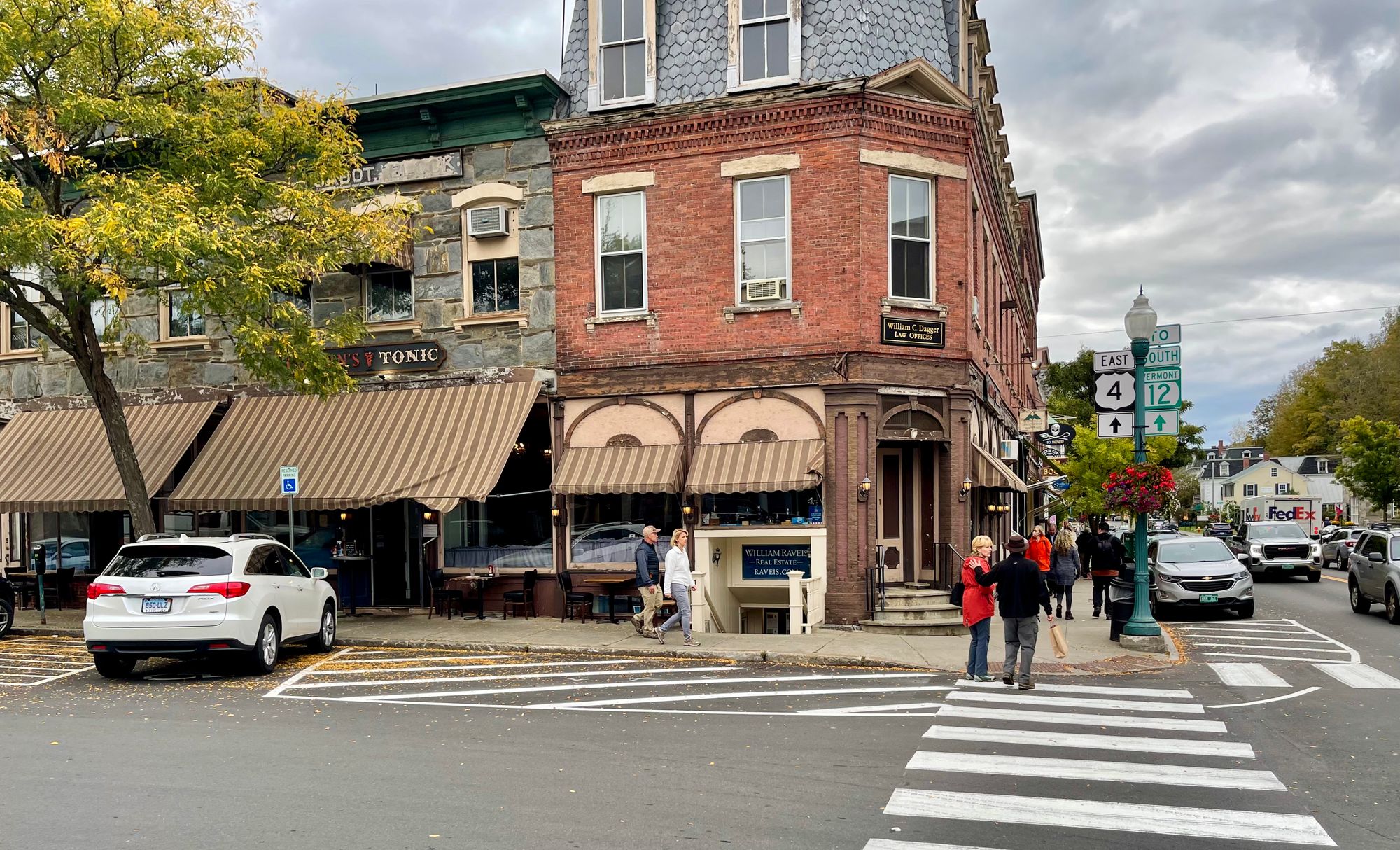
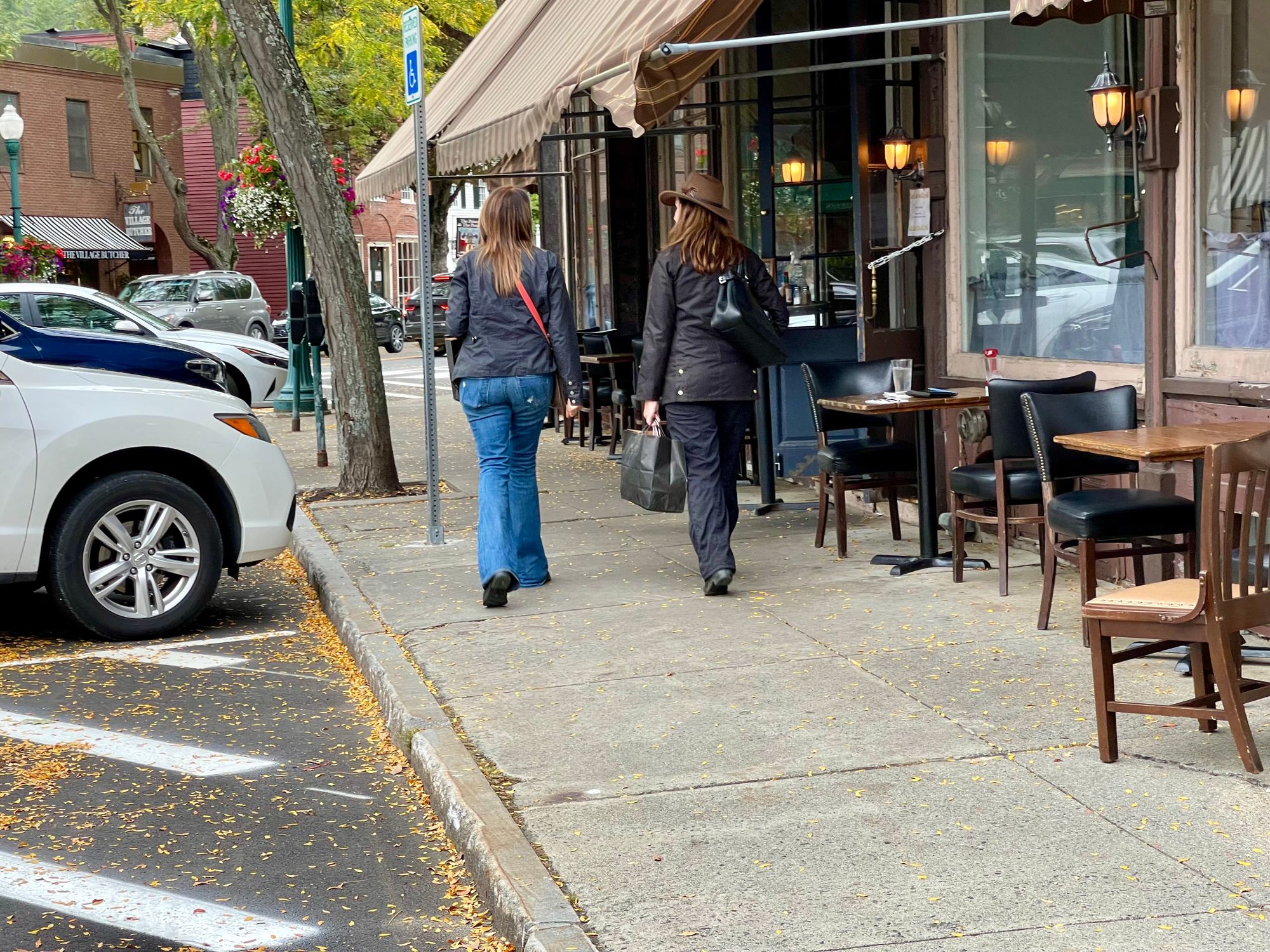
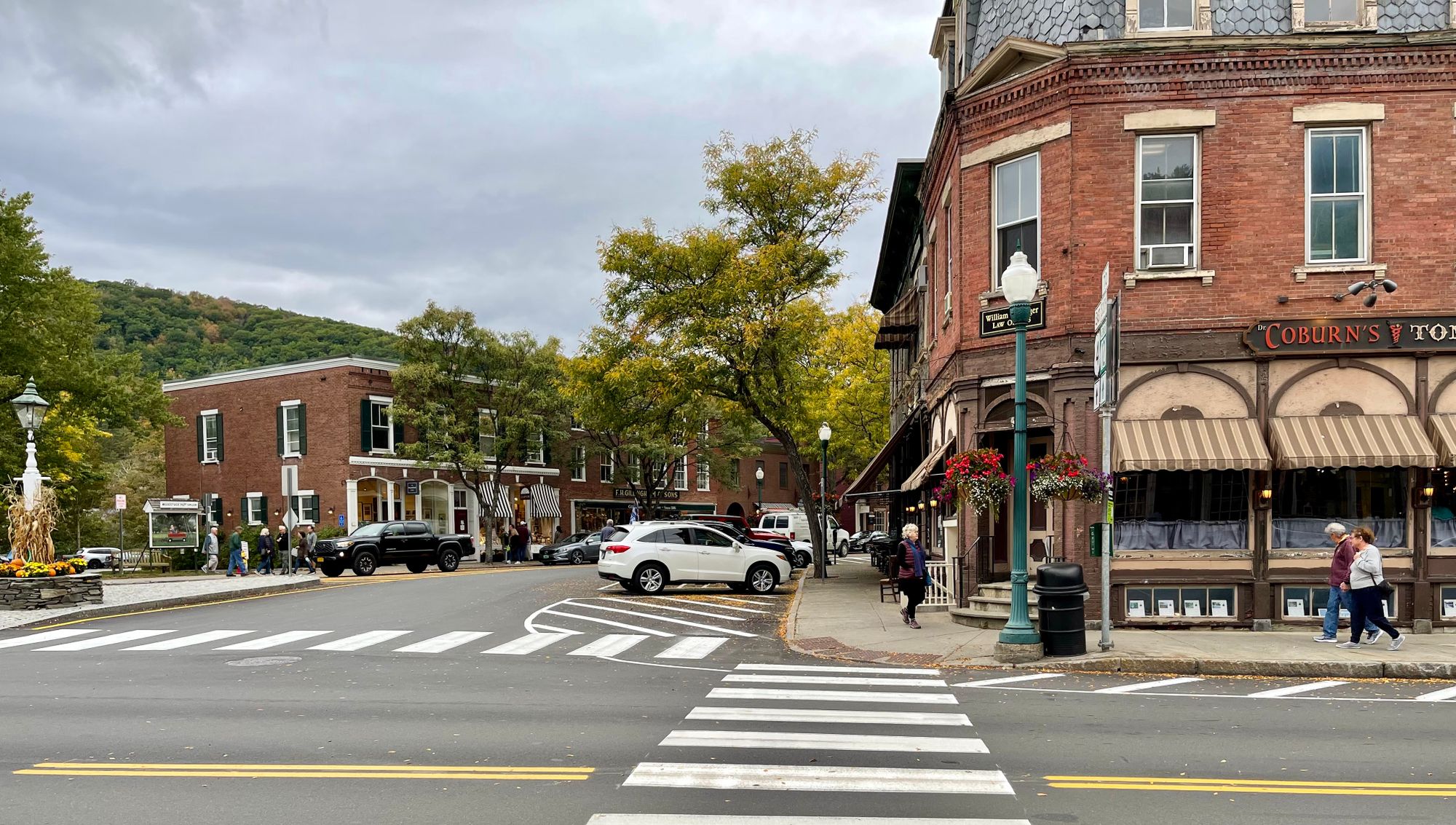
The eastern side of the intersection has the most potential to become a major anchor. It has the afternoon sun and a key site looking westward toward the Green
West side of the Main Street intersection
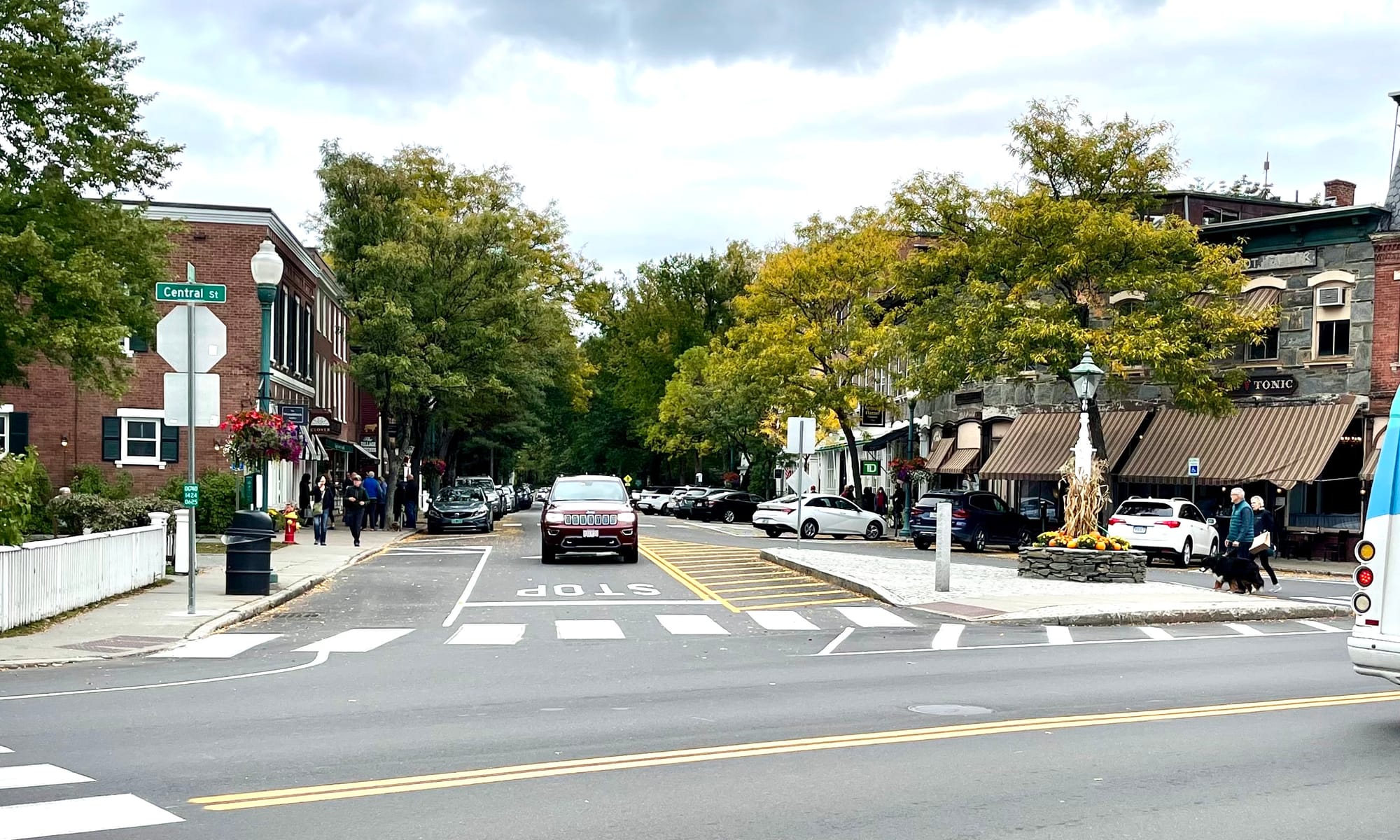
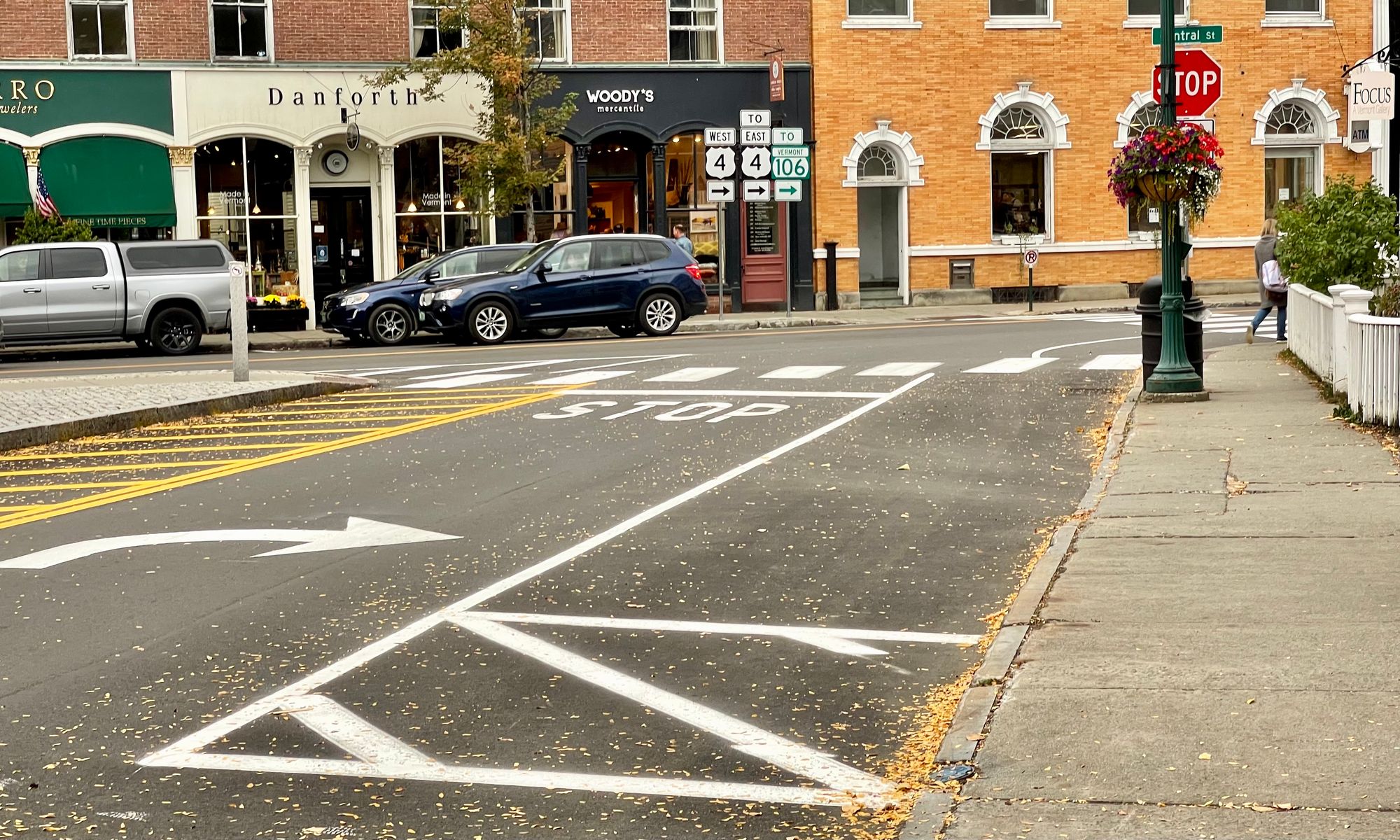
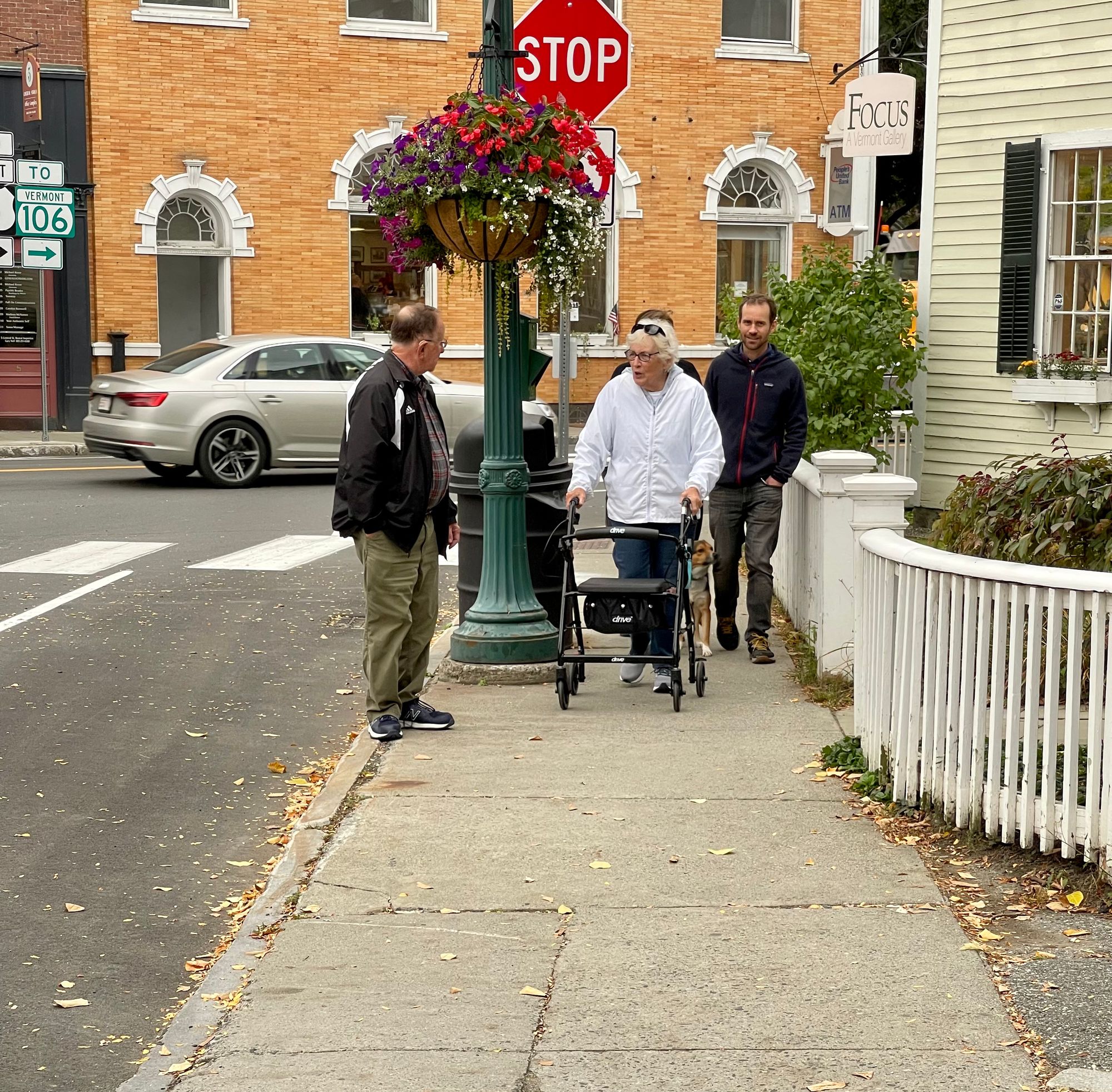
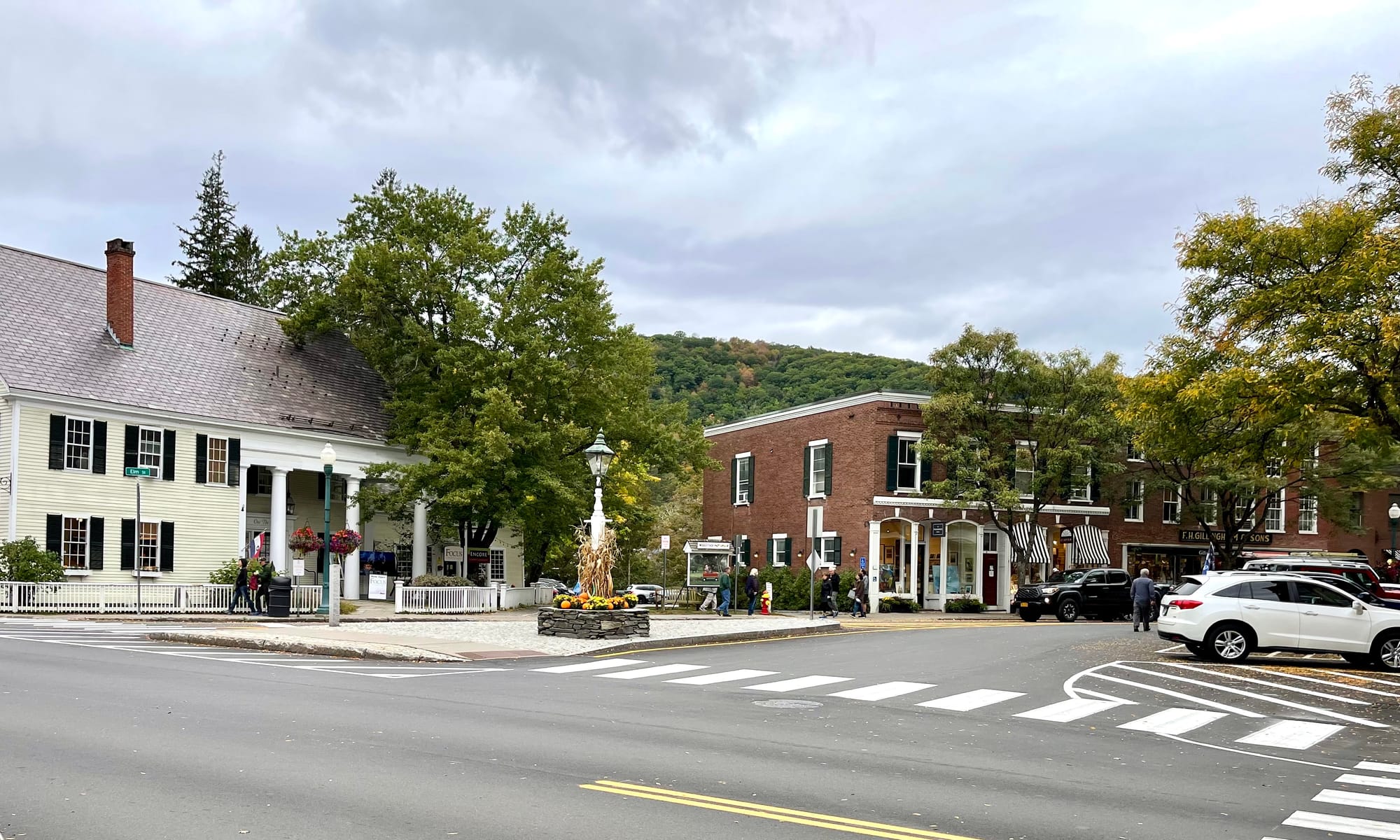
The most important store in Woodstock, the General Store (since 1886), has a narrow sidewalk and a few parking spaces. It needs more going on outside to celebrate and highlight it.
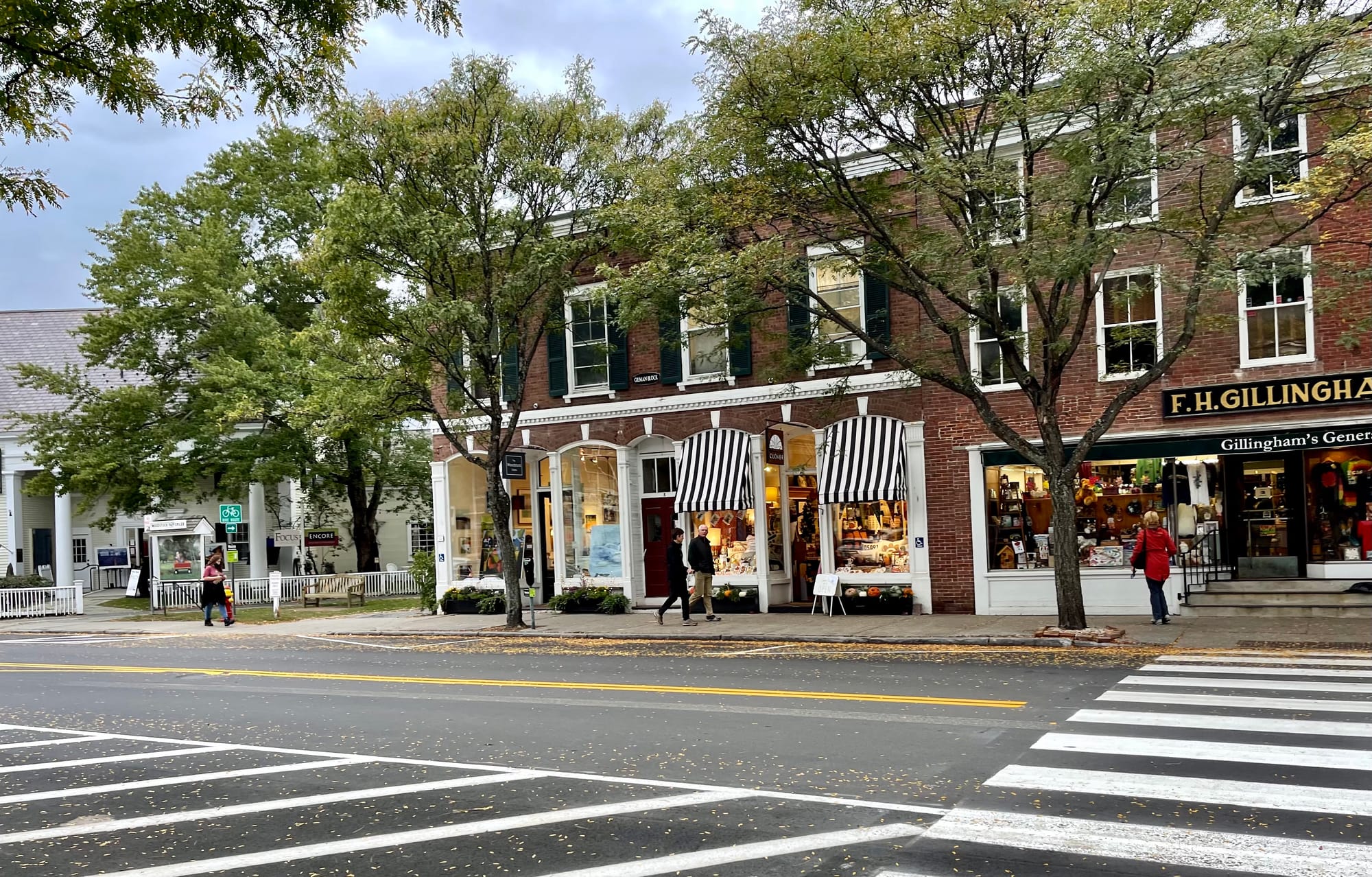
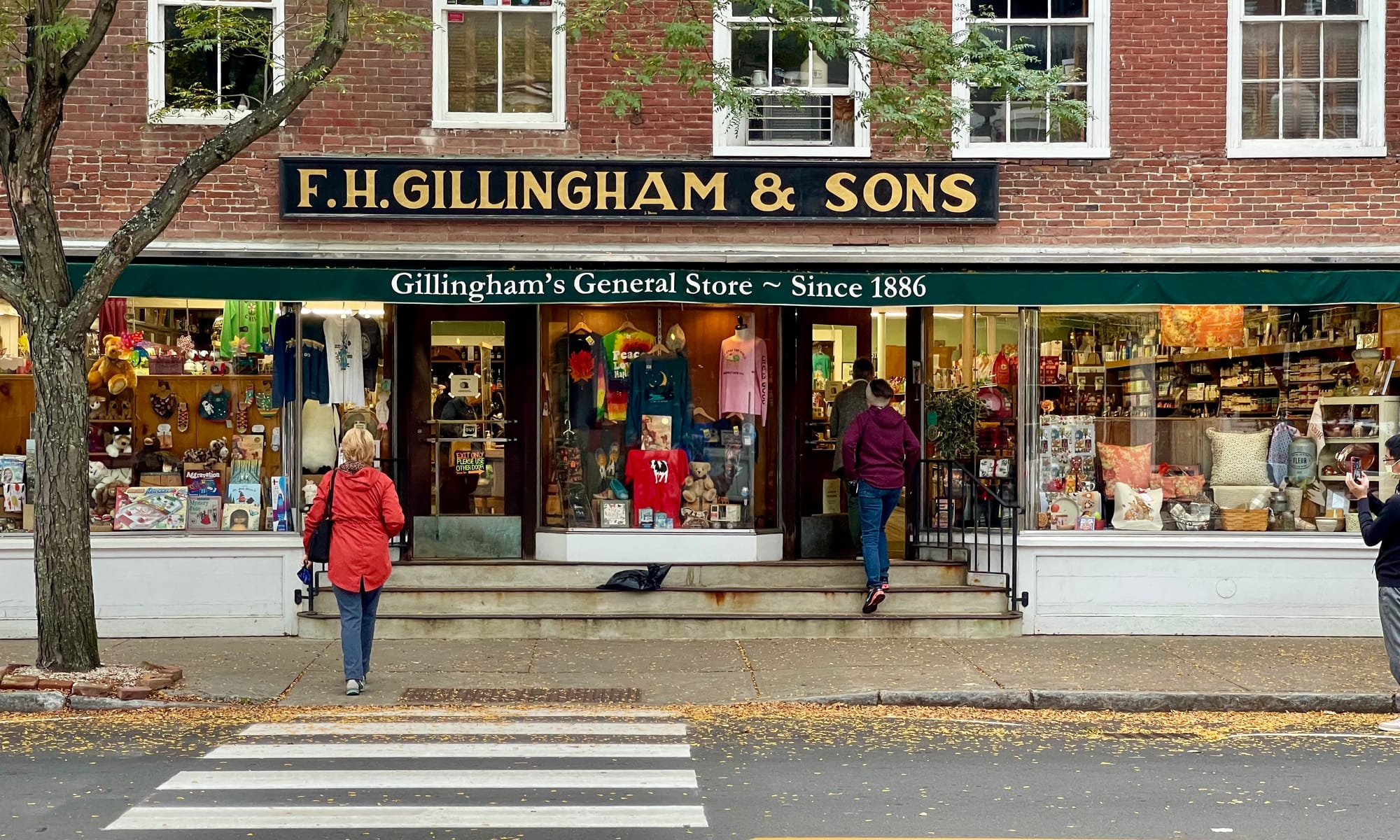
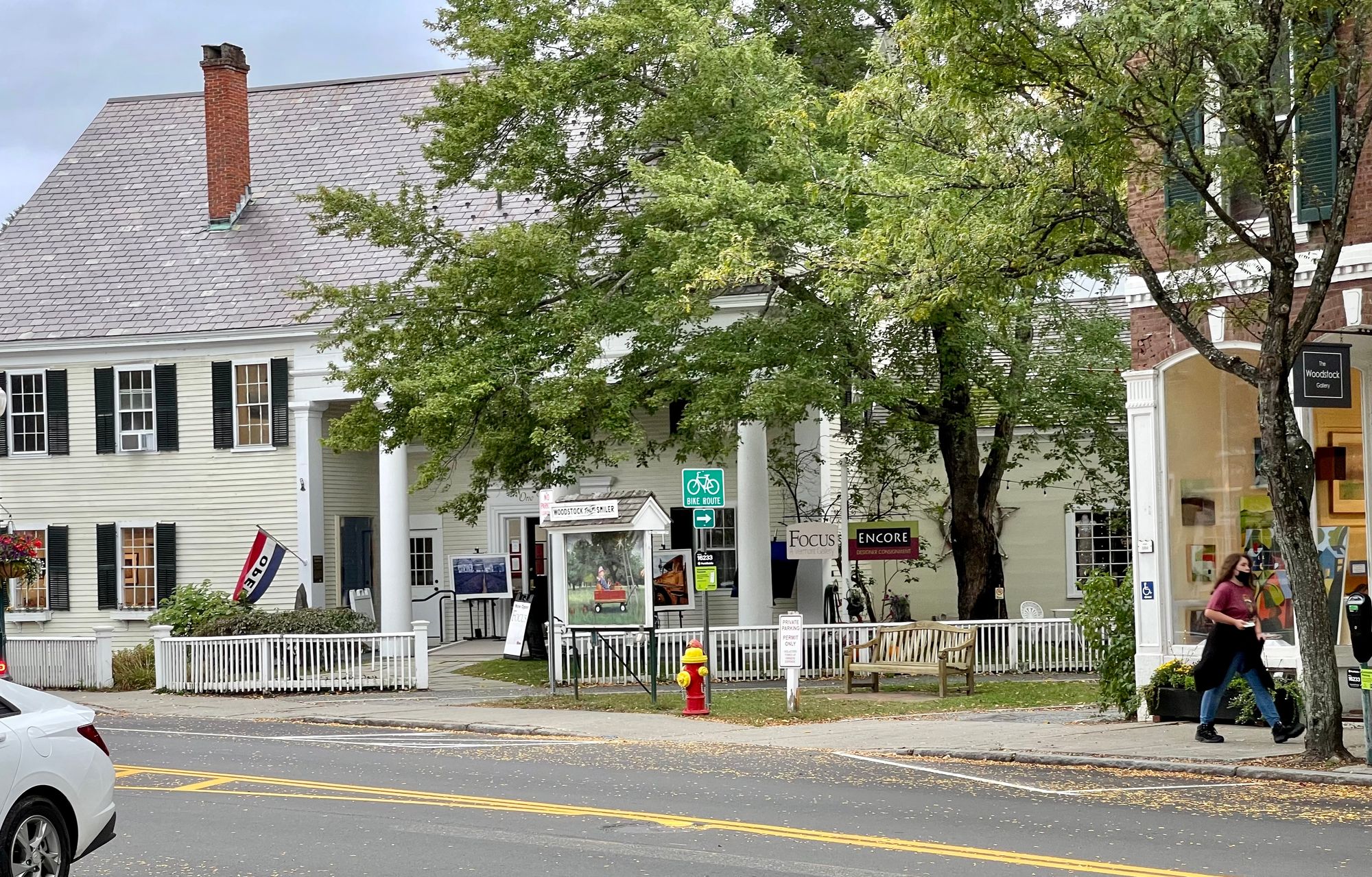
Turning the Village Green Into a Square
This part of the downtown "core" has overly wide streets with narrow sidewalks and little evidence of what is going on around the Green. There is no sense of the opportunities available for exploring the nearby places such as the river and covered bridge that are a stone's throw away, the library, the Woodstock Inn, and great places to the south and behind the main center.
Turning the Green into a more active destination encompassing the entire space would be a game changer. This can be done by transforming it from a passive field into a grassy "square" where something is always happening. The two streets along its sides can be narrowed to widen sidewalks and increase sidewalk life, and more daily market activity can be introduced along with other kinds of programming.
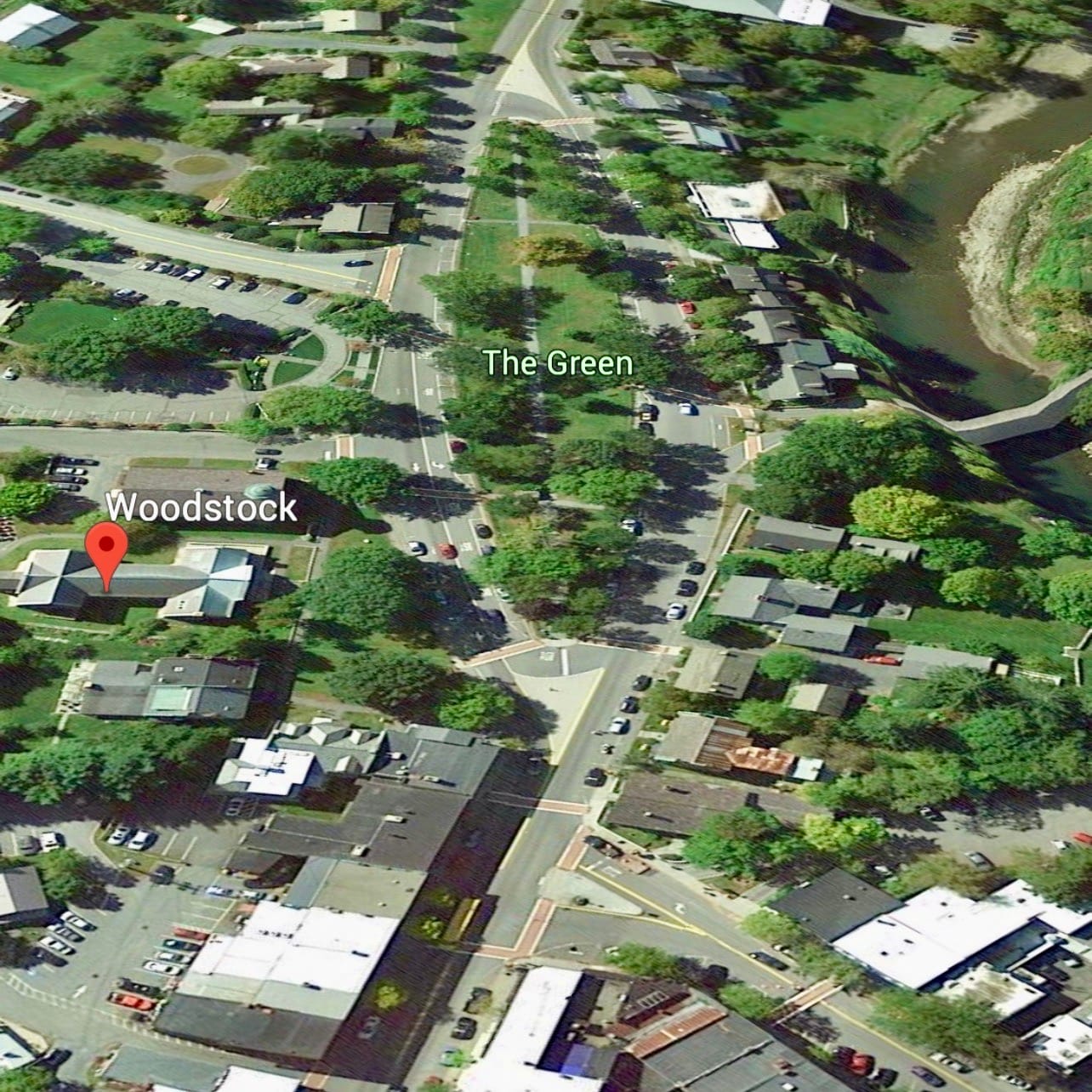
The Green is set among overly wide roads and over-sized turn lanes with narrow sidewalks.
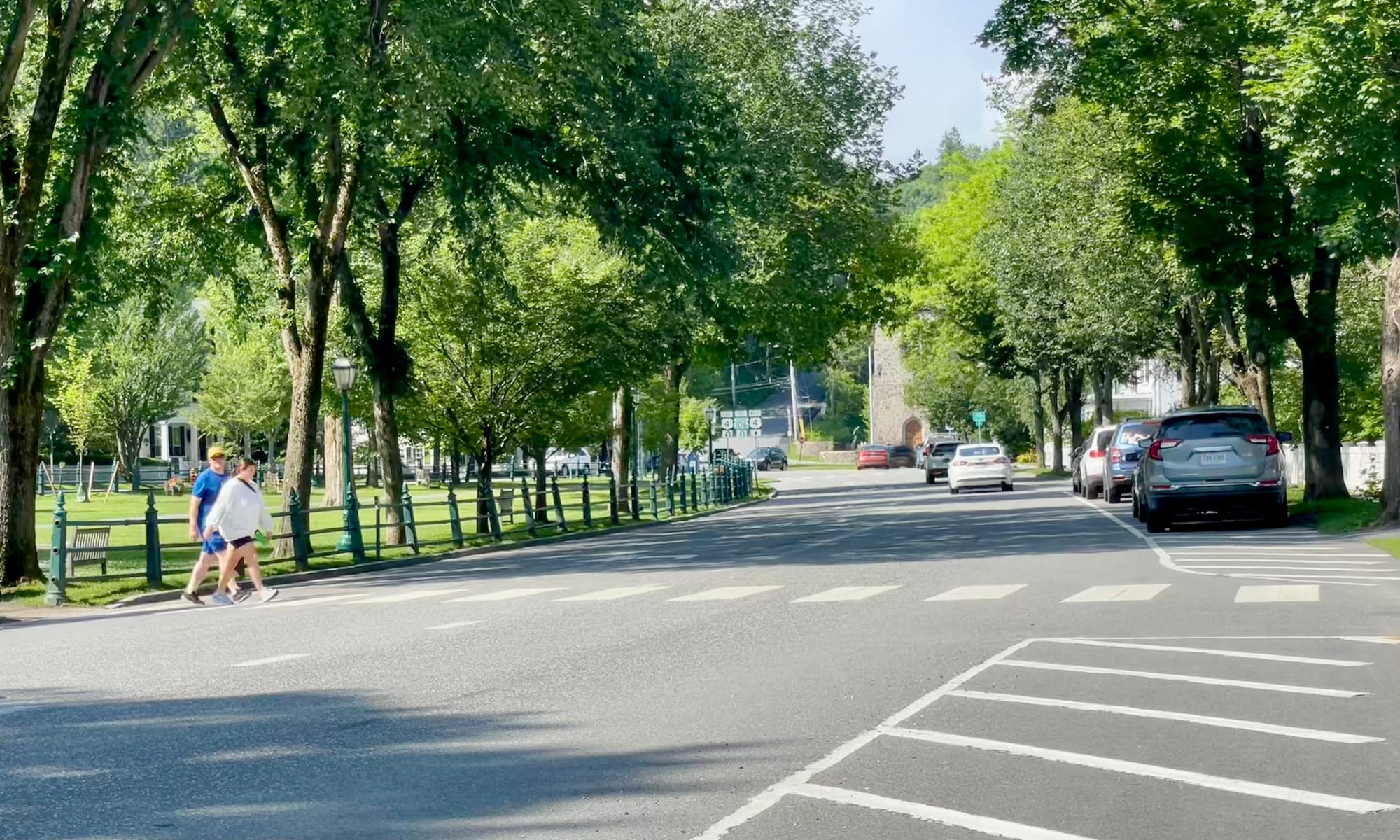


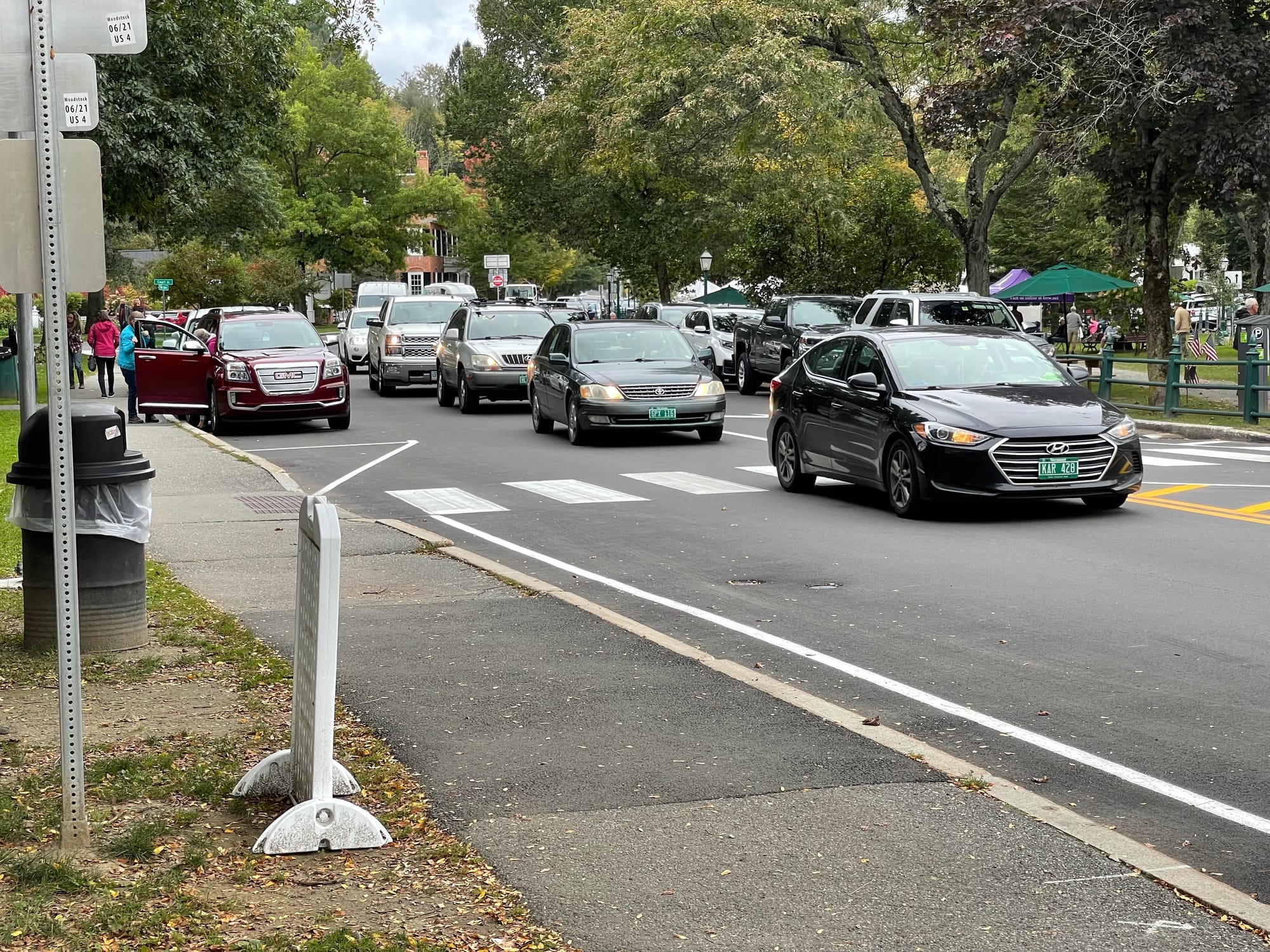
One particularly wide turn lane on the main road leads to the single-lane covered bridge...showing the disconnect between the road-building agenda and a local asset which would be better served by a narrow path meant to draw mostly pedestrians and bicycles and only the occasional car.
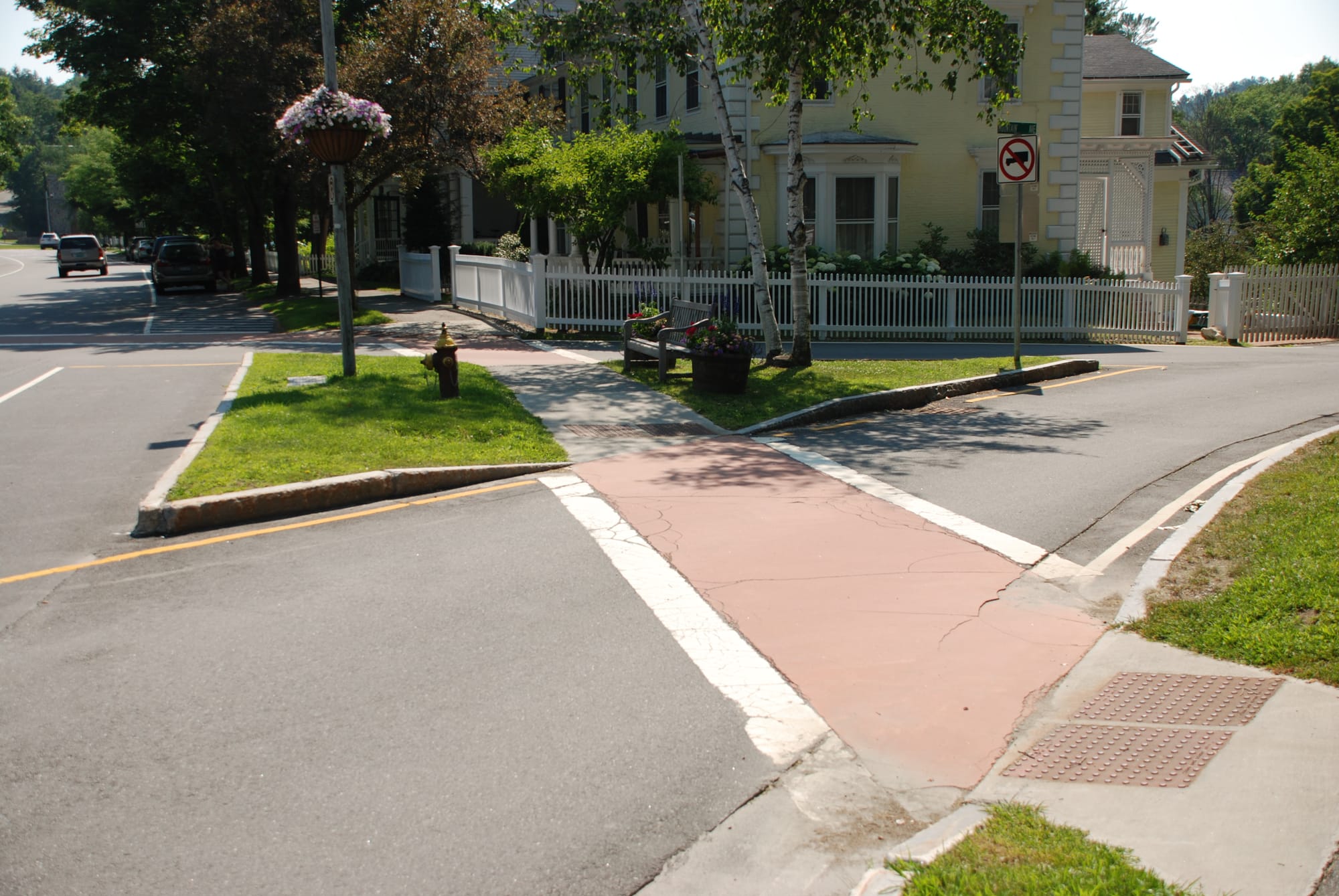
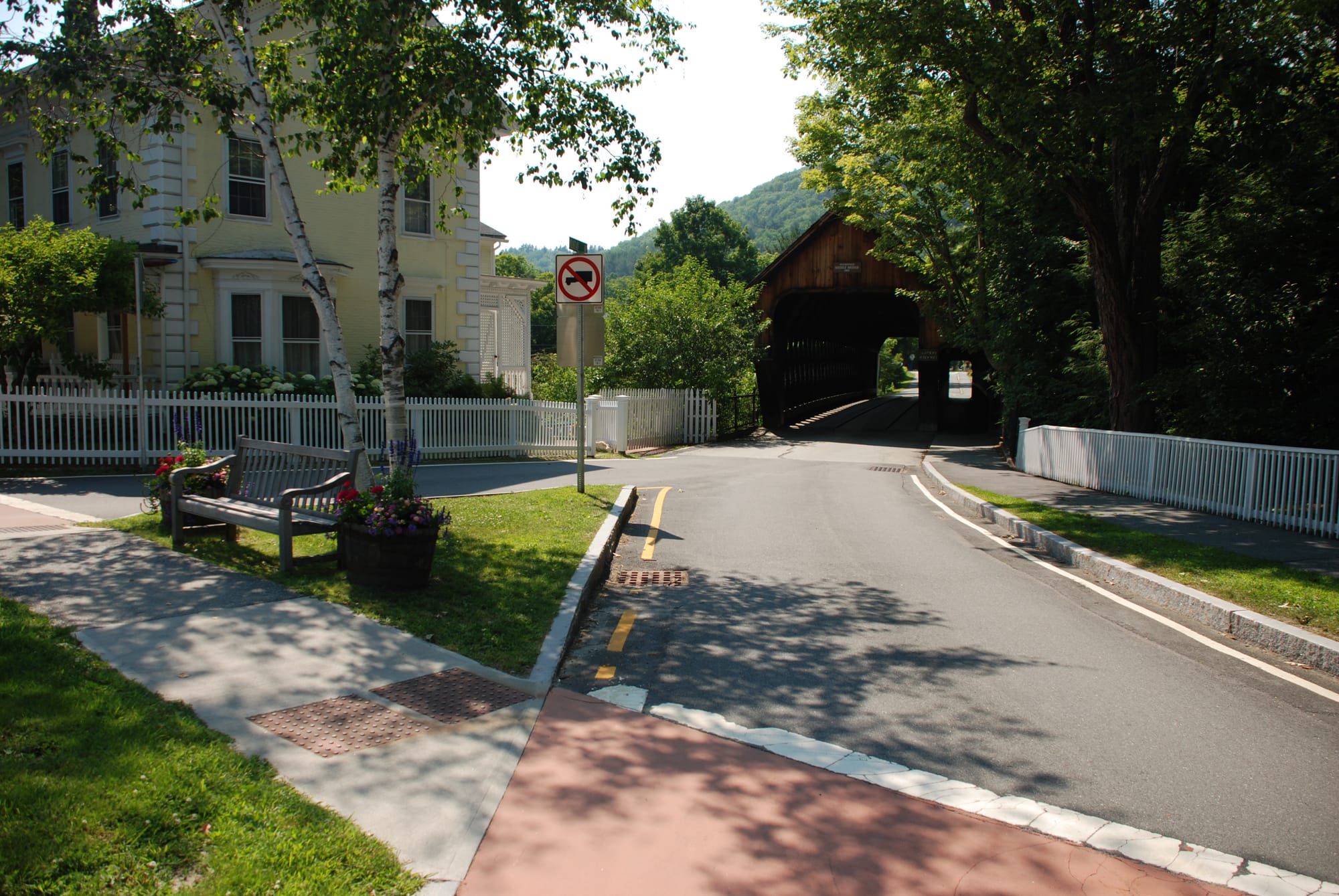
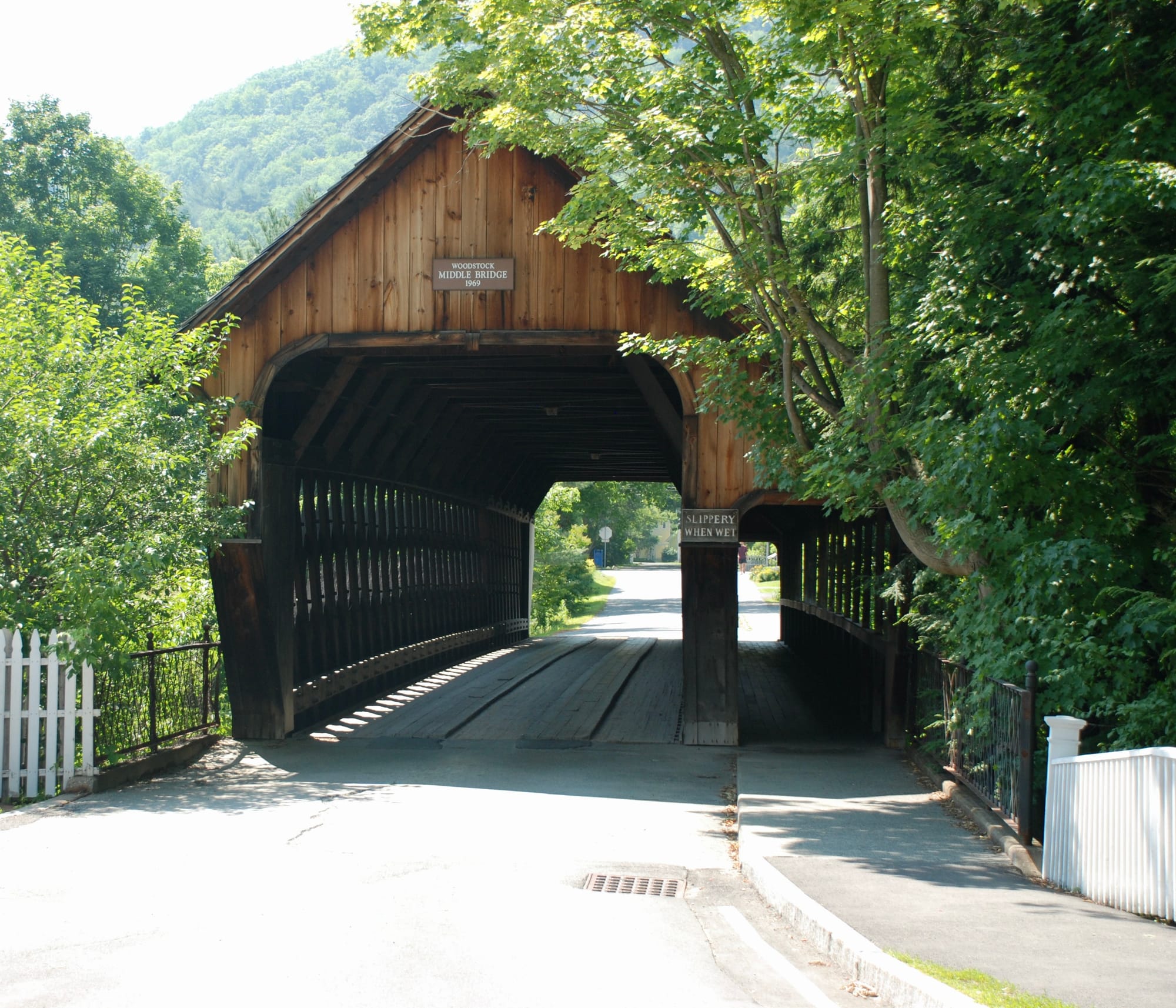
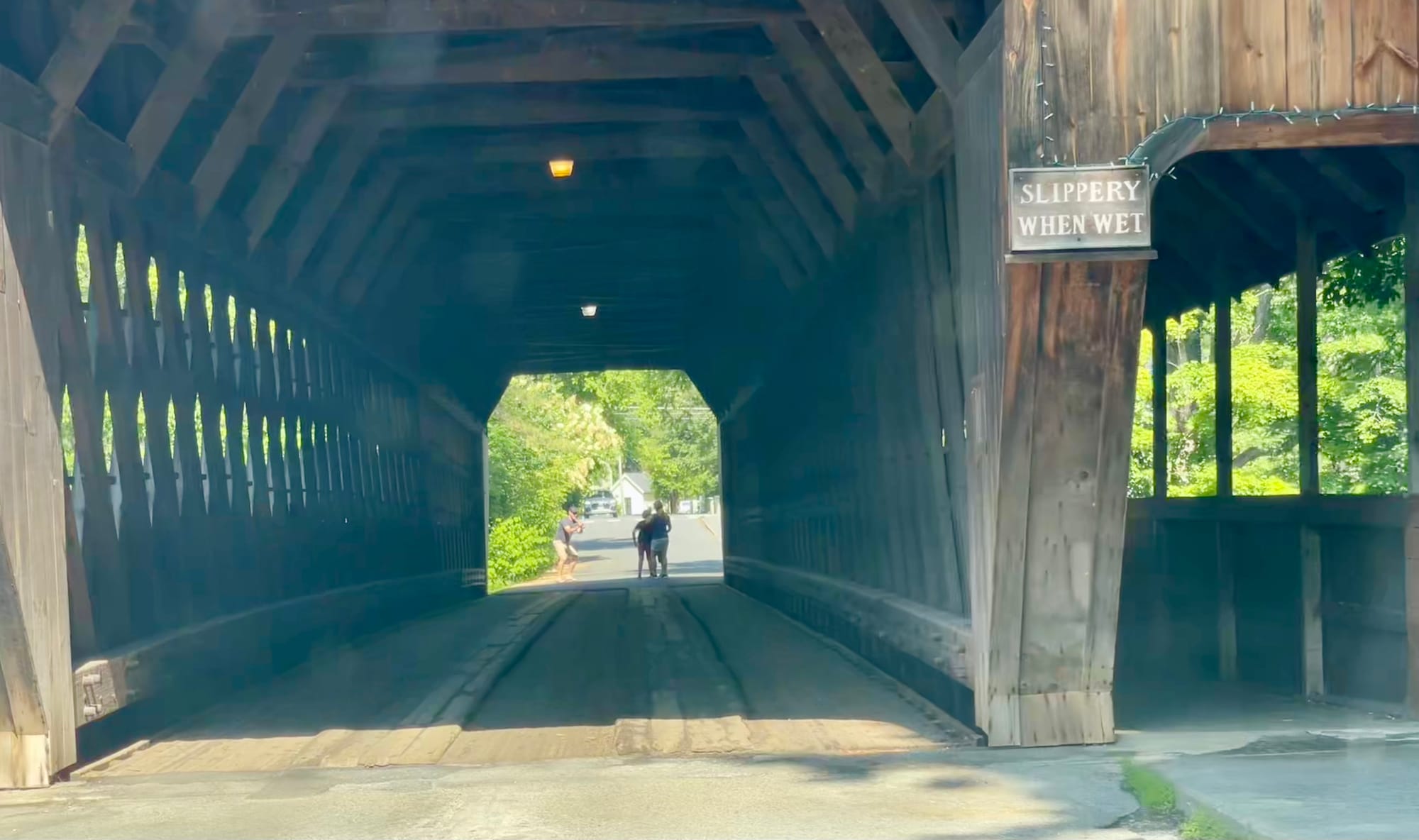
The Green, not unlike most New England town greens, is a passive space, except during the weekly seasonal market. It can be significantly livened up. Many communities these days are thinking of creating a more traditional central gathering place, a true town square with various things to see and do, thus giving people more reason to visit and hang around. This would be a great plan for Woodstock as well.
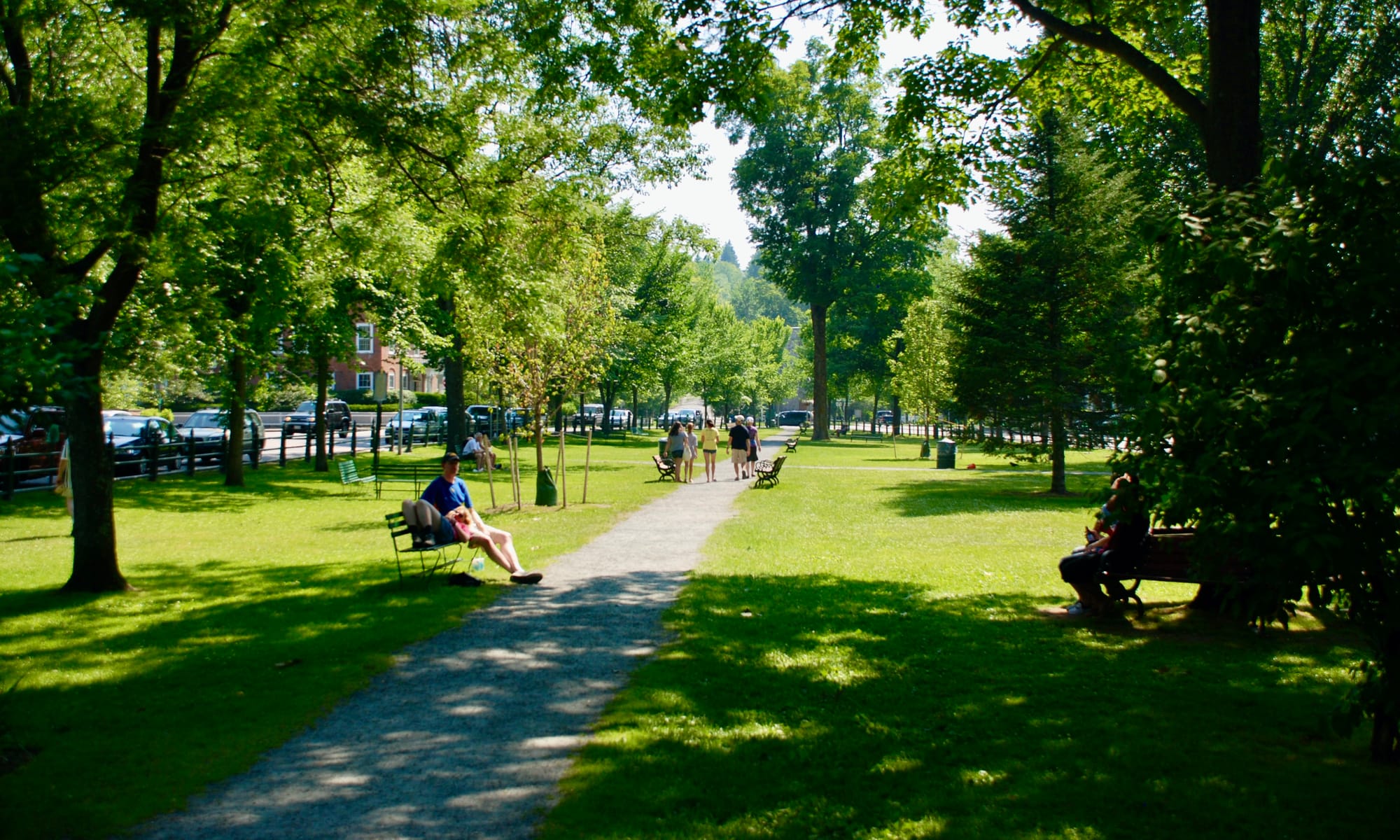
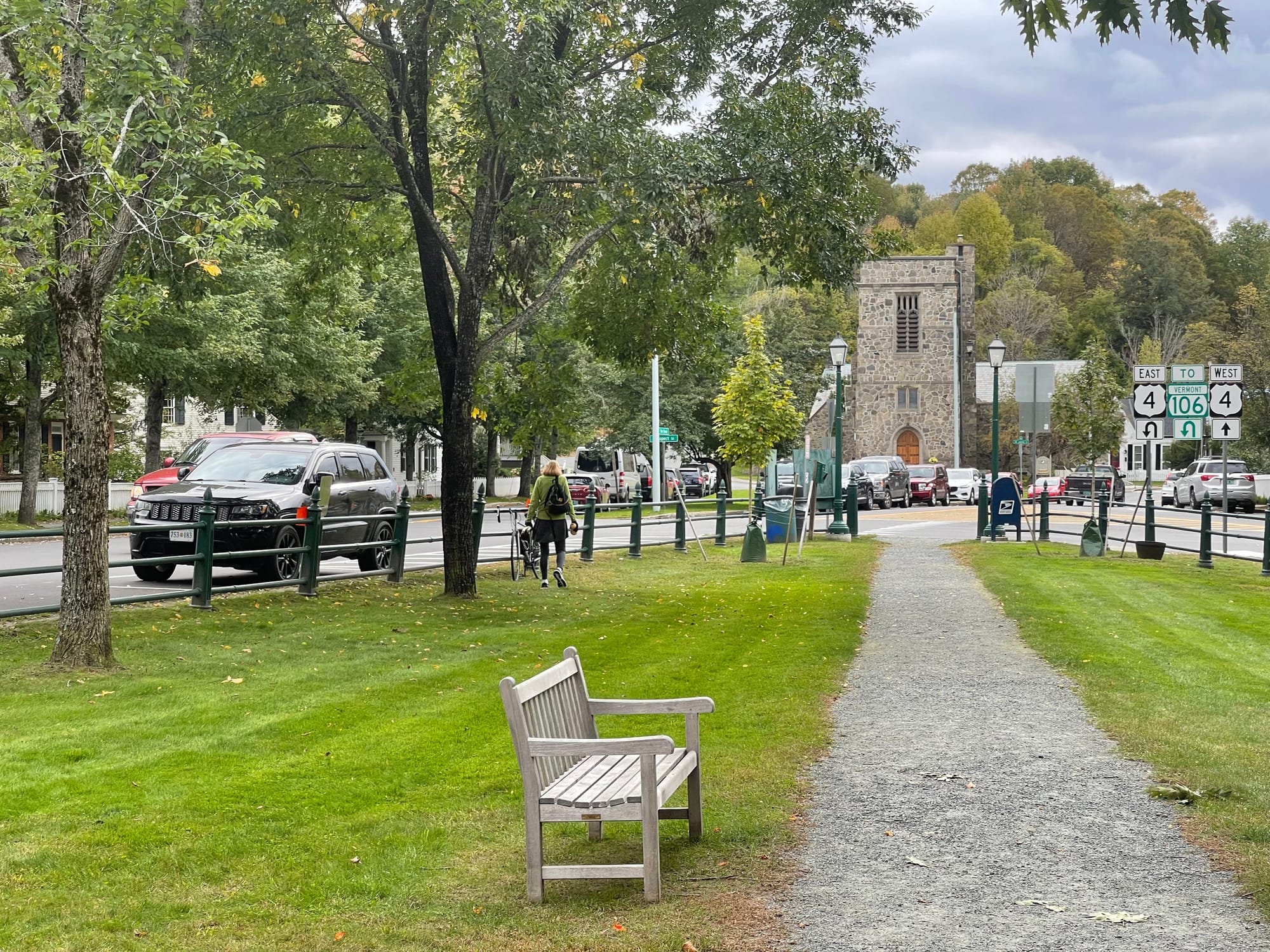
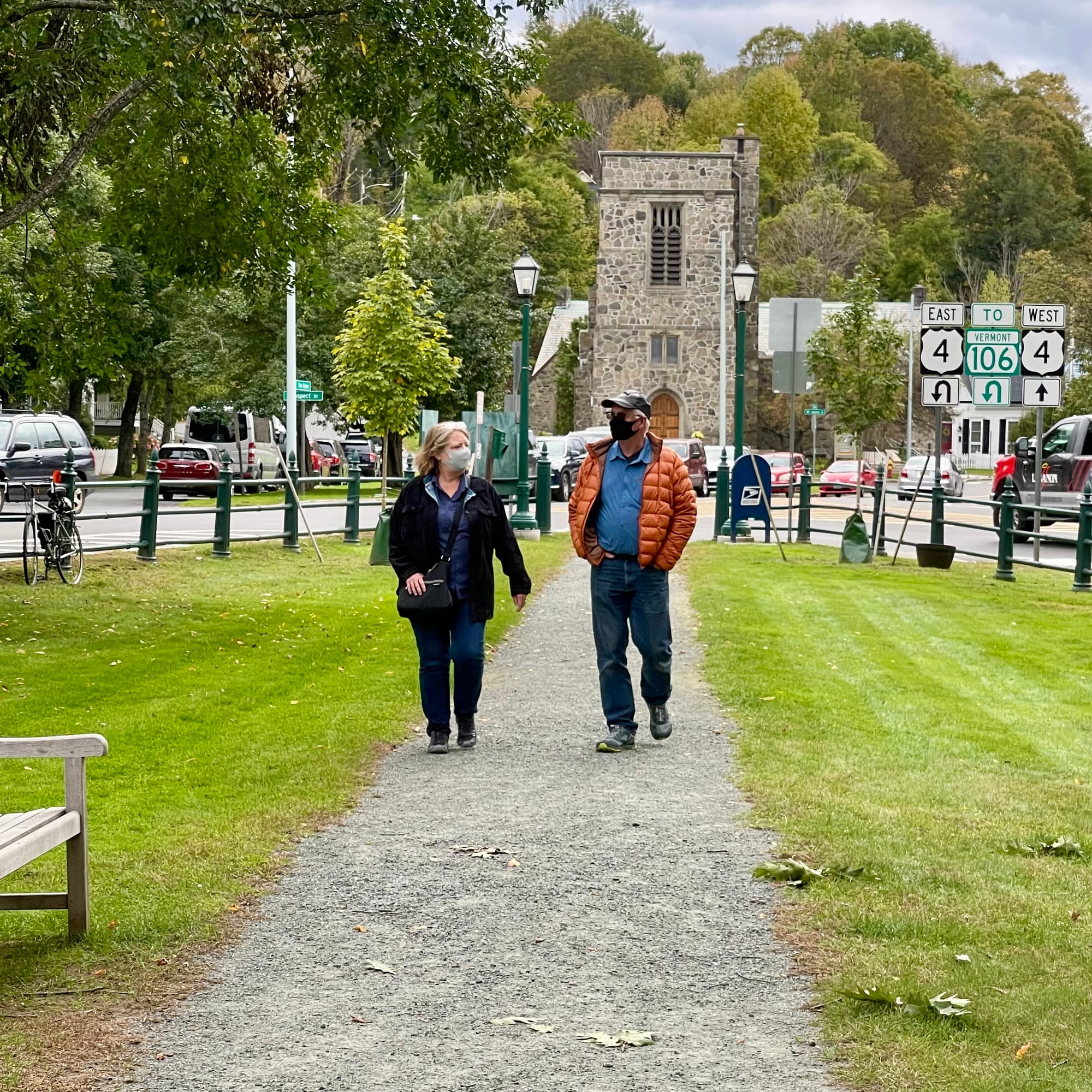
Saturday Market
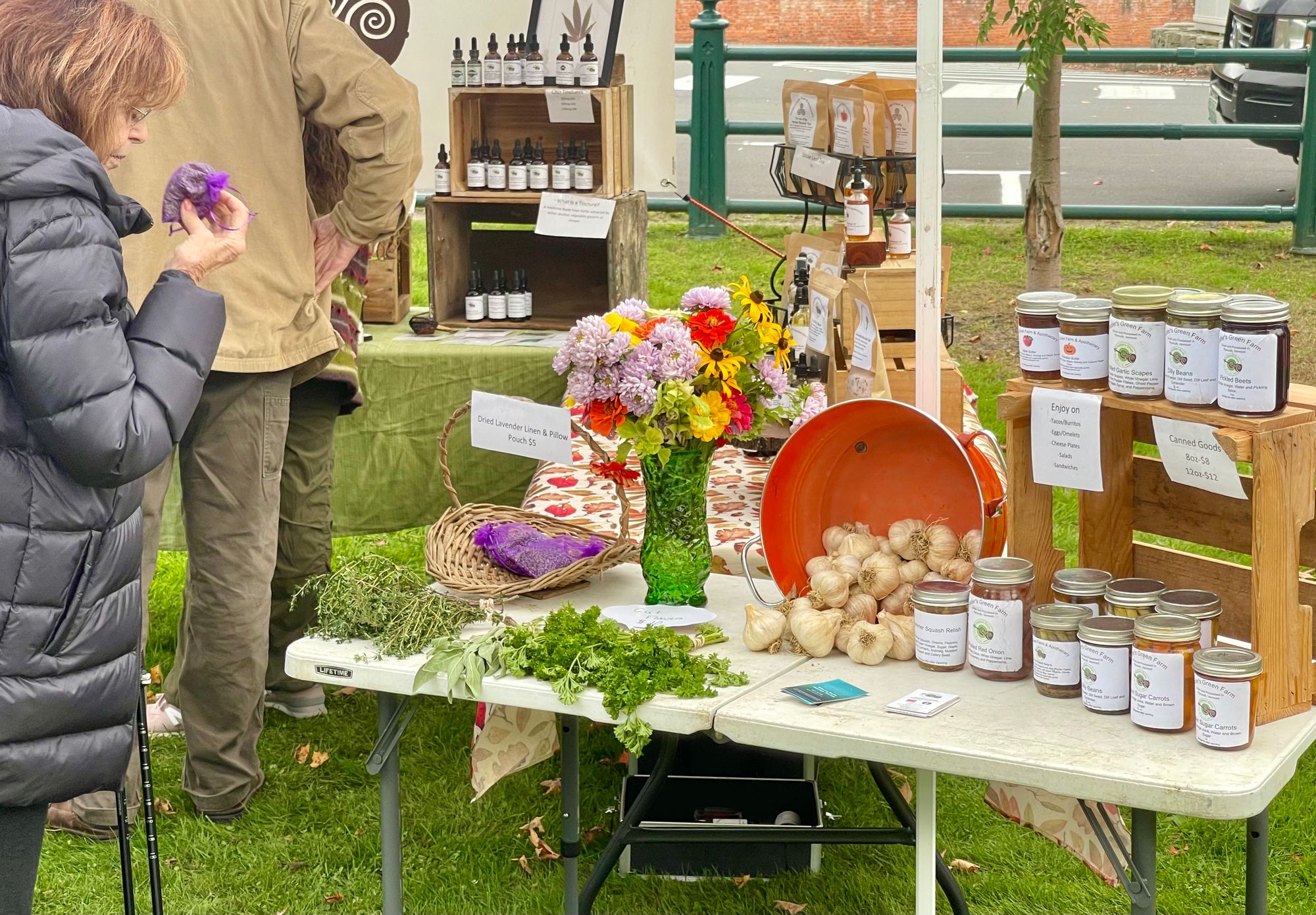
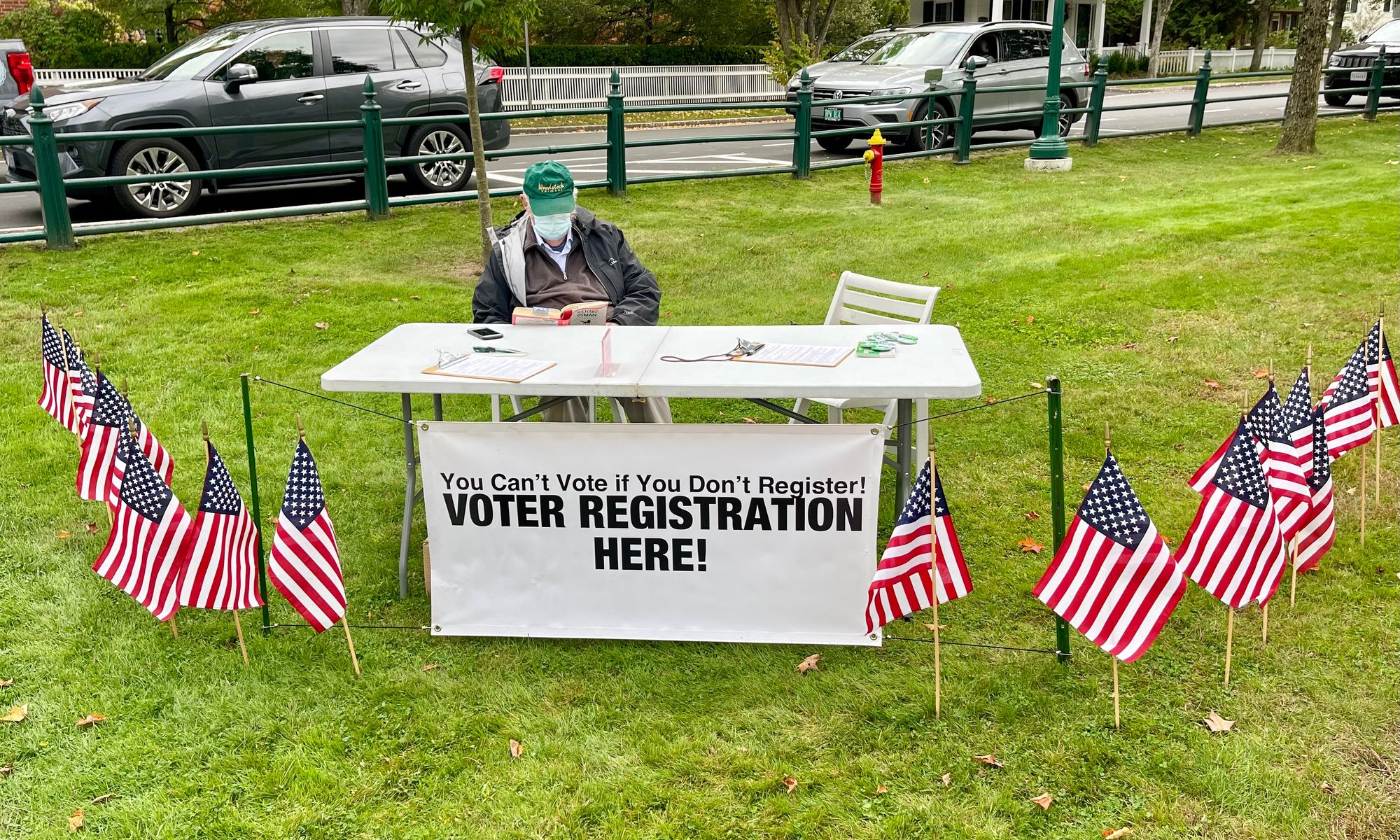
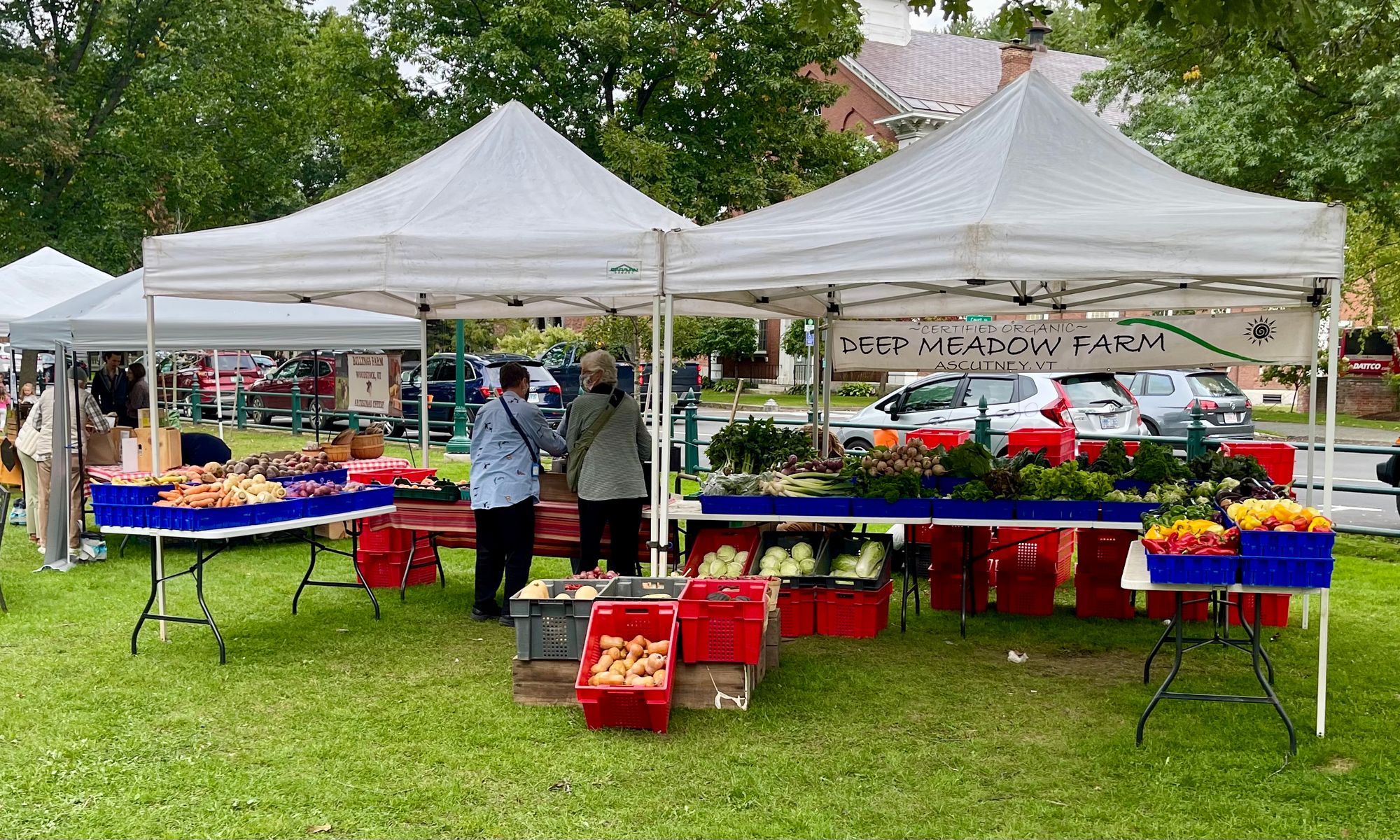
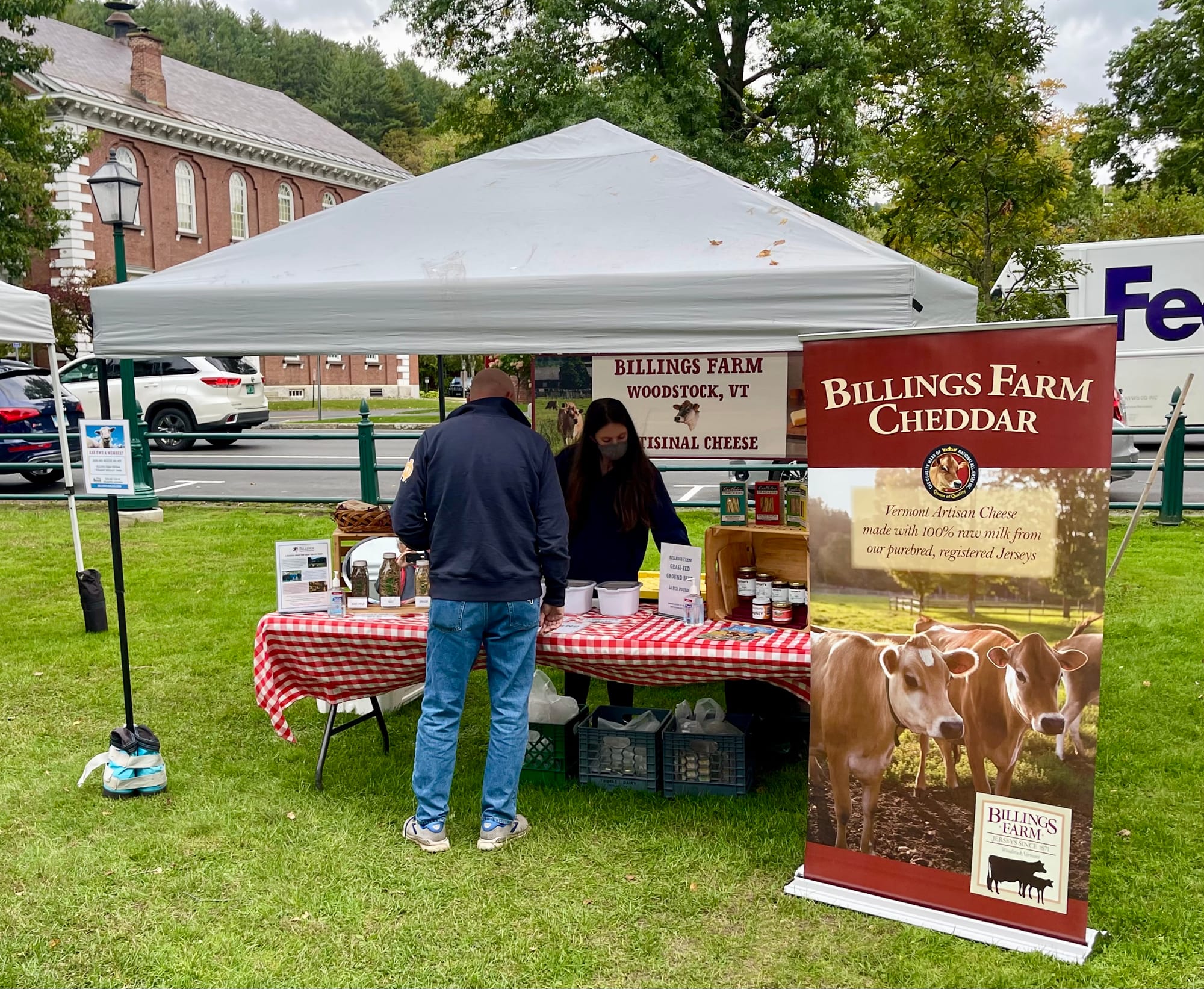
The public buildings around the Green include the library, court house, and The Woodstock Inn. They are too set back and isolated, when instead they could be better connected to the Green and add to its value.
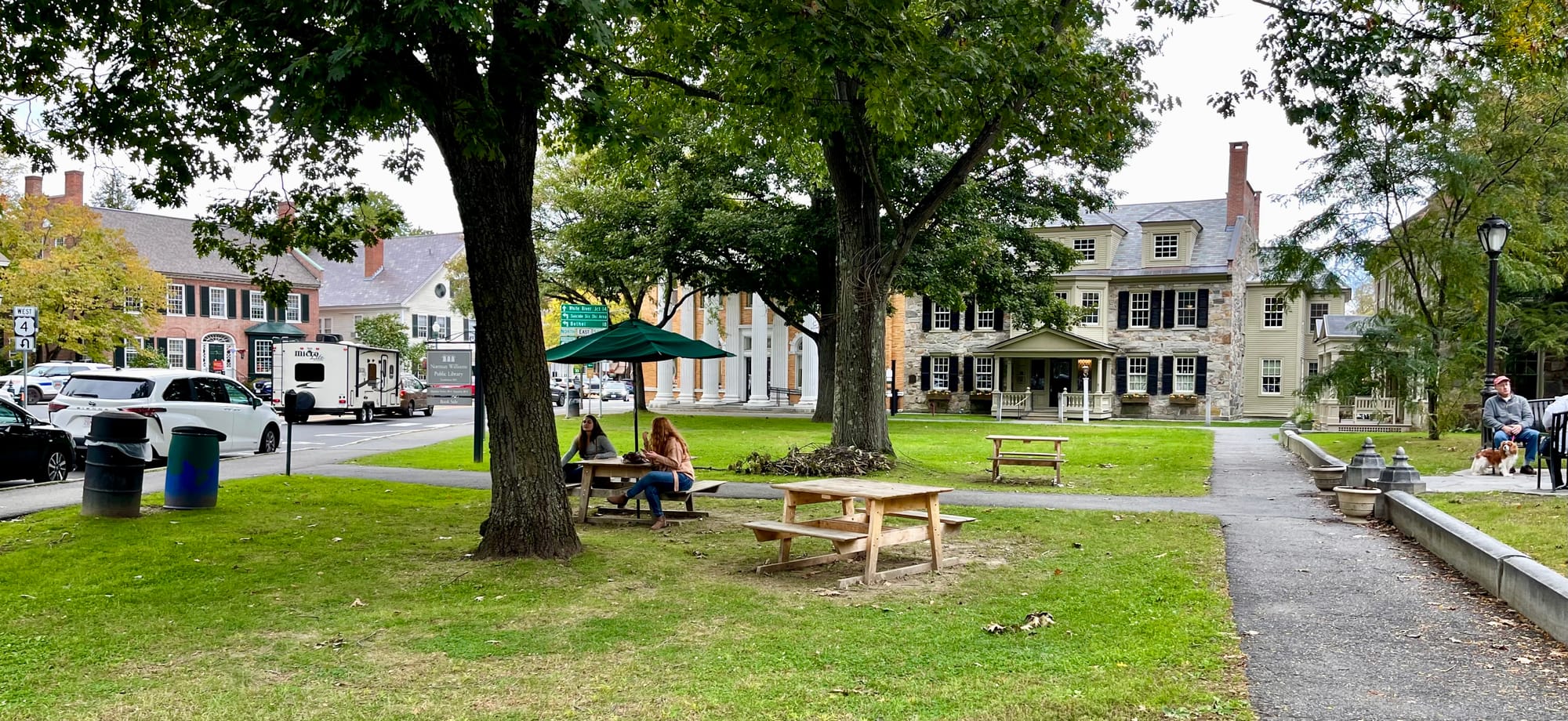
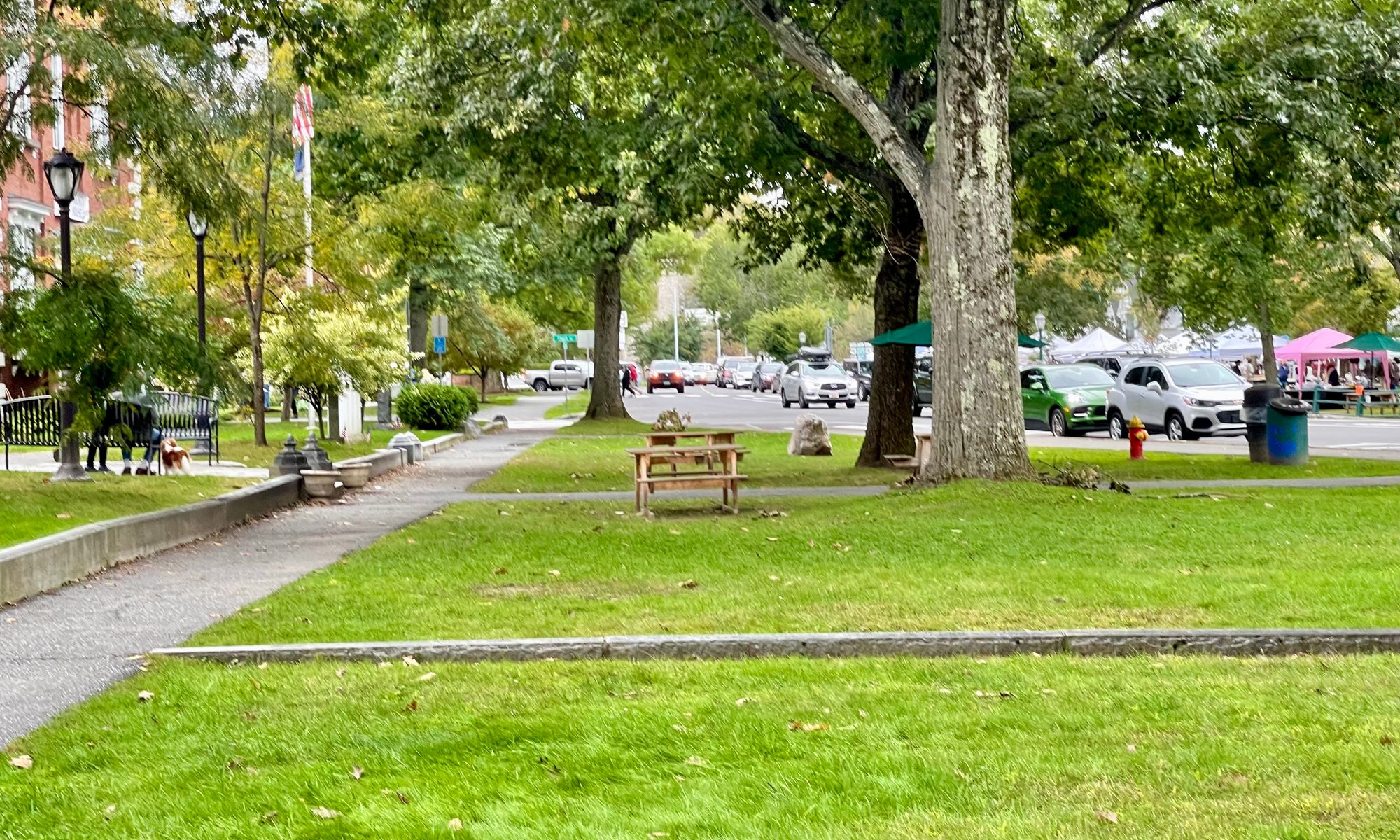
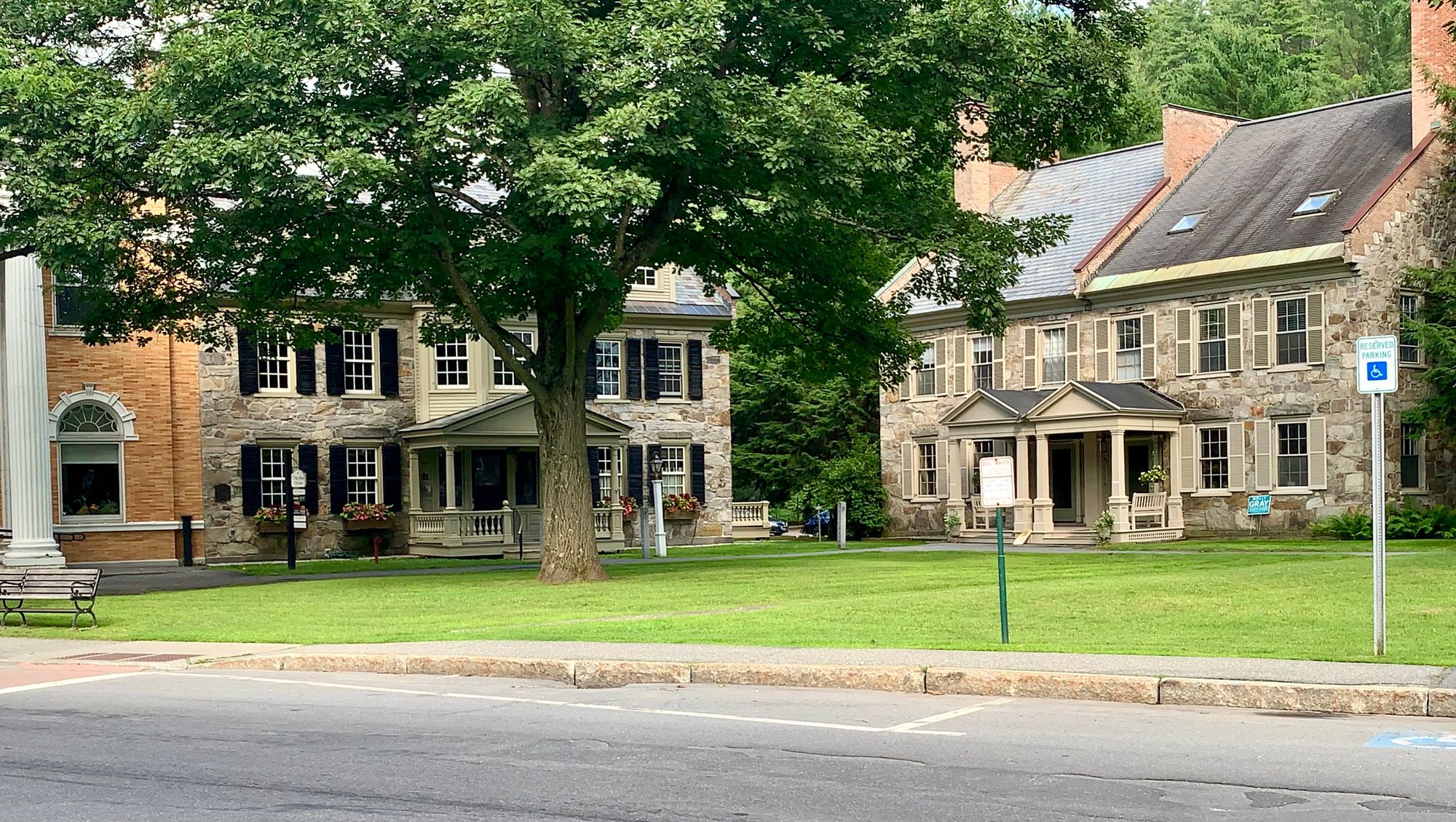
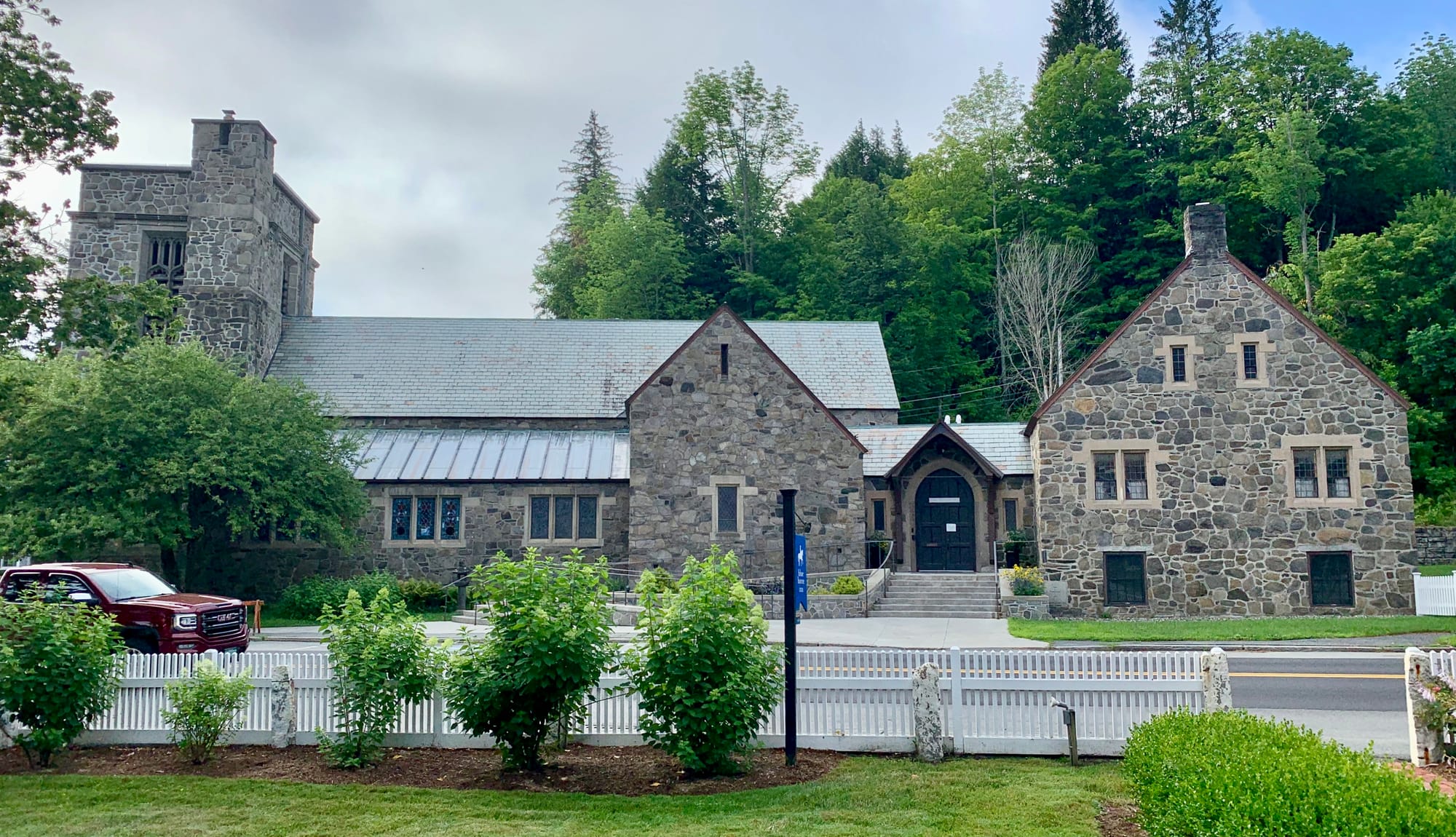
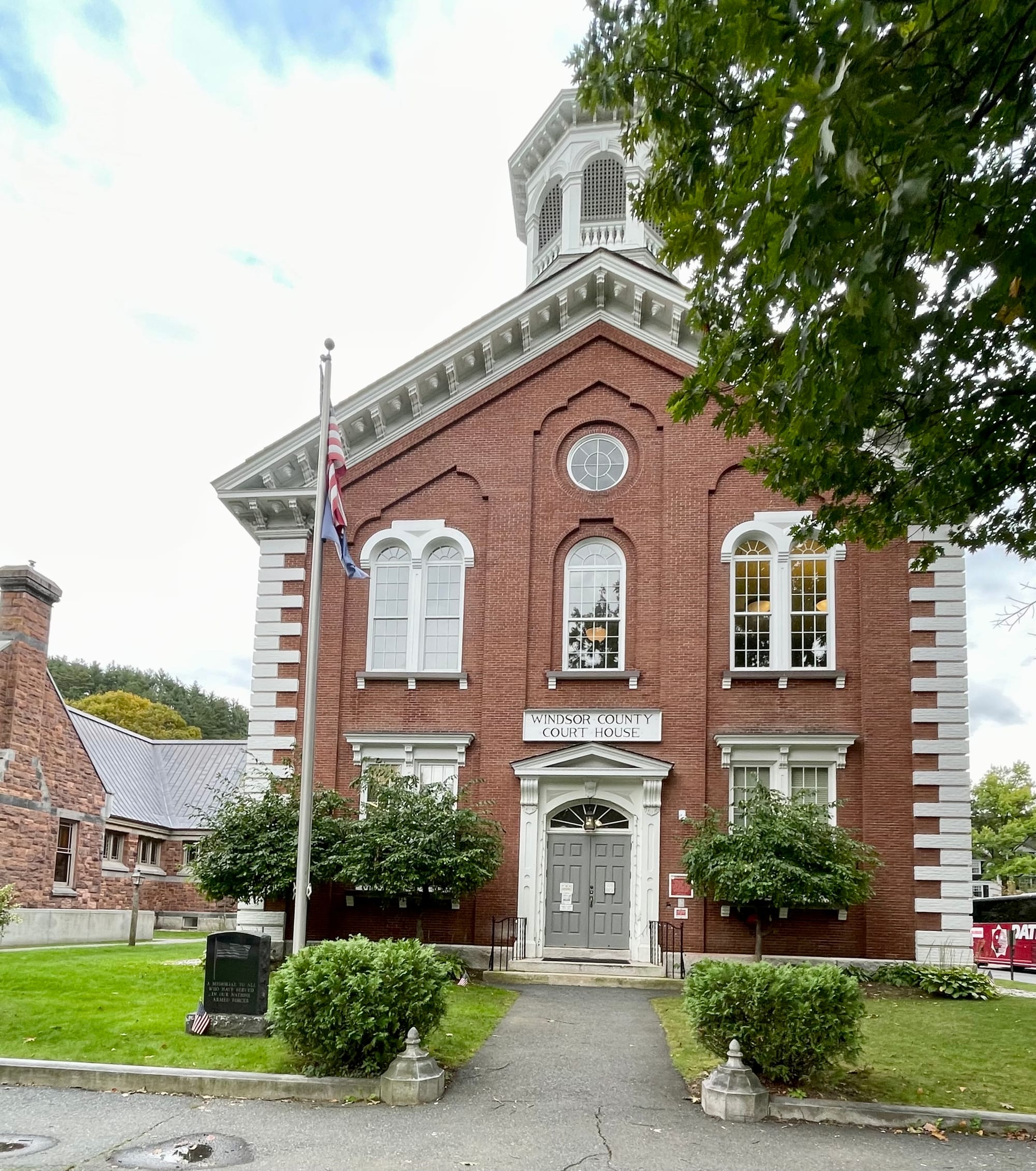
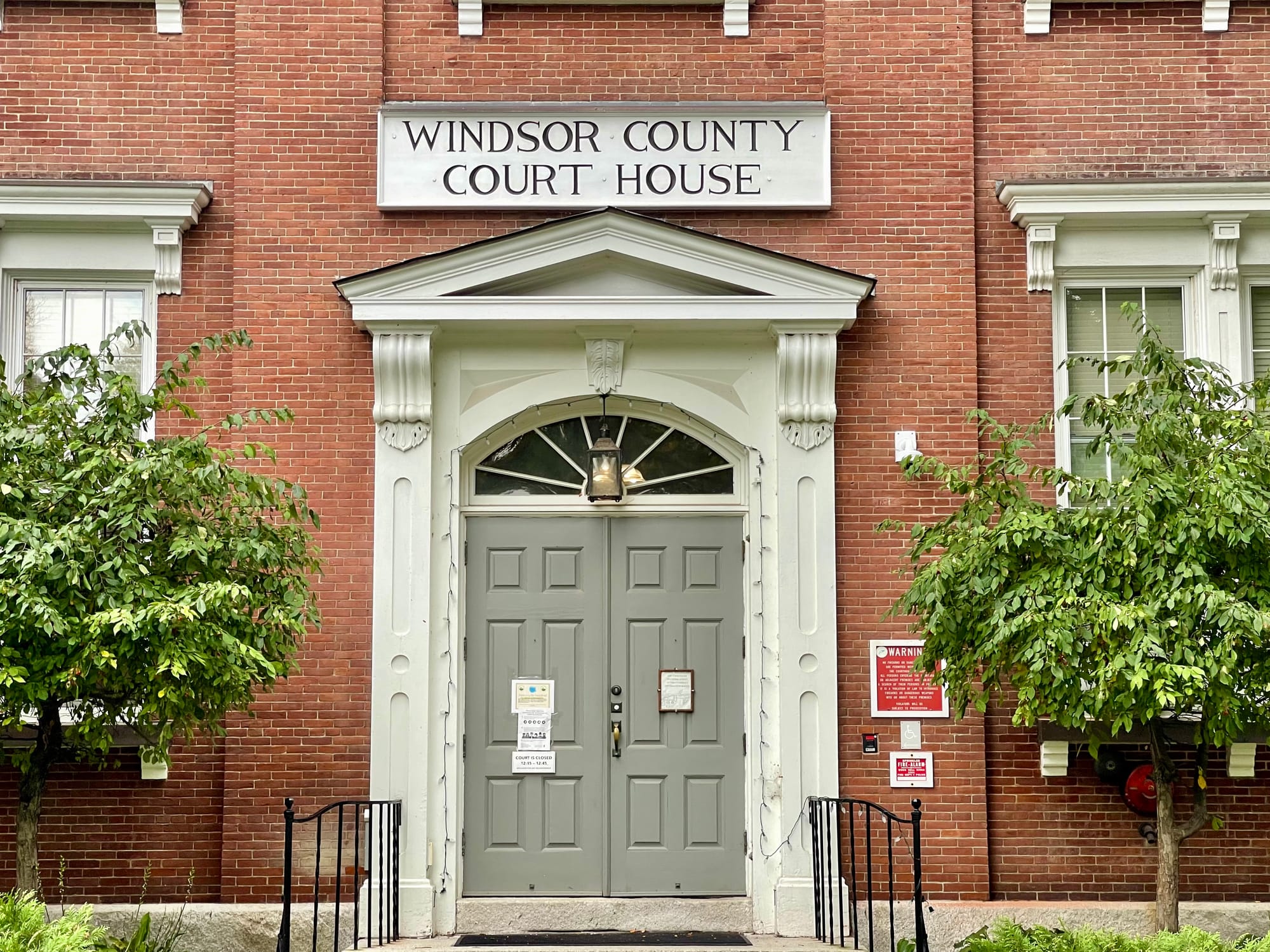
Library, courthouse, church and Woodstock Inn
The library is one of the best examples of a building "reaching out" to activate this public space. It could also be looked at as a start to creating a much more active center of activity, connecting the historic buildings to each other and the Green through the activation of their "front yards."
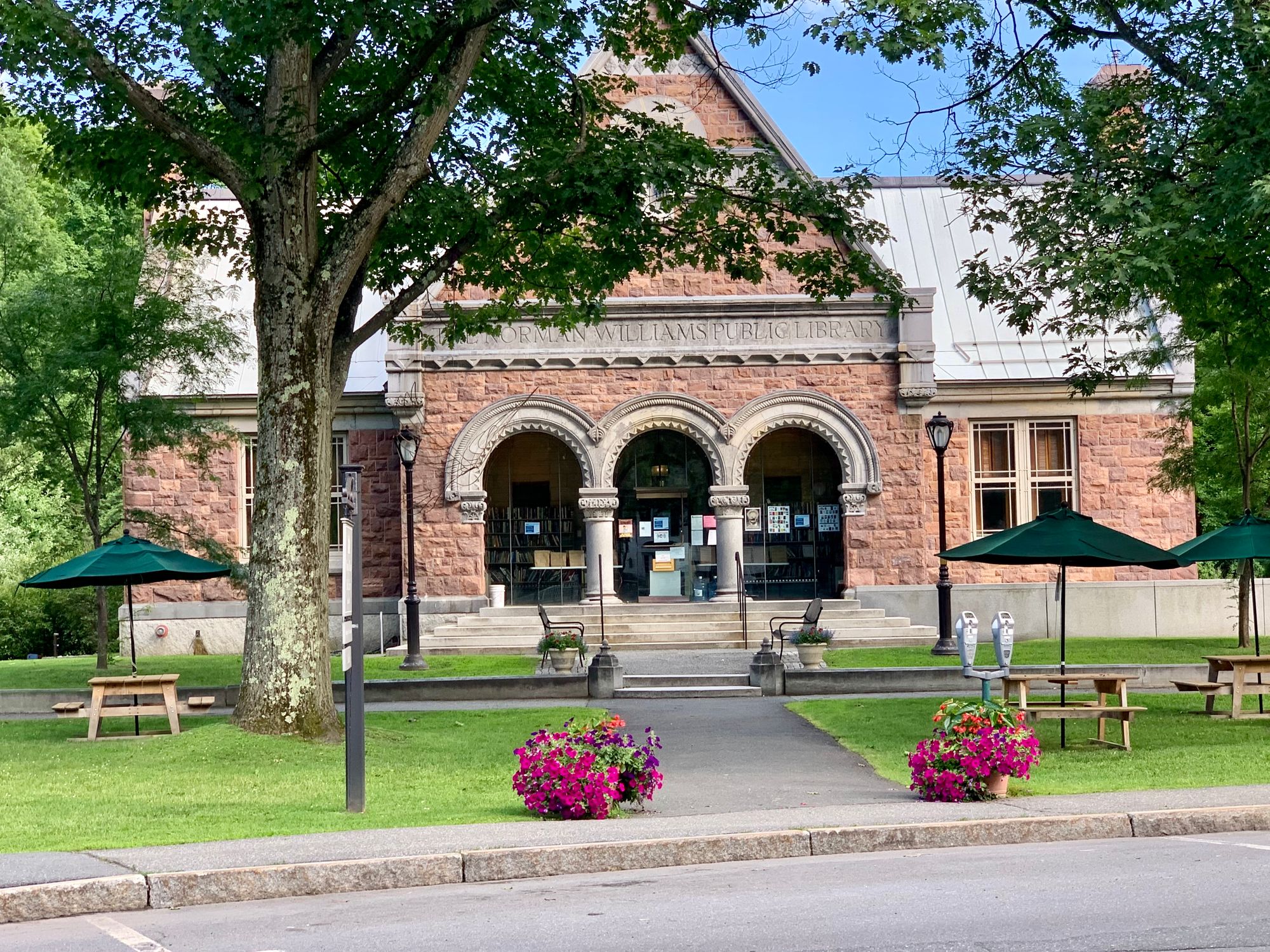
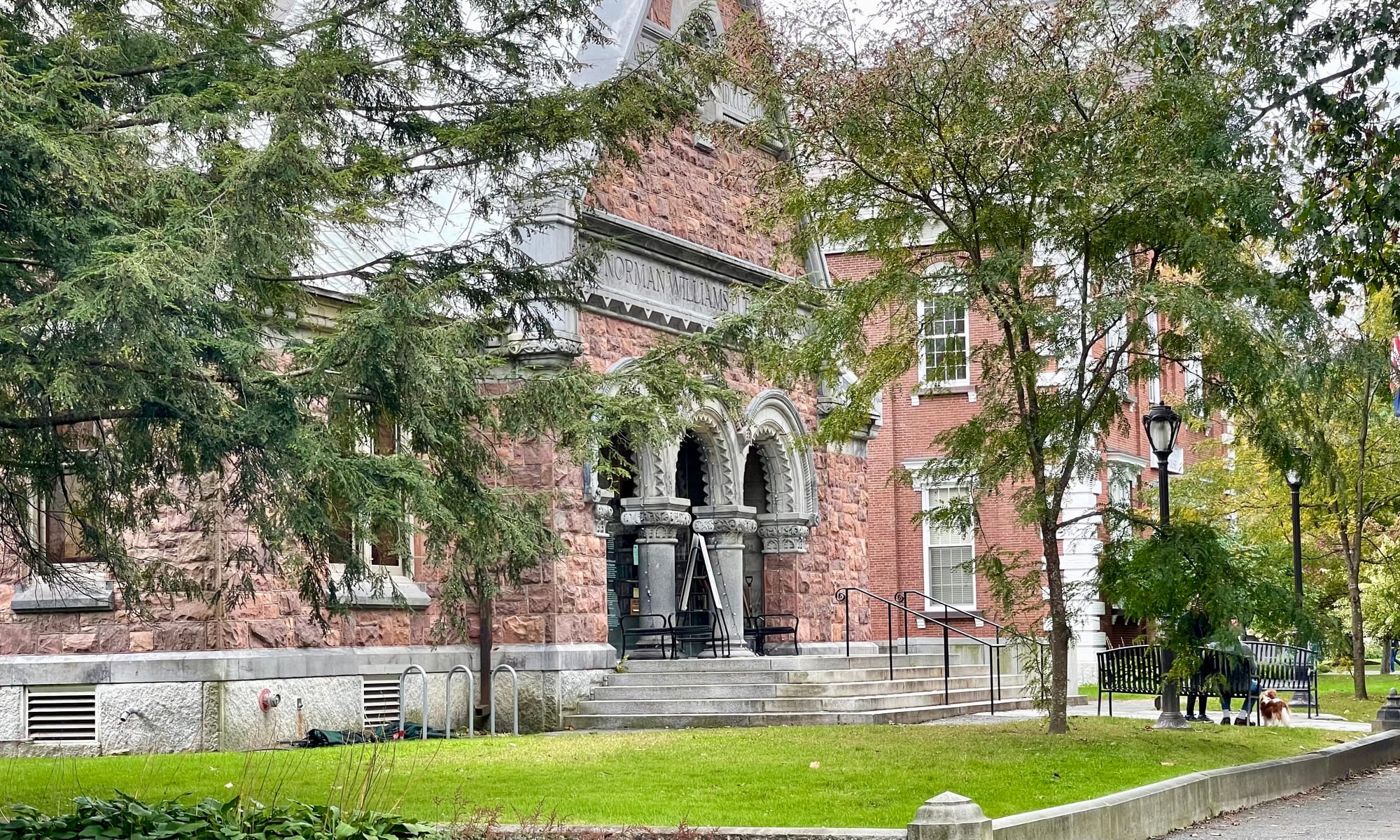
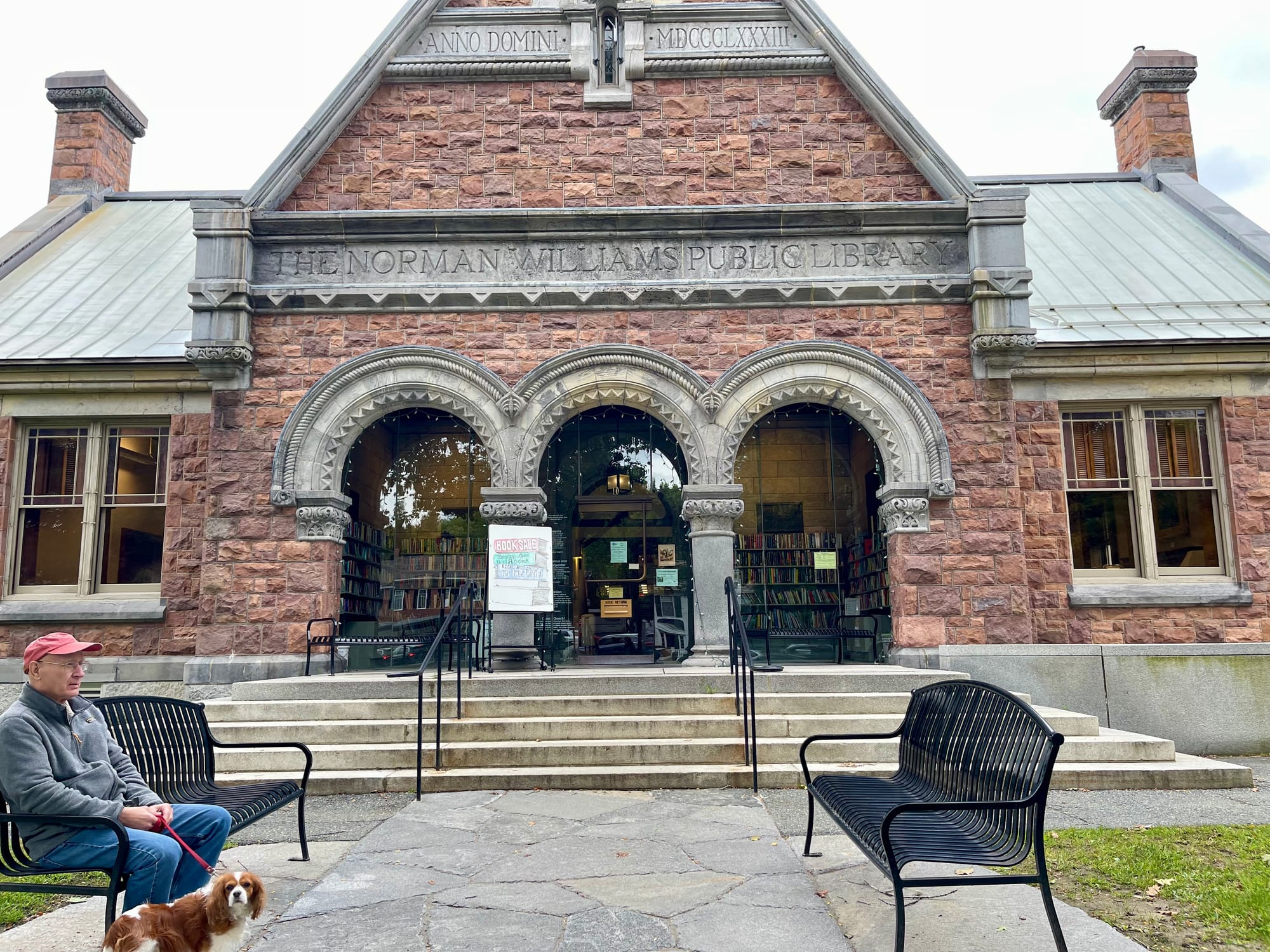
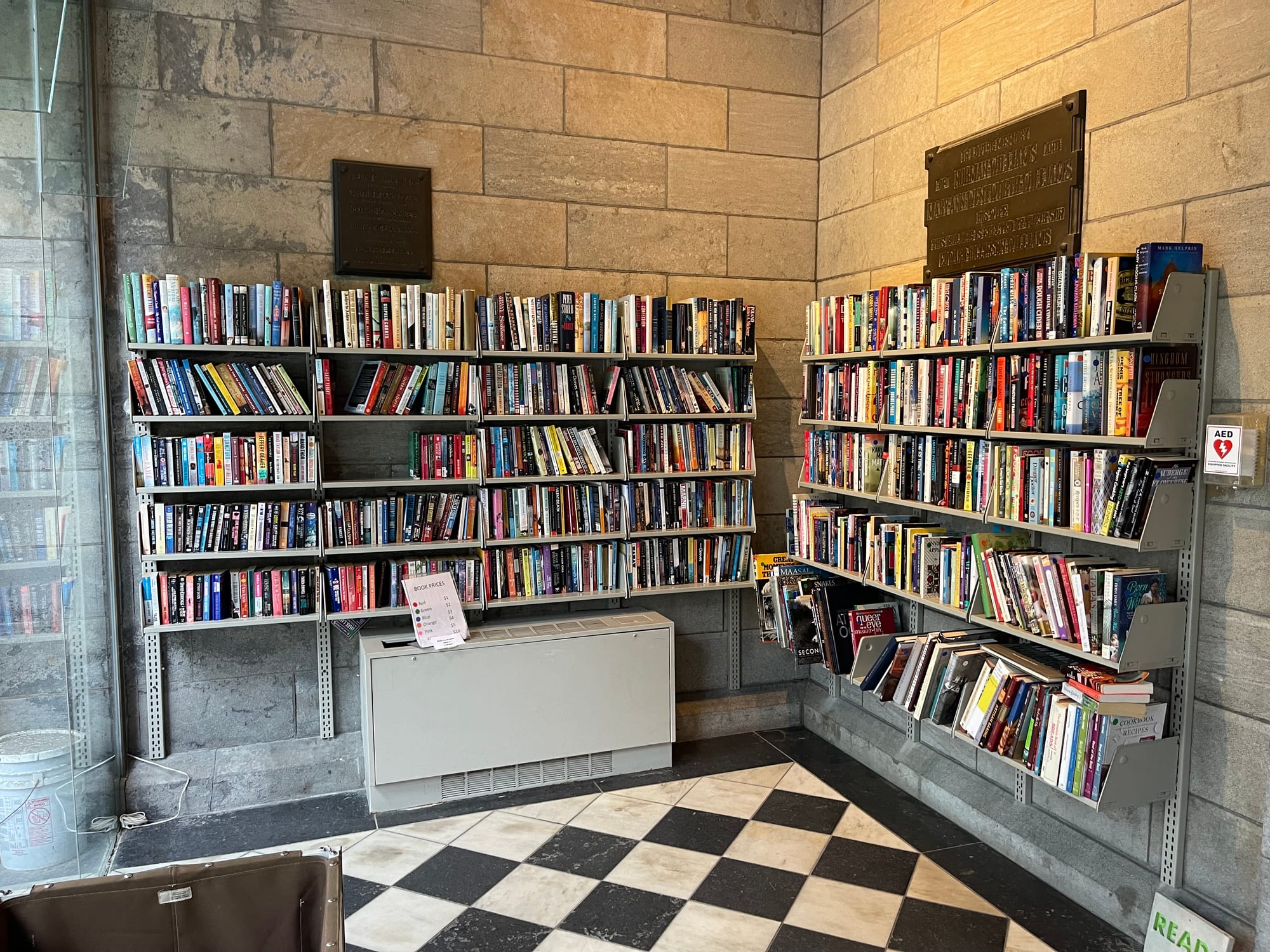
Woodstock Inn
Originally, the Inn was on the Green. When it was rebuilt, it was moved back to allow for a large car port, two large parking lots and a narrow walkway to the Green. This followed the example of many other communities that replace historic buildings which have a traditional "porch" with buildings dominated by car culture with parking and drop-off areas for vehicles. There are no gathering around the new Woodstock Inn.
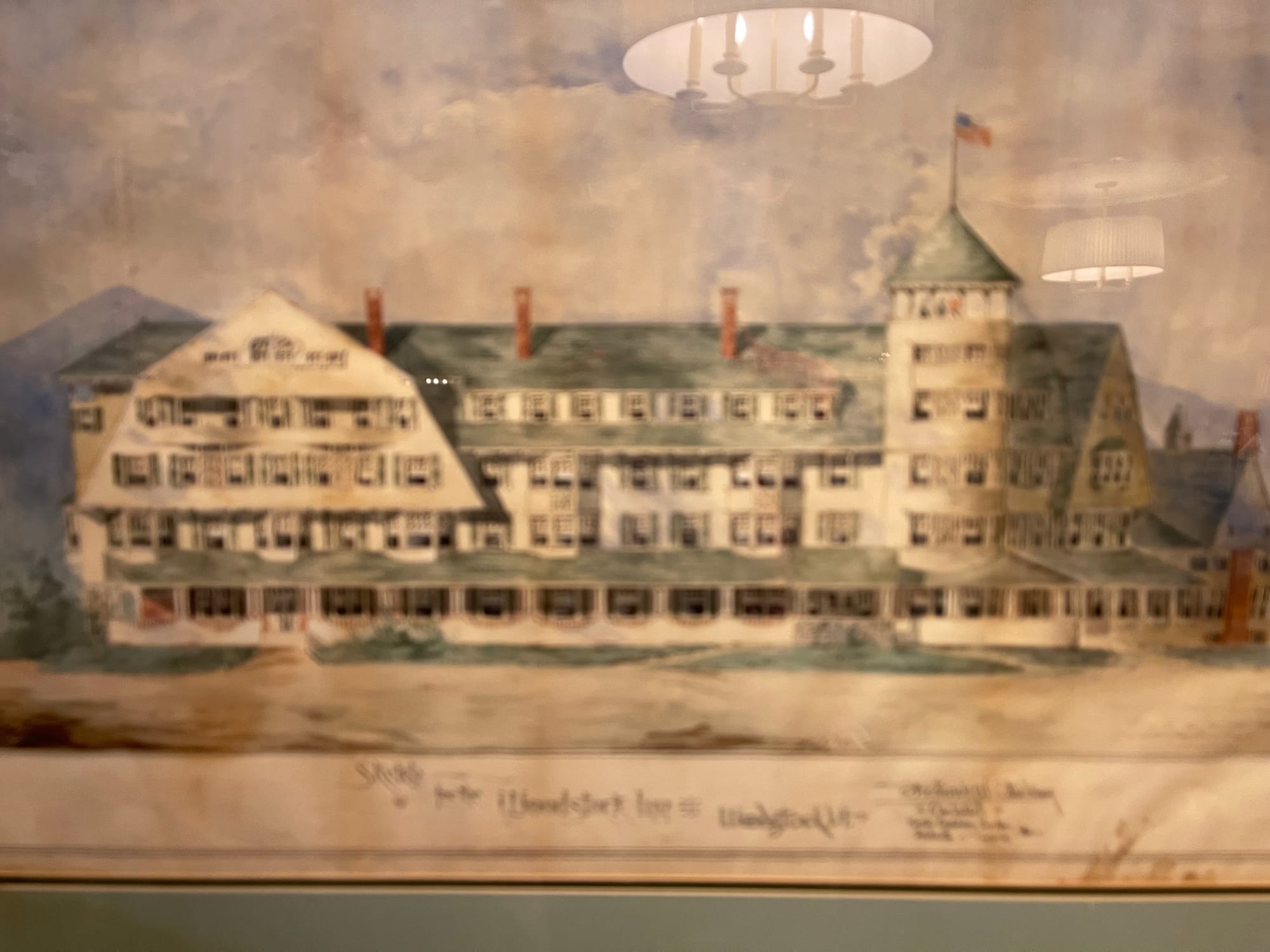
Kathy and I know the daughter of the former Inn's owner, Pennie Beach. She and her family own the Basin Harbor Resort on Lake Champlain. She wrote us this note after seeing the above image.
"I love seeing the photo of the old Woodstock Inn. Our family was running the Inn after WWII, and my parents and I lived there. We sold it to Laurence Rockefeller in 1968. It was indeed right on the Green, in the location of the current parking area. The entry doors opened onto a huge 2-story room with a curving staircase to the upper floors. There was a fireplace to the left, and a wide hallway with public rooms on both sides that led to a ballroom. I recall a blue velvet curtain across the back of the room, perfect for small kids to hide behind. The dining room was down a short hallway to the right from the entry doors. It, too, had a fireplace. It probably sat around 100. The guest rooms were smaller, as was the case for the most part. The building had steam heat, clanking radiators, and was blisteringly hot when the heat was on."
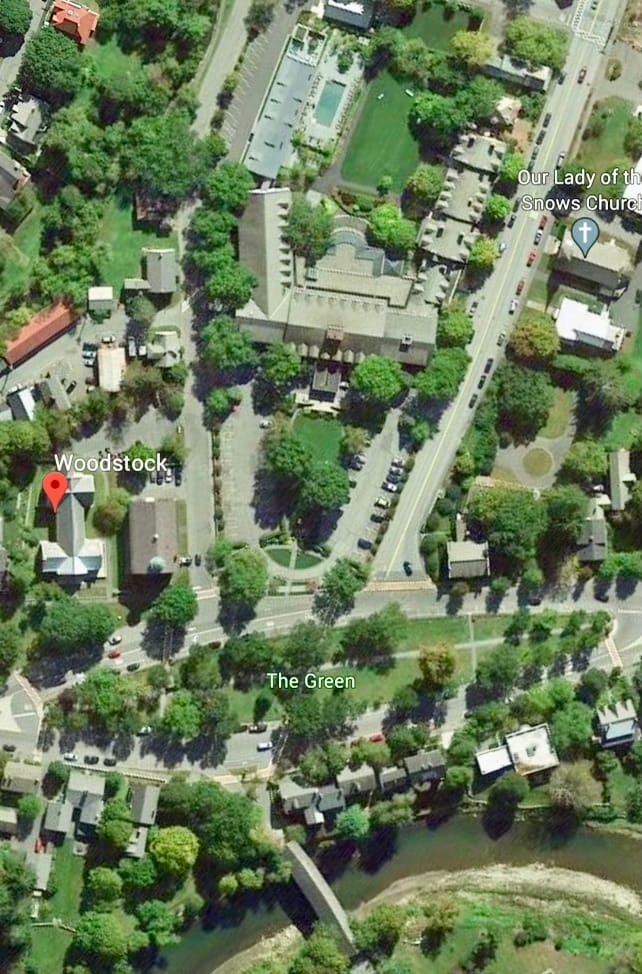
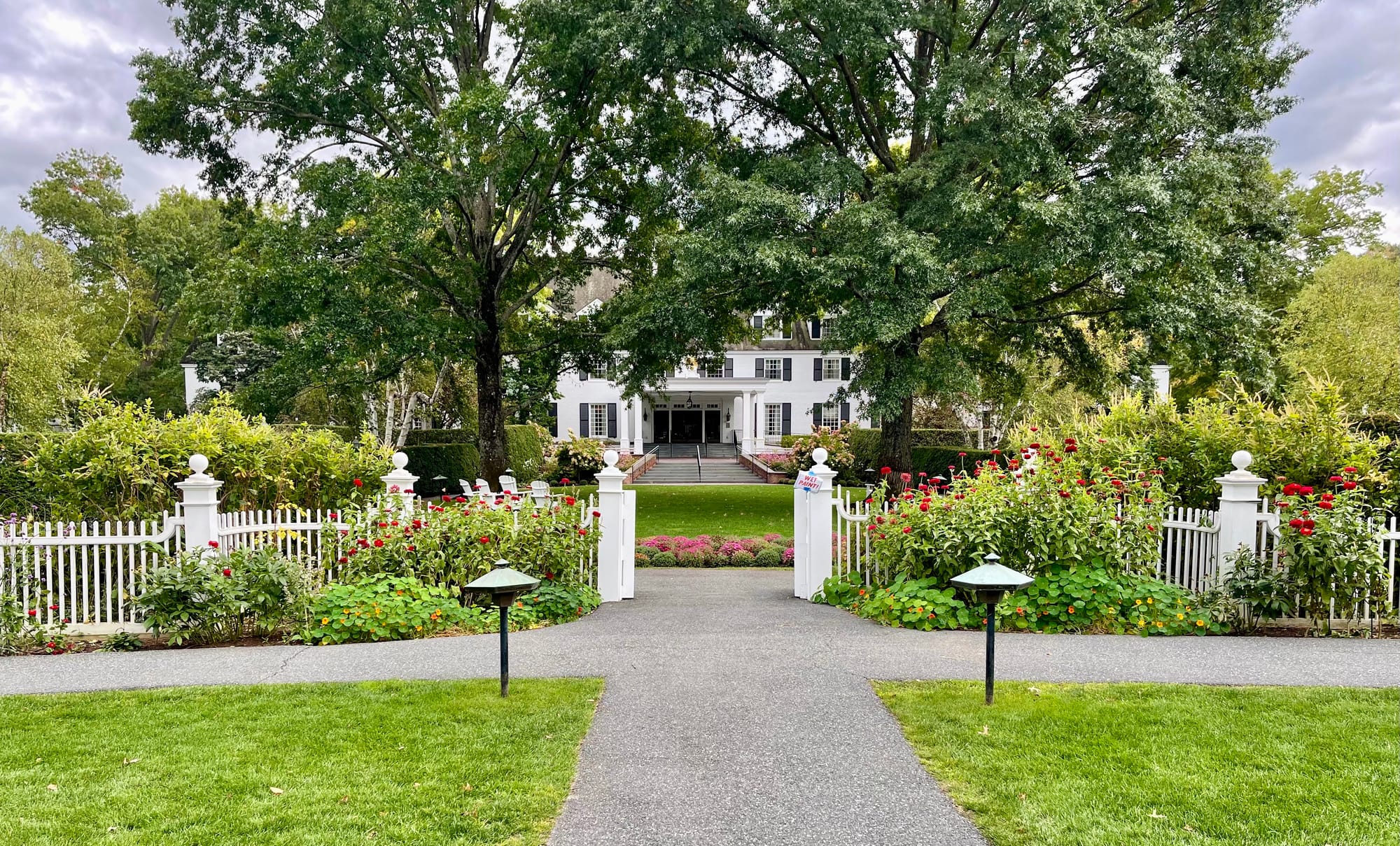
This garden could easily be become an extension of the Green with a pavilion building
Benchmark - Adelphi Hotel
Just imagine if the Woodstock Inn had been rebuilt on the Green as it was historically, like the Adelphi Hotel in Saratoga Springs. The liveliness of the sidewalk plaza/porch in front of the historic Adelphi Hotel is a significant part of why the hotel is a local landmark. Imagine if the Woodstock Hotel was similarly integrated with its surroundings. It could be if there was an annex along a portion of the street across from the Green. That could extend the length of Main Street to bring the Inn onto it, thus connecting it with the main part of downtown.
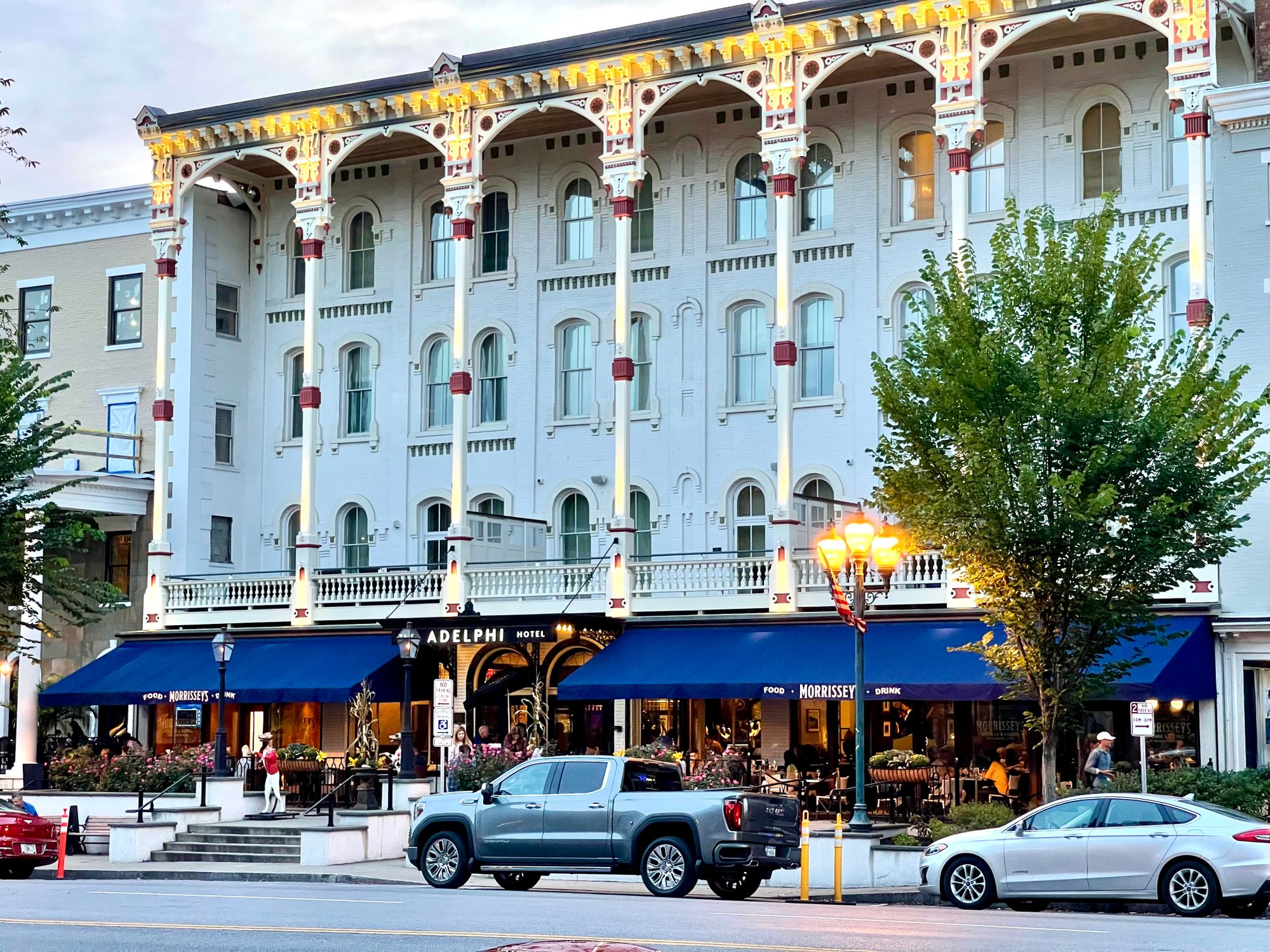
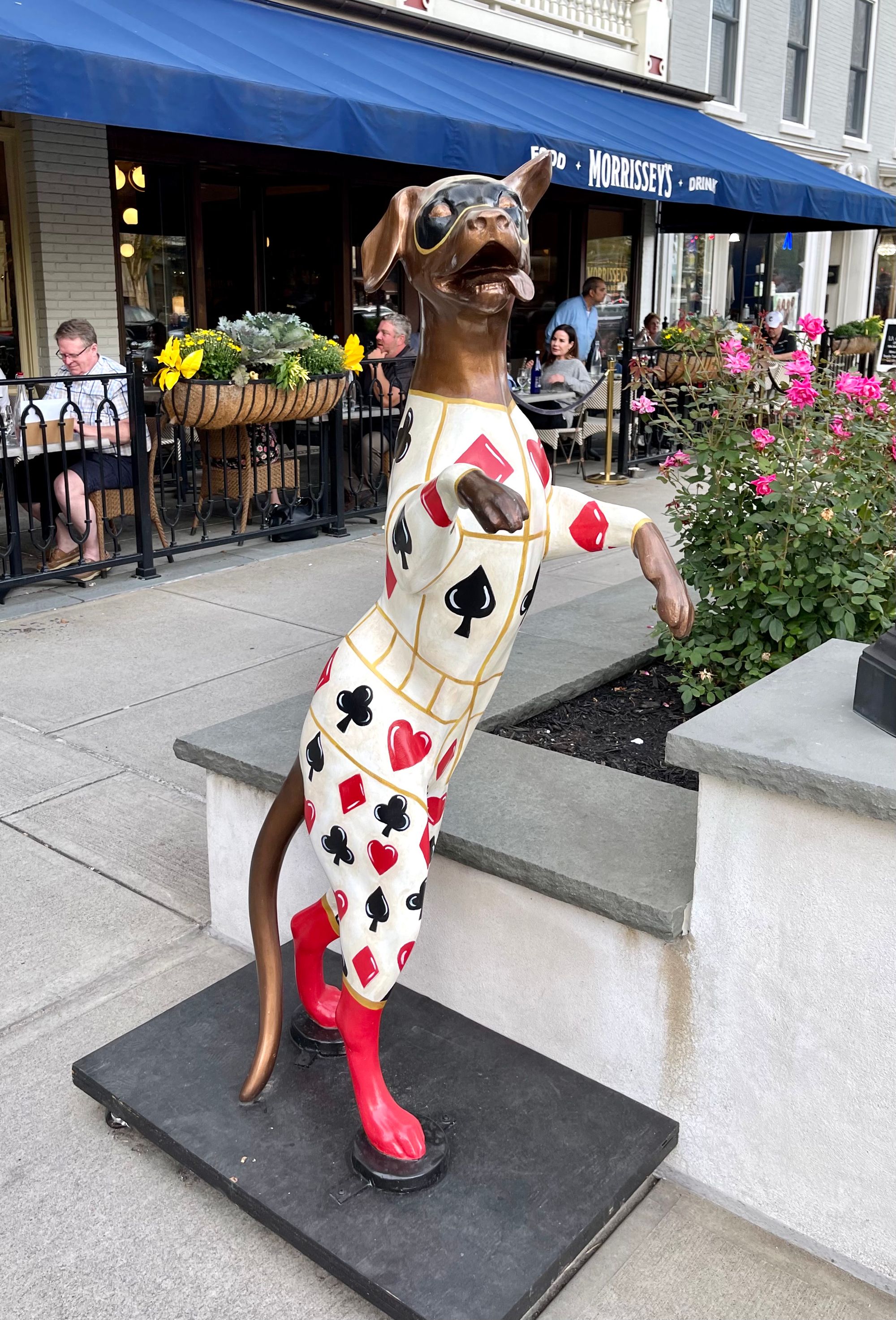
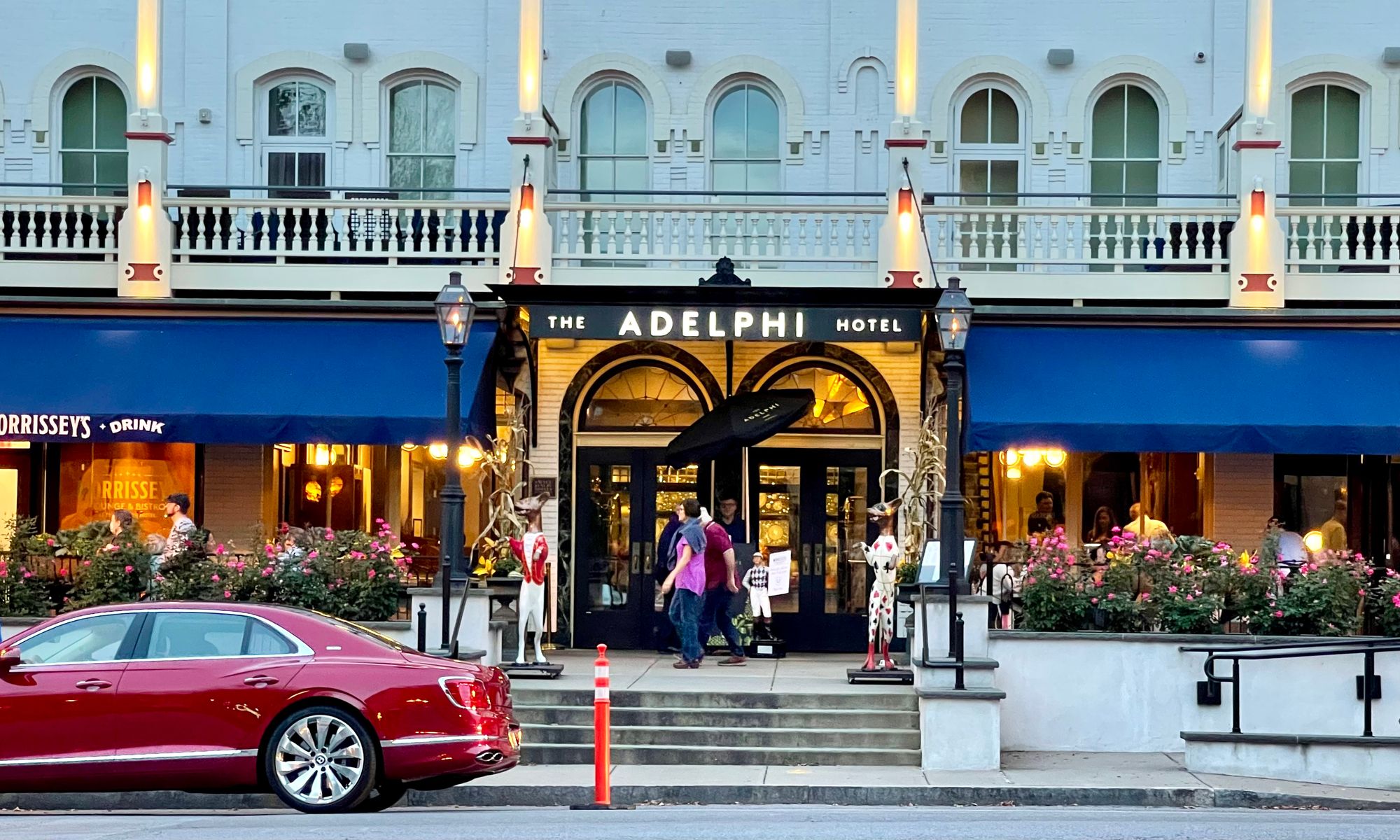
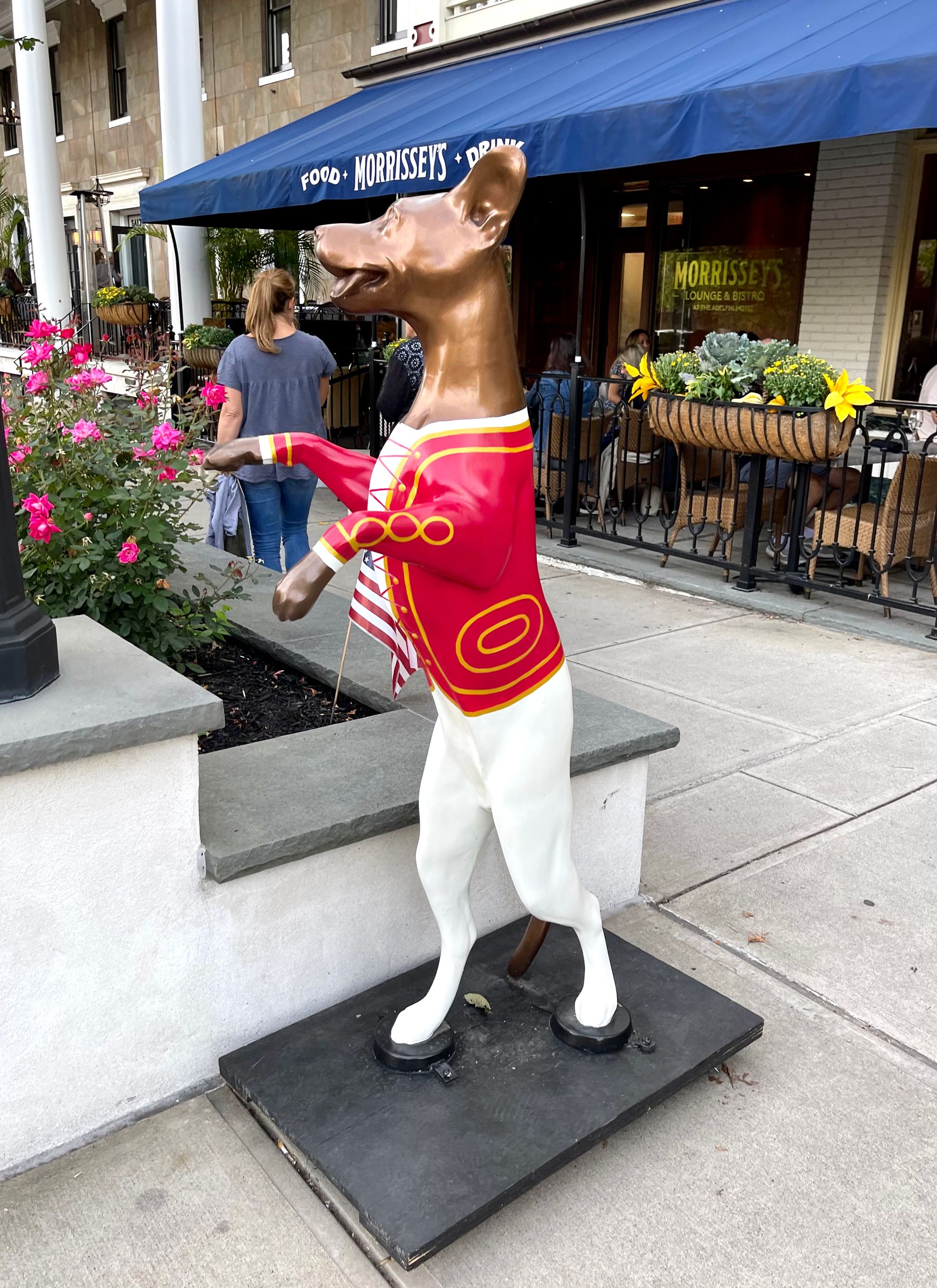
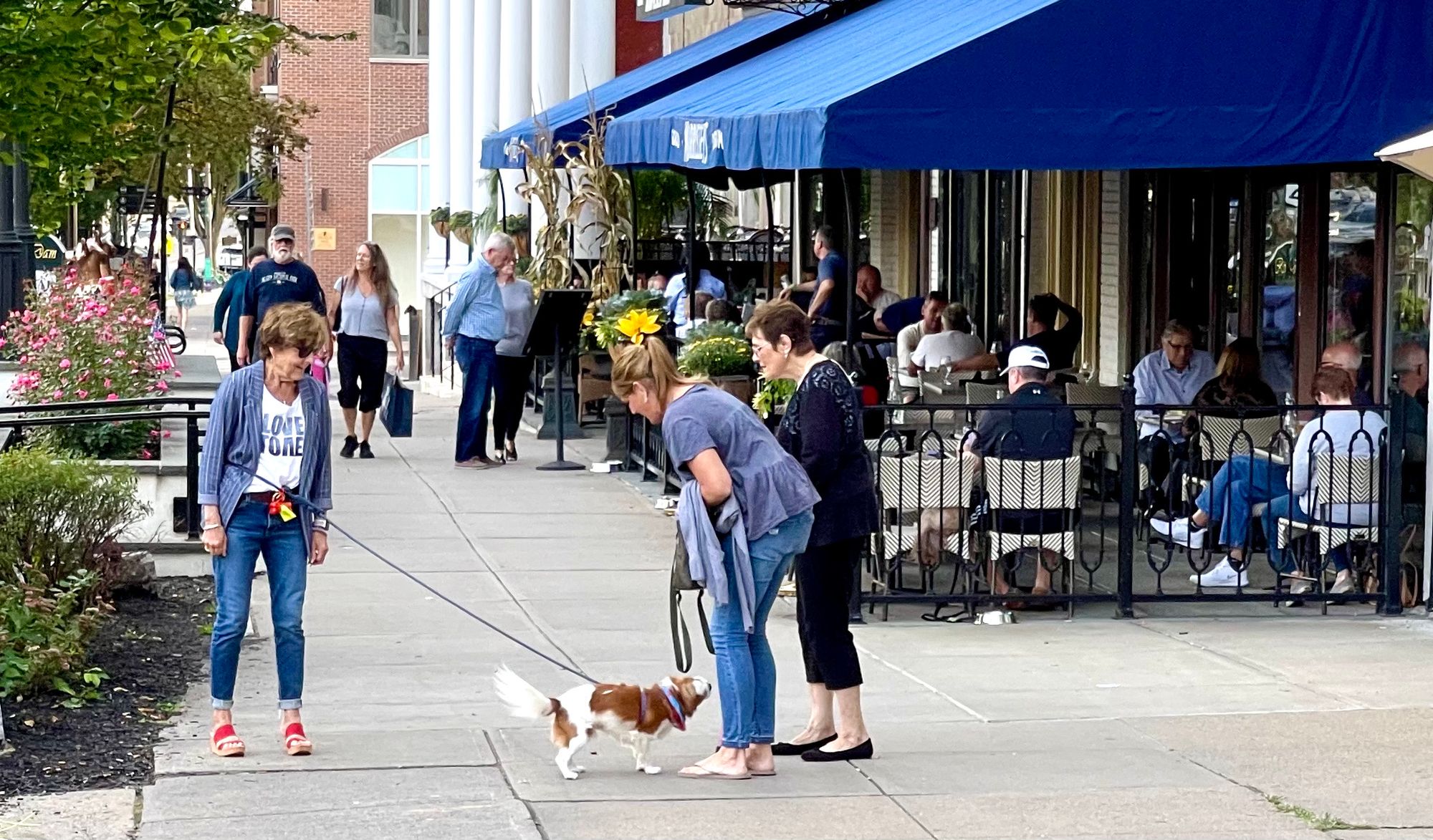
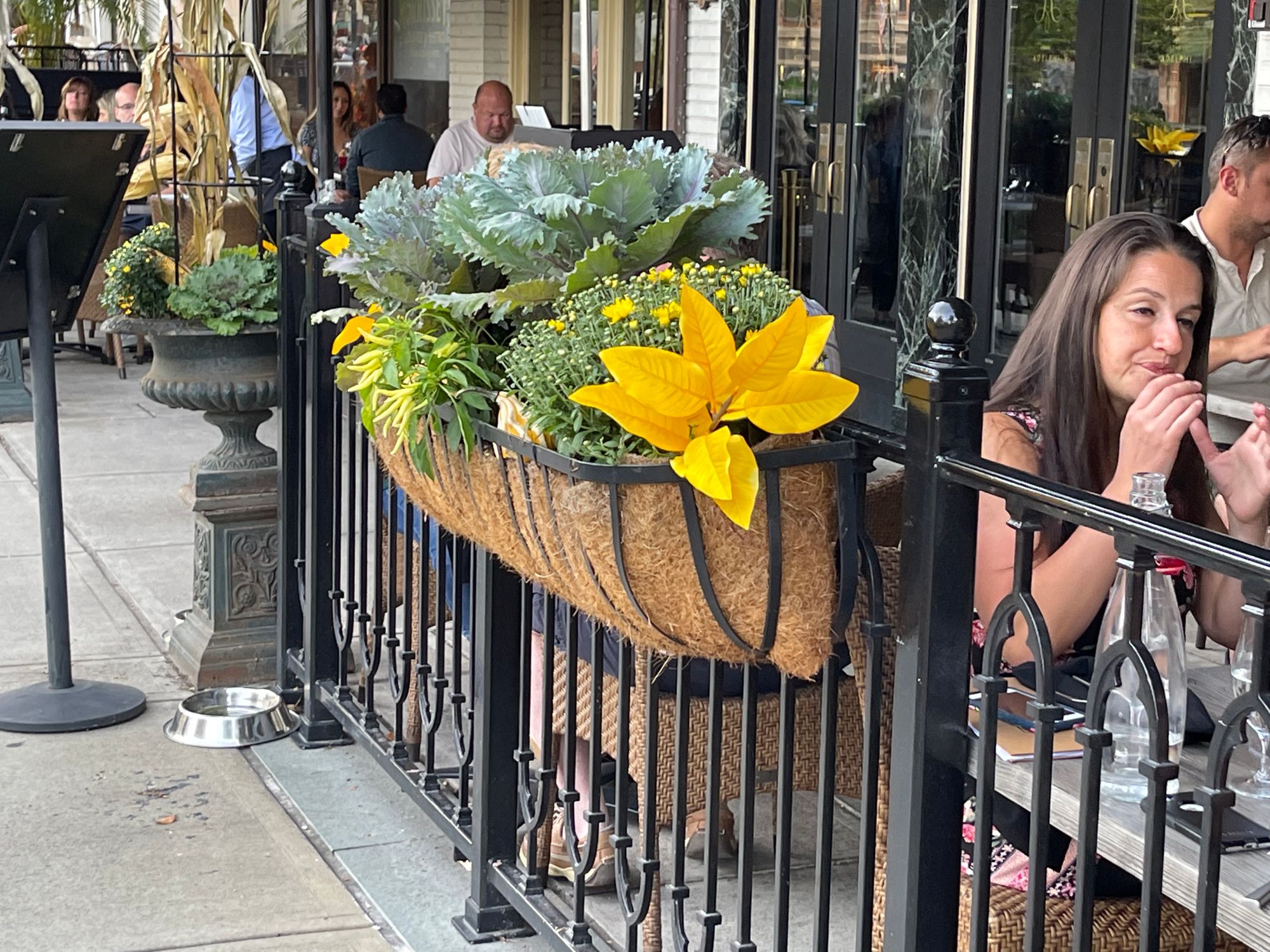
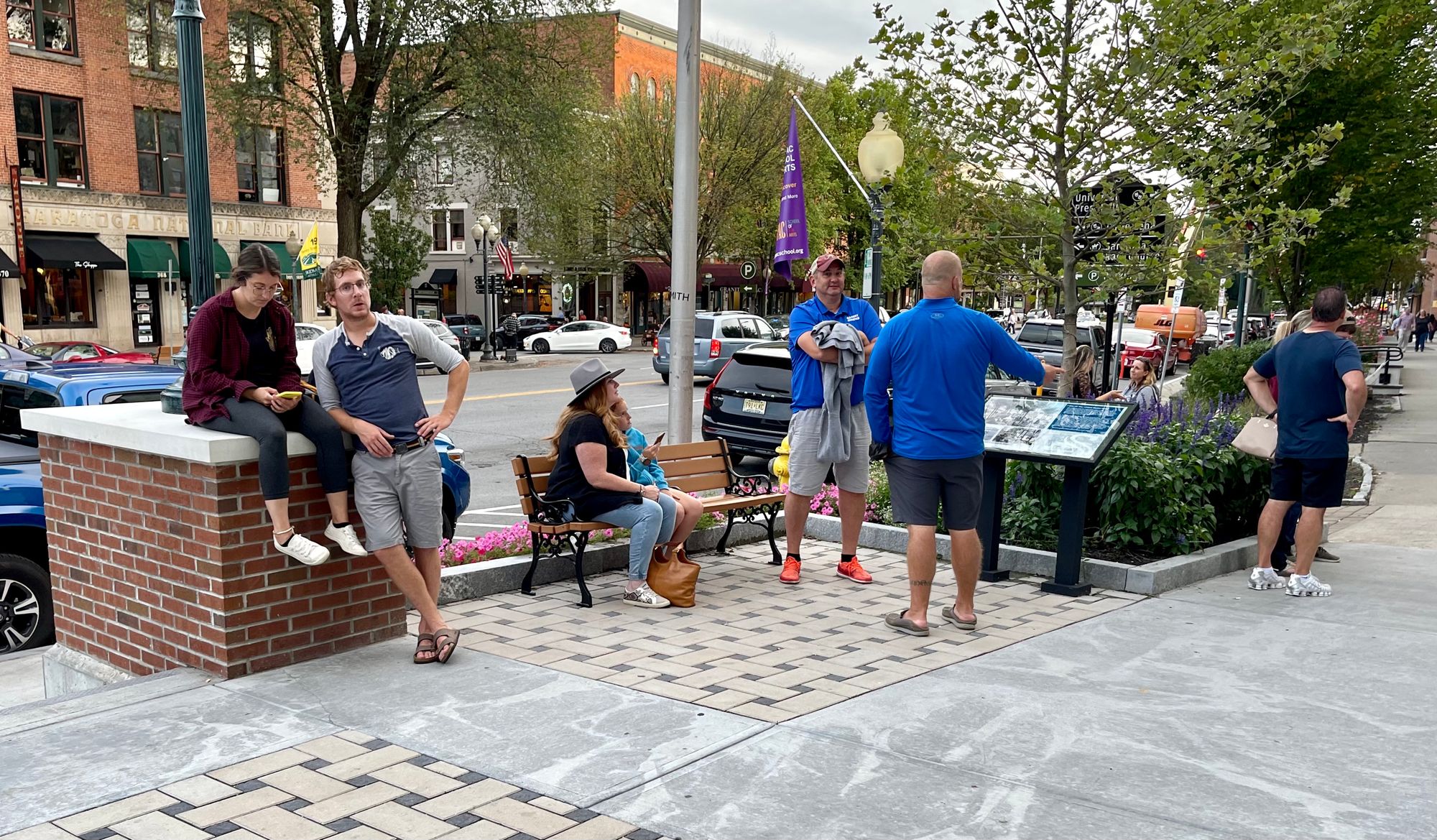
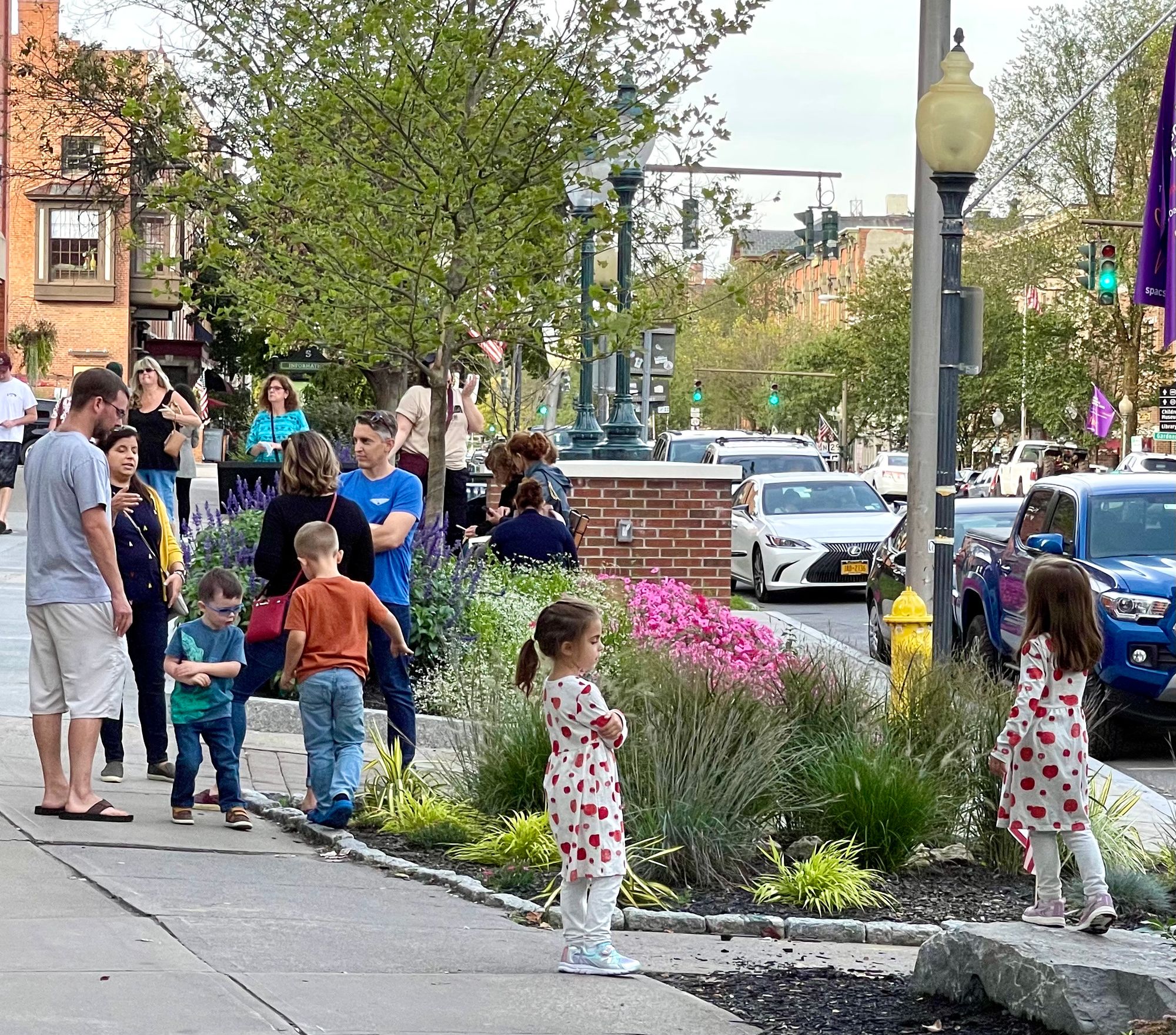
Improving Sidewalks is Essential
The main activity in most historic communities like Woodstock is strolling or "promenading." However, a good street for walking along requires a minimum width to be comfortable and pleasant. By adding, even doubling, the width of the sidewalks, and in a few cases adding a sidewalk extension (removing parking) and double-loading the sidewalk (putting activities or amenities on both sides of the walkway) sidewalks could be transformed to invite and support this kind of activity.
The Italians call promenading "passeggiata," a valued daily activity, and have perfected their streets to encourage it.
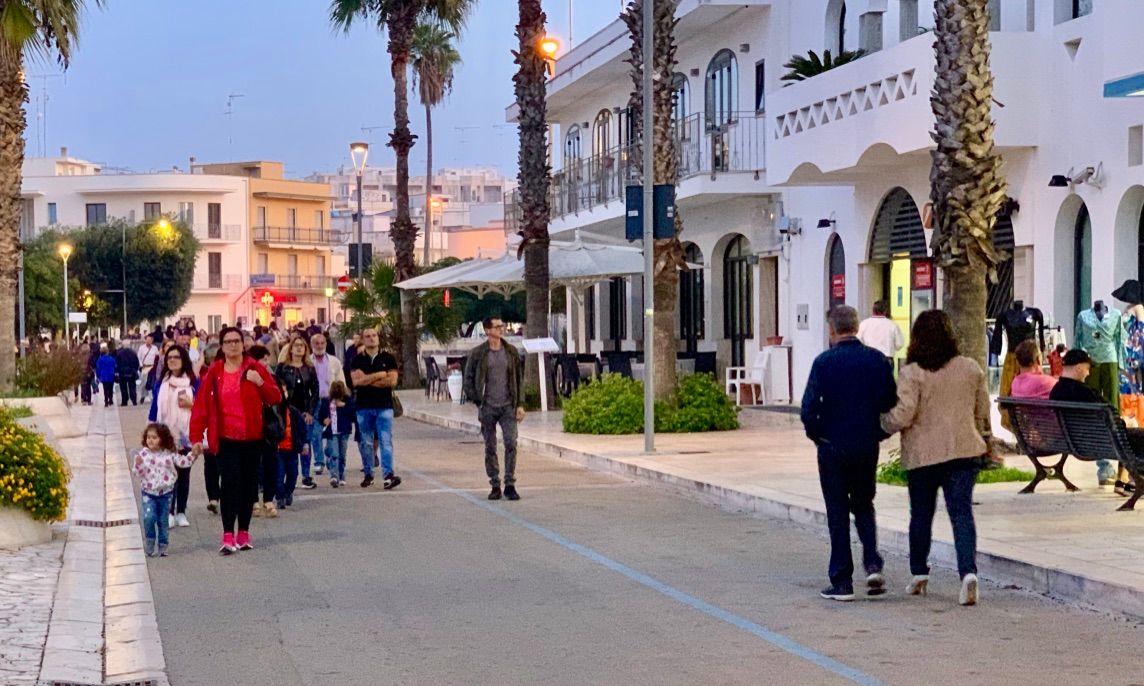
Woodstock Main Street - East
The narrow sidewalks in the center of Woodstock create a limited setting without the kind of basic amenities that could give pleasure to the many people walking through town and branching out from the center to explore each nook and cranny.
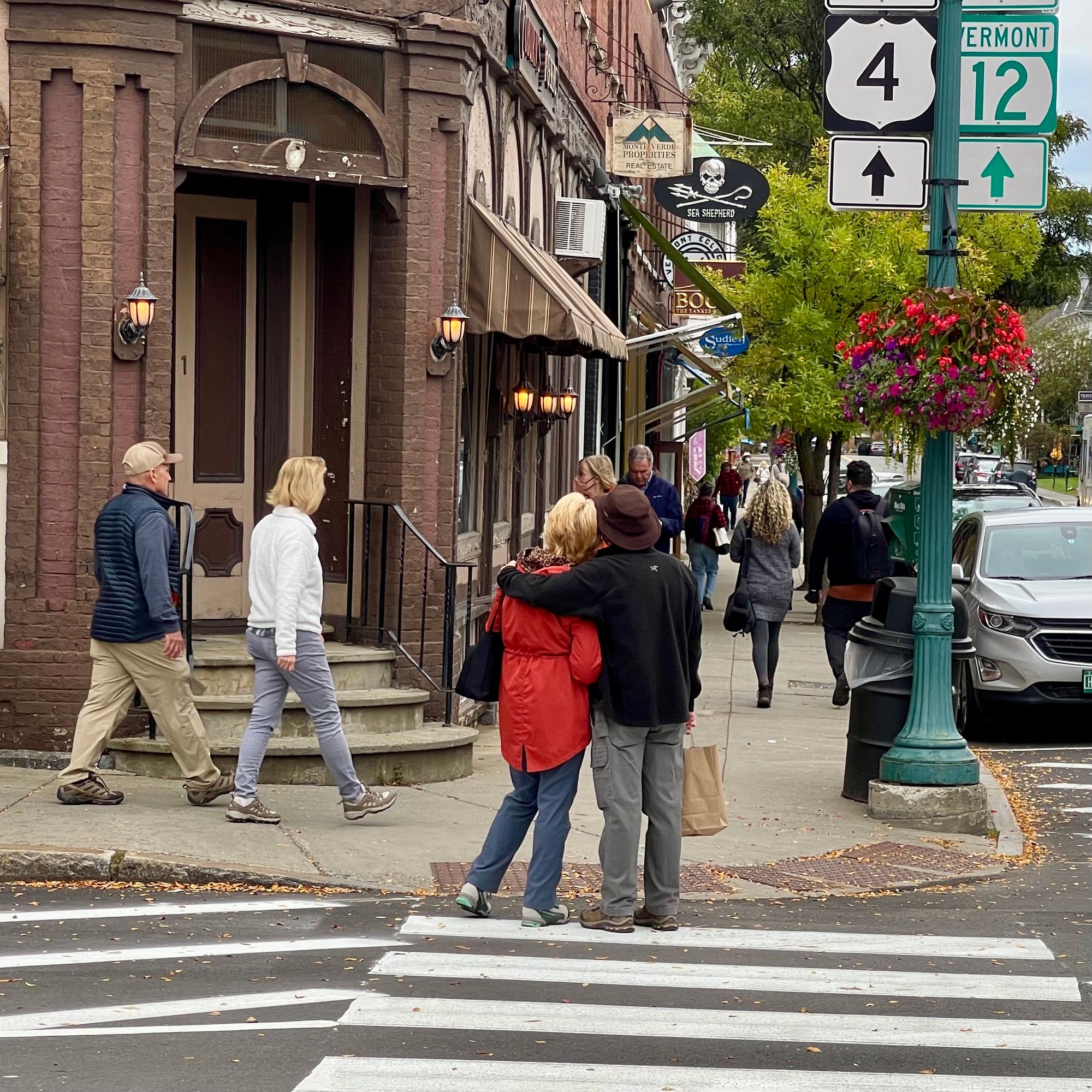
Strolling and window shopping could become major activities here, even stretching into the neighborhoods, along the river and out into the open fields surrounding the center. This could be an easily achieved goal by expanding and improving sidewalks and it would have an enormous impact. Walking/hiking in and around Woodstock is an attractive activity...it would not cost a lot to create a series of trails to support it. Sections already exist and could be improved quickly.
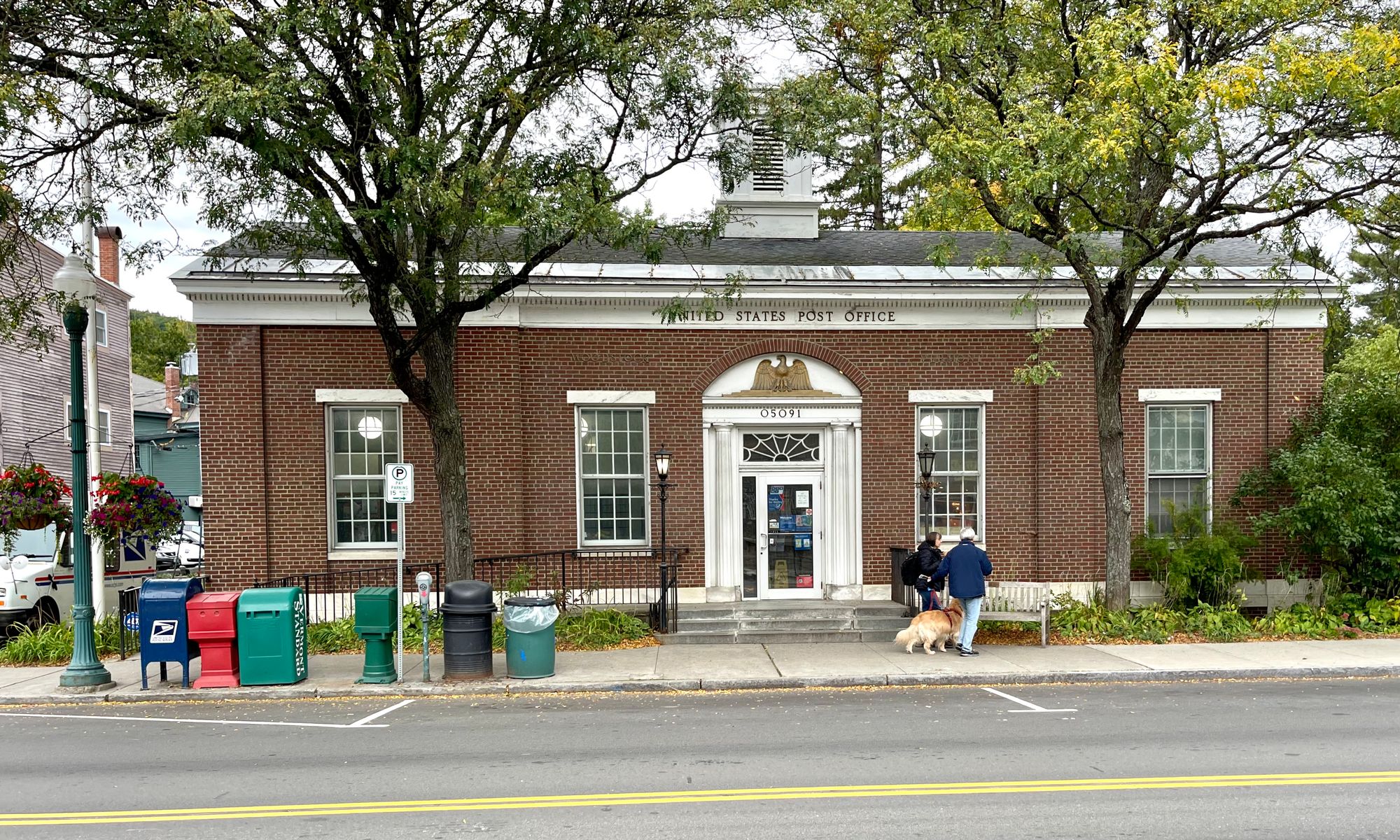
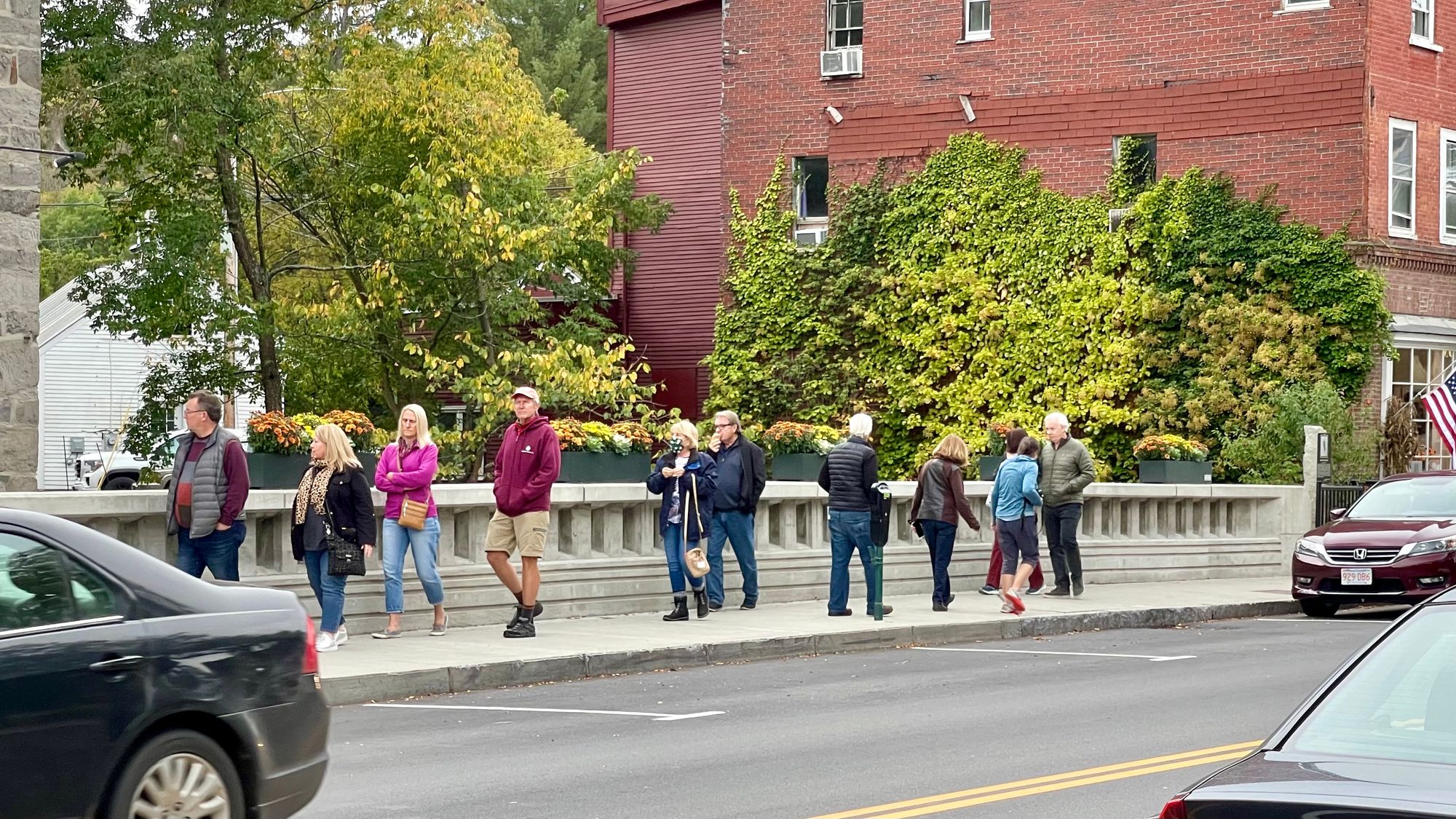
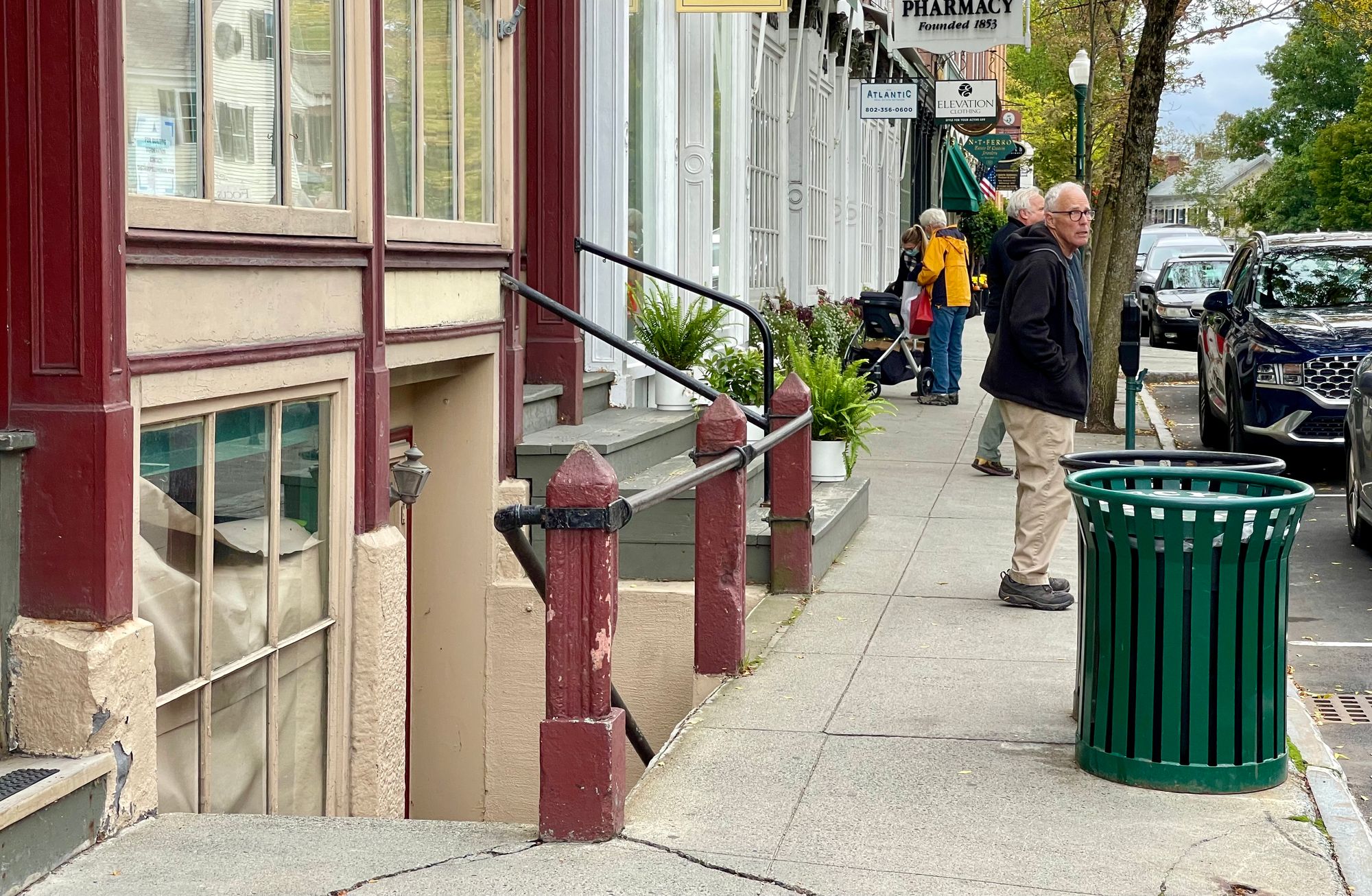
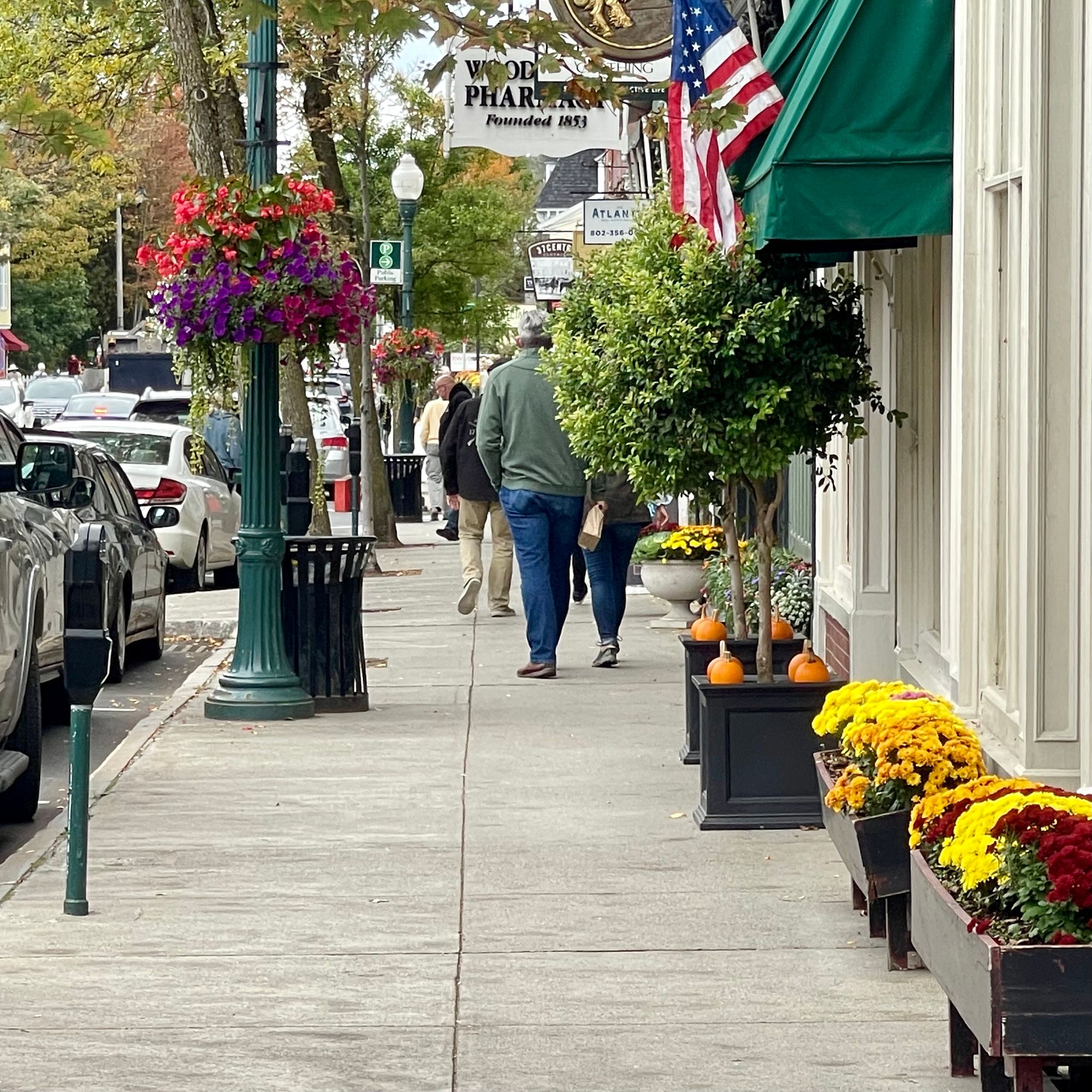
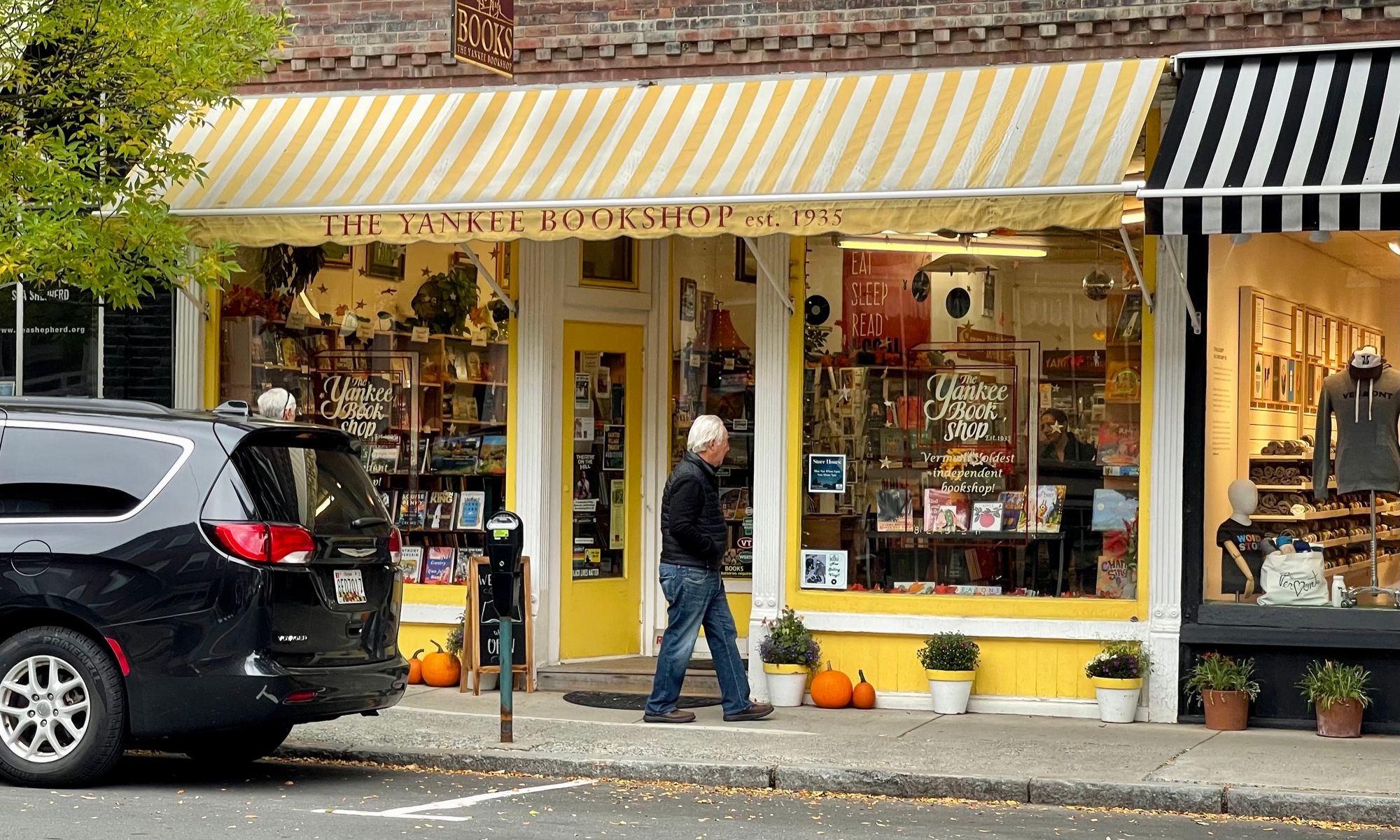
This ice cream/coffee shop is a popular destination that could easily be enhanced to become an even more prominent destination and a major focal point of town.
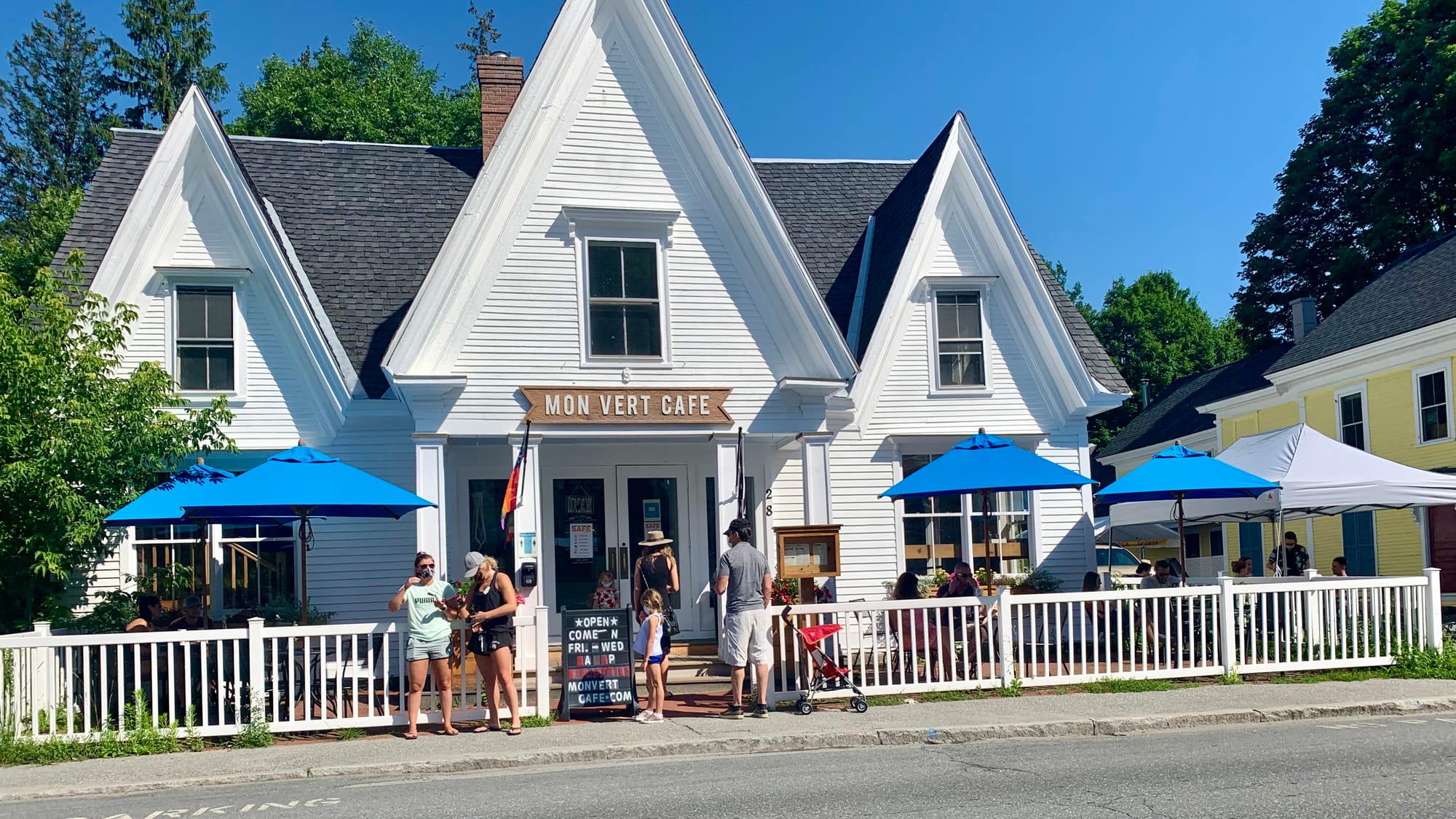
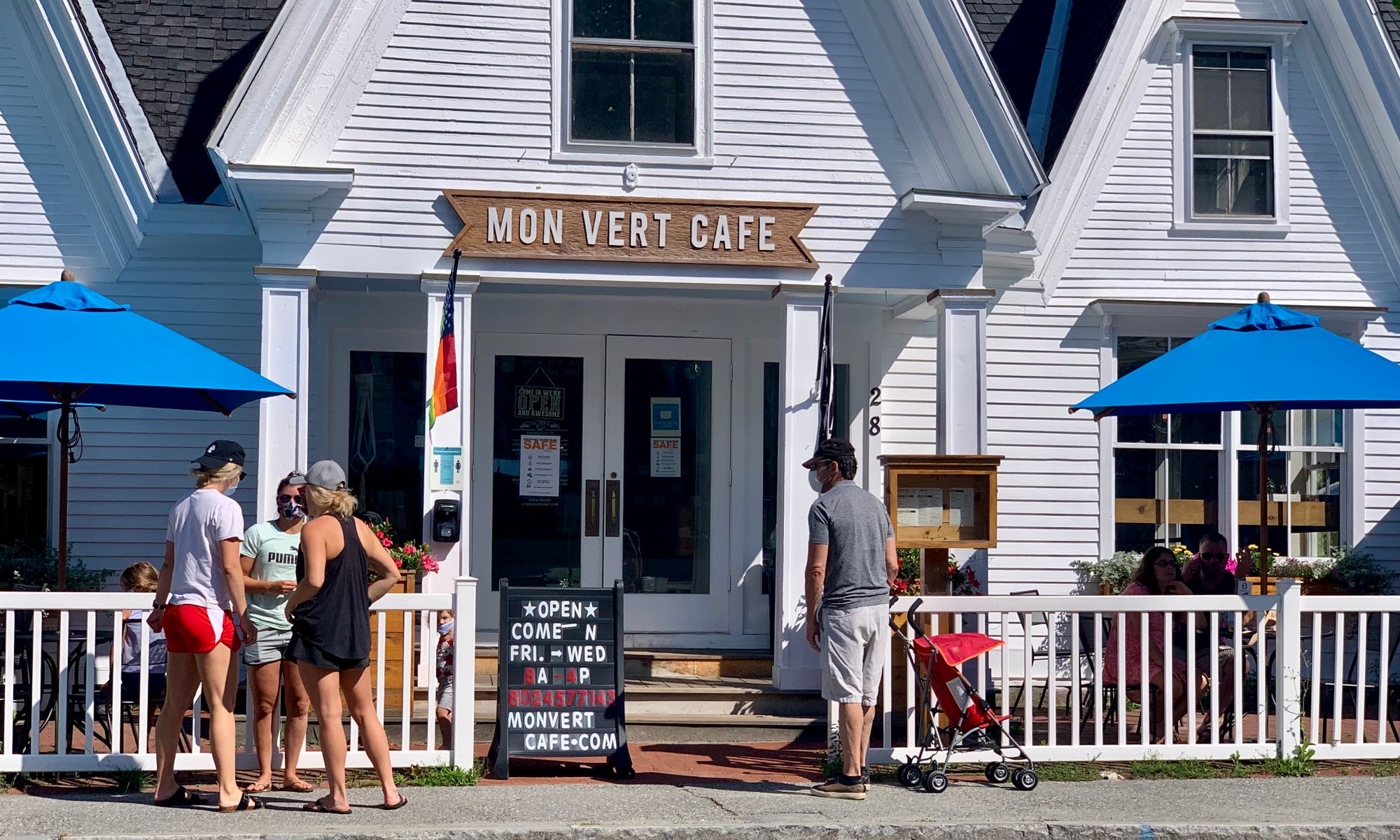
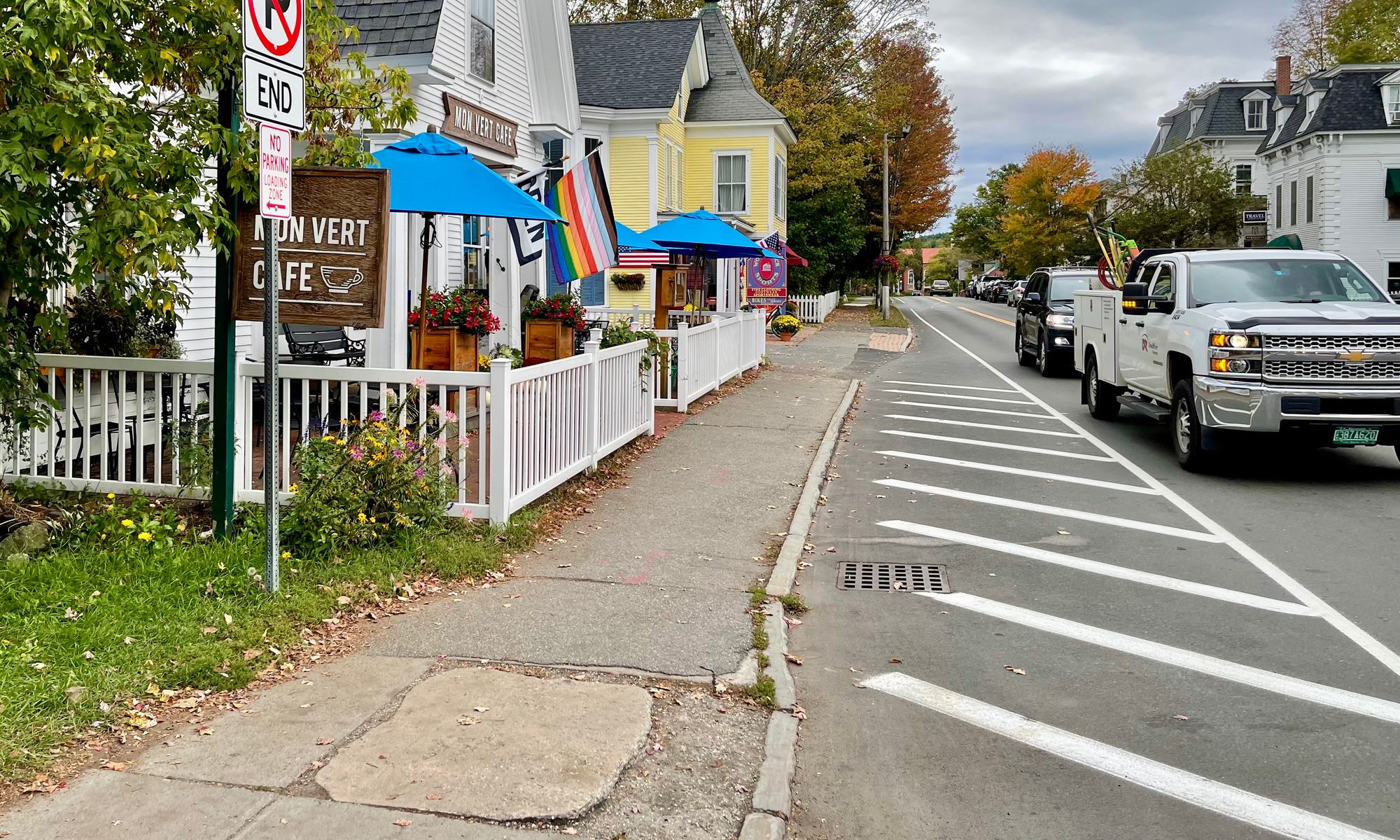
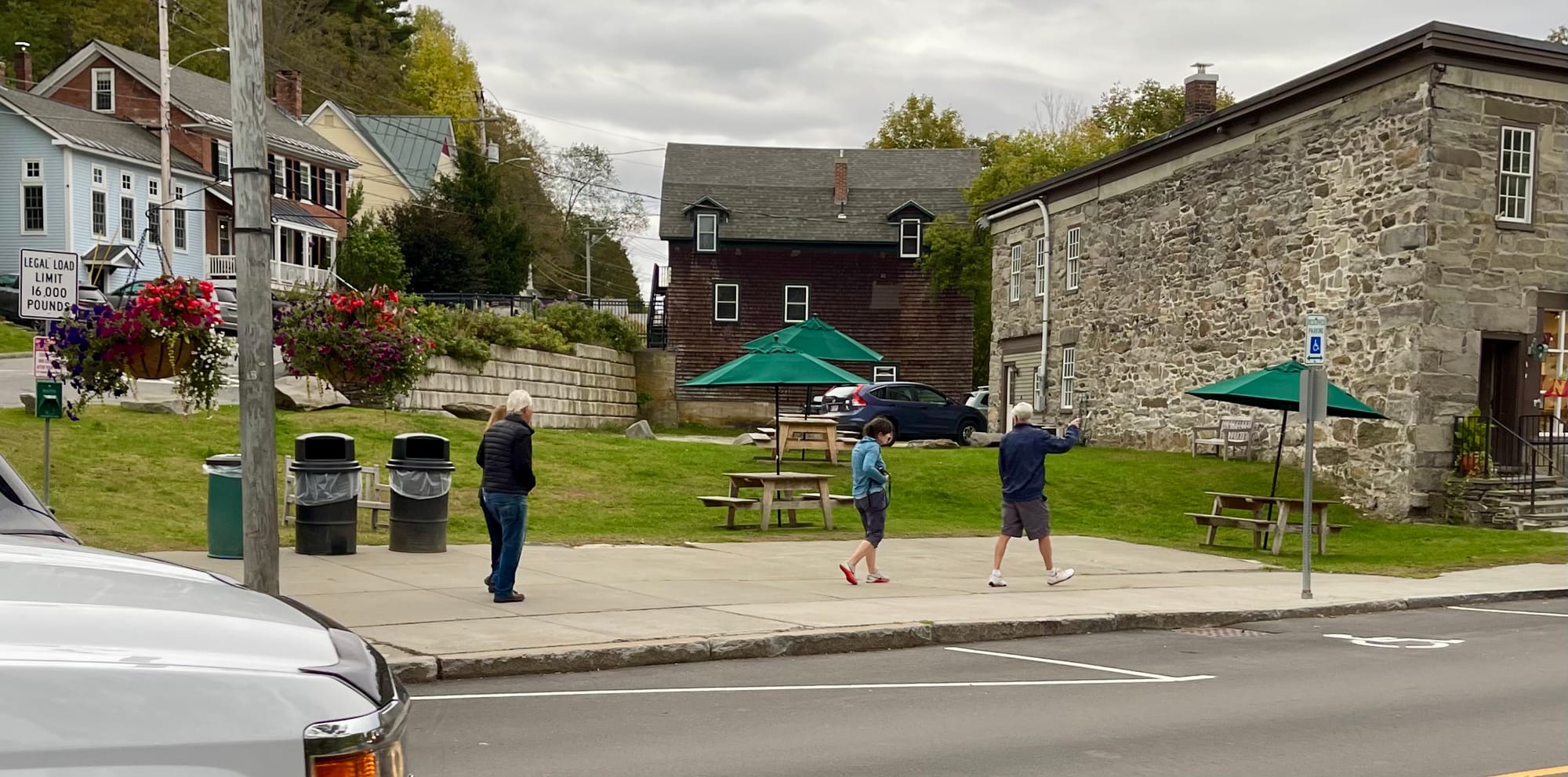
Please, Just a Nice Place to Sit...
There is too little public seating on the sidewalks and squares of Woodstock. The image on the left was taken in 2003 and the one on the right in 2023. Locating the sole public bench behind the town bulletin board is awkward at best. A beautiful small town like this where strolling is a primary activity needs to provide plentiful seating options along its main sidewalks and public places.
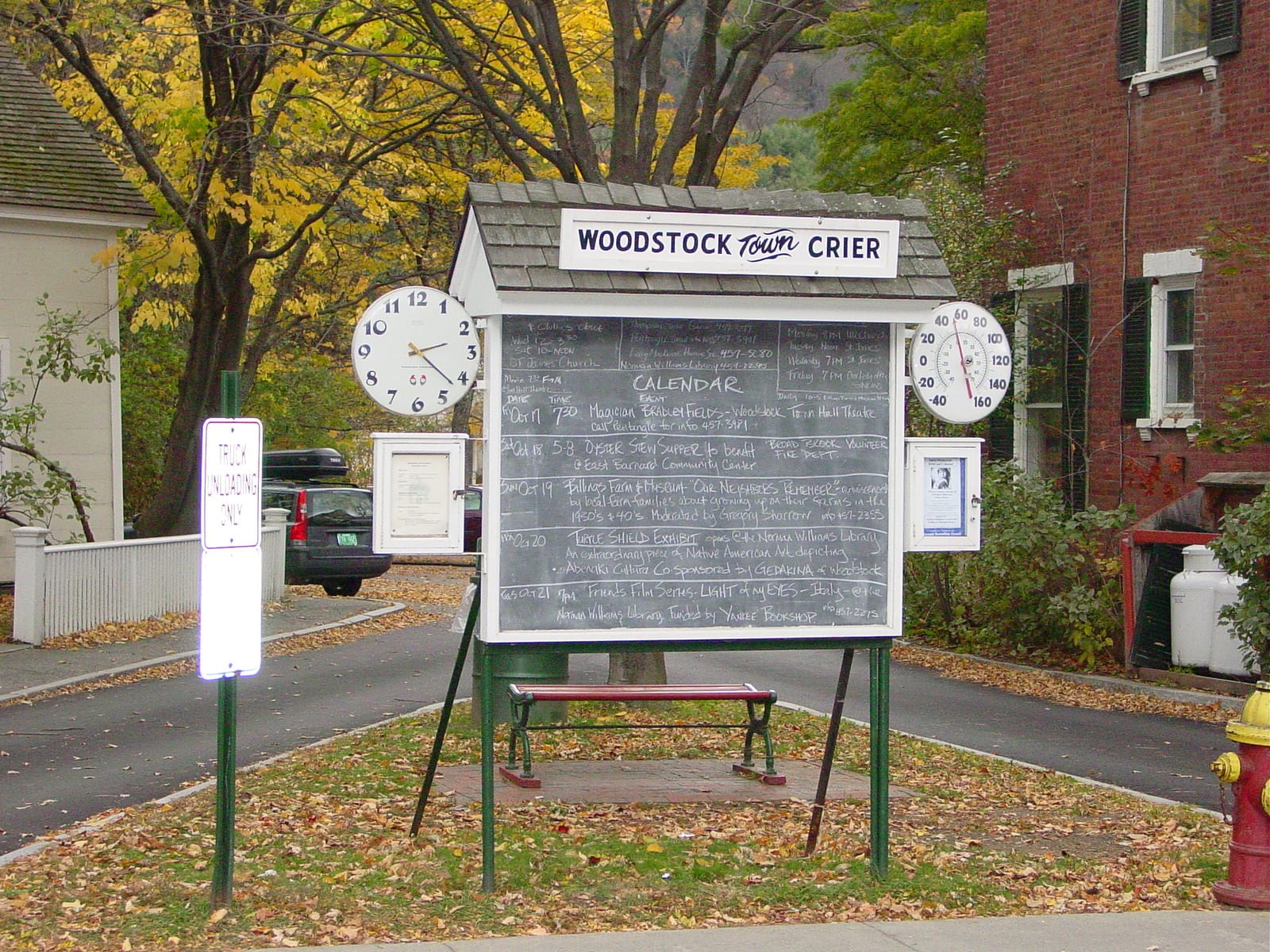
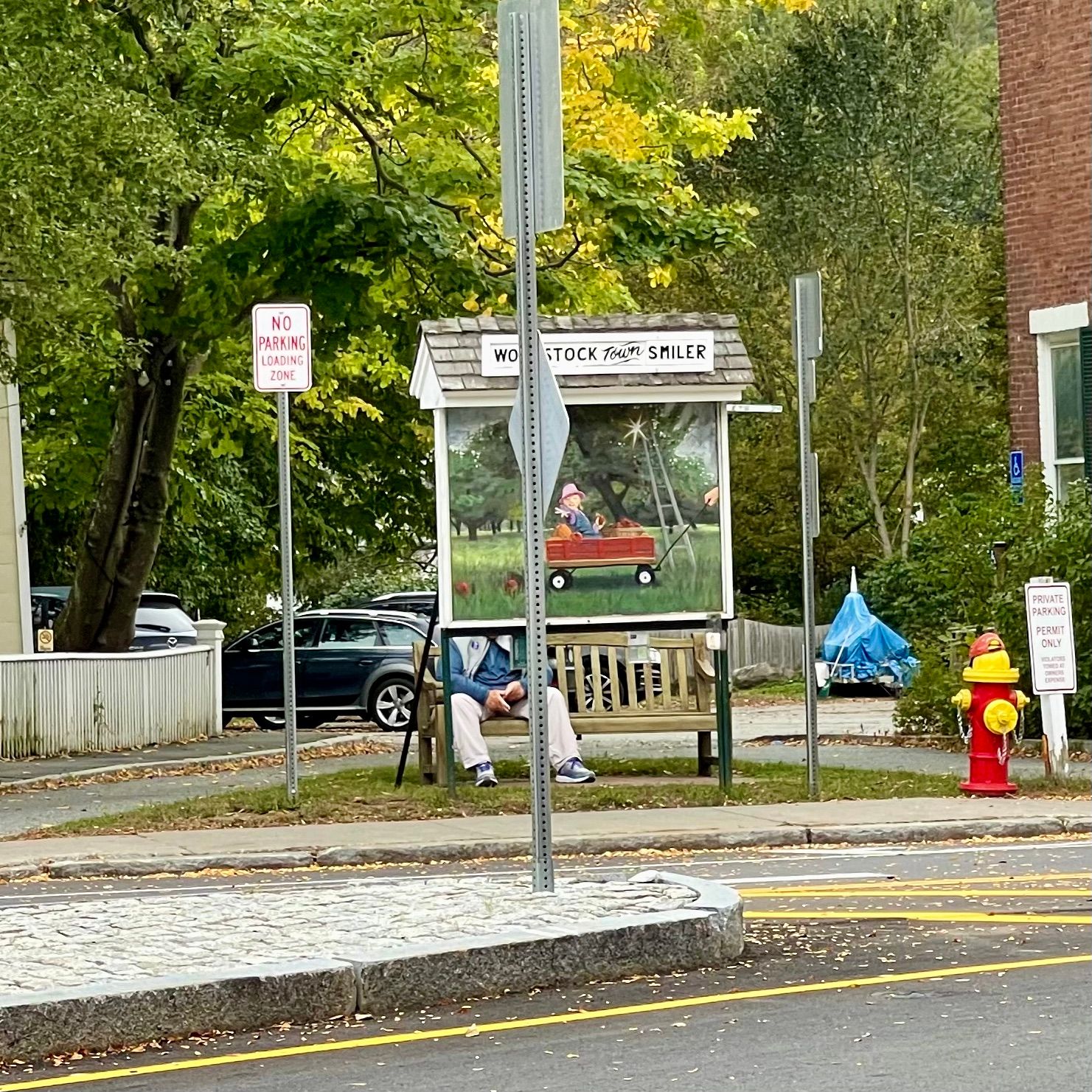
Making it Happen – Lighter, Quicker, Cheaper (LQC)
What is remarkable is that small, mostly inexpensive, changes can collectively be catalytic for a town or city. We call these Lighter Quicker Cheaper (LQC) interventions. Employing LQCs can create a fully functional downtown defined as a series of "places" connected together into one multi-layered destination.
Where to Start – The Main Intersections
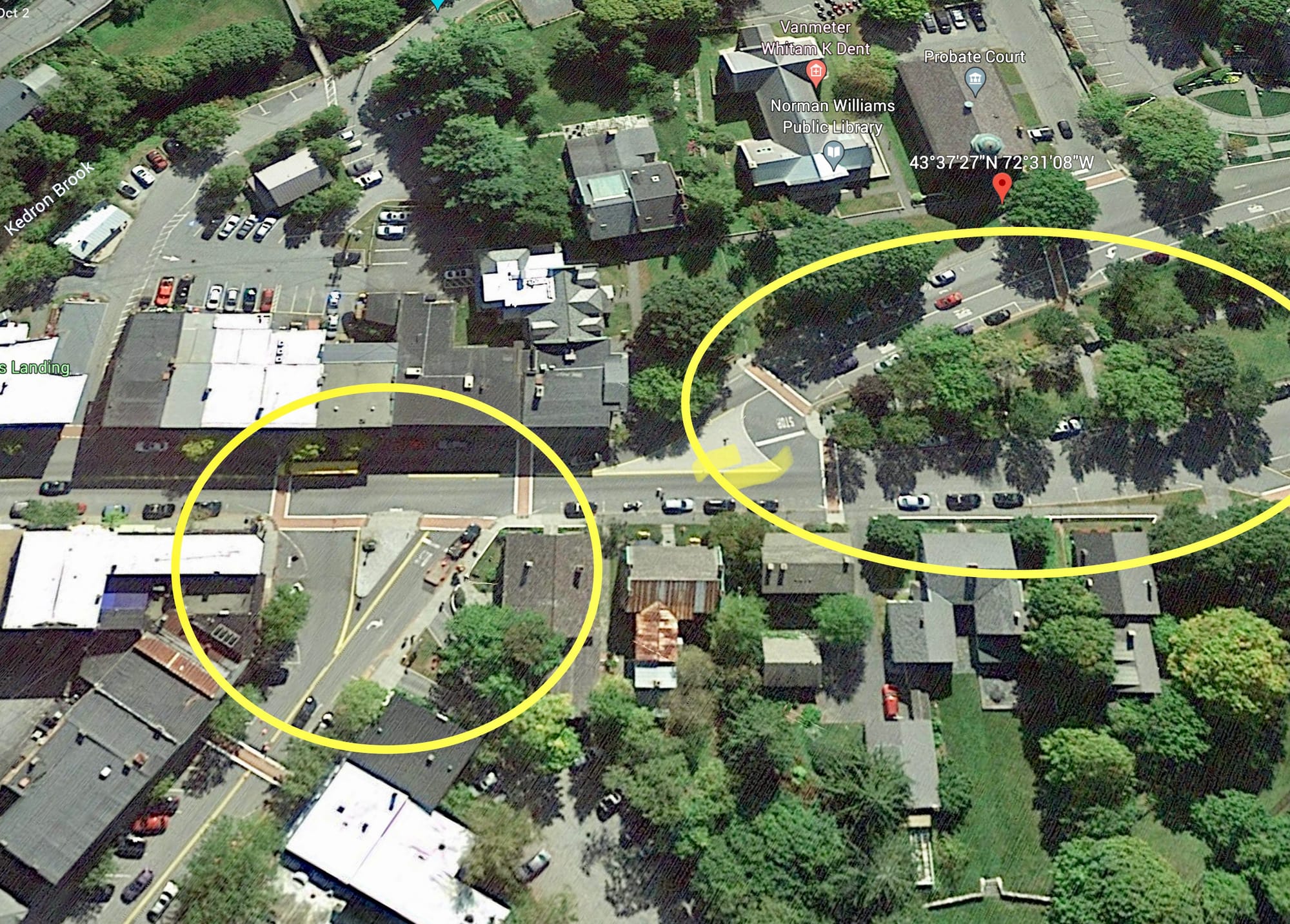
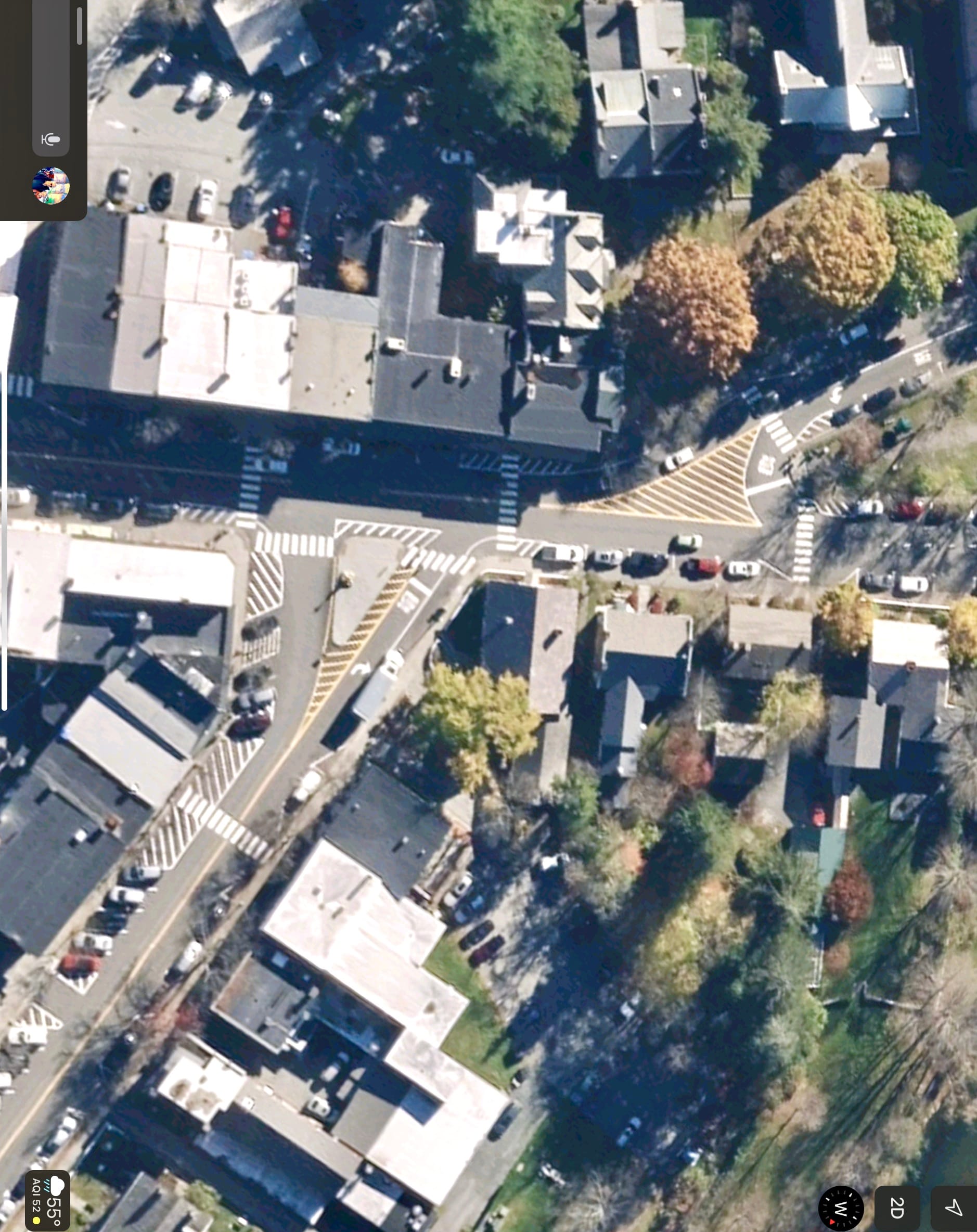
The initial focus of revitalization can be creating a strong town center at the main intersection – a natural gathering place for the community. This sets up a ripple effect to happen because next steps can be easily identified as one travels out from the center in all directions. As each layer of LQC activations is added, the new amenities and interventions will connect the center with the rest of Woodstock, creating multi-dimensional experiences that draw people in and then open new opportunities for them to explore different directions such as historic buildings, the nearby river, fields, a nice walk to the Billings Farm and trail system, etc.
A good strolling/window-shopping main street requires wider sidewalks to support bringing the inside out and adding amenities for cafes or public uses which would add significantly to the perception of liveliness. Adding a few feet to the sidewalks and in a few cases a sidewalk extension by removing parking, would be transformative. New Haven did this with some paint and bollards, perfect examples of LQCs, and revitalized its core blocks.
1) The Sidewalks

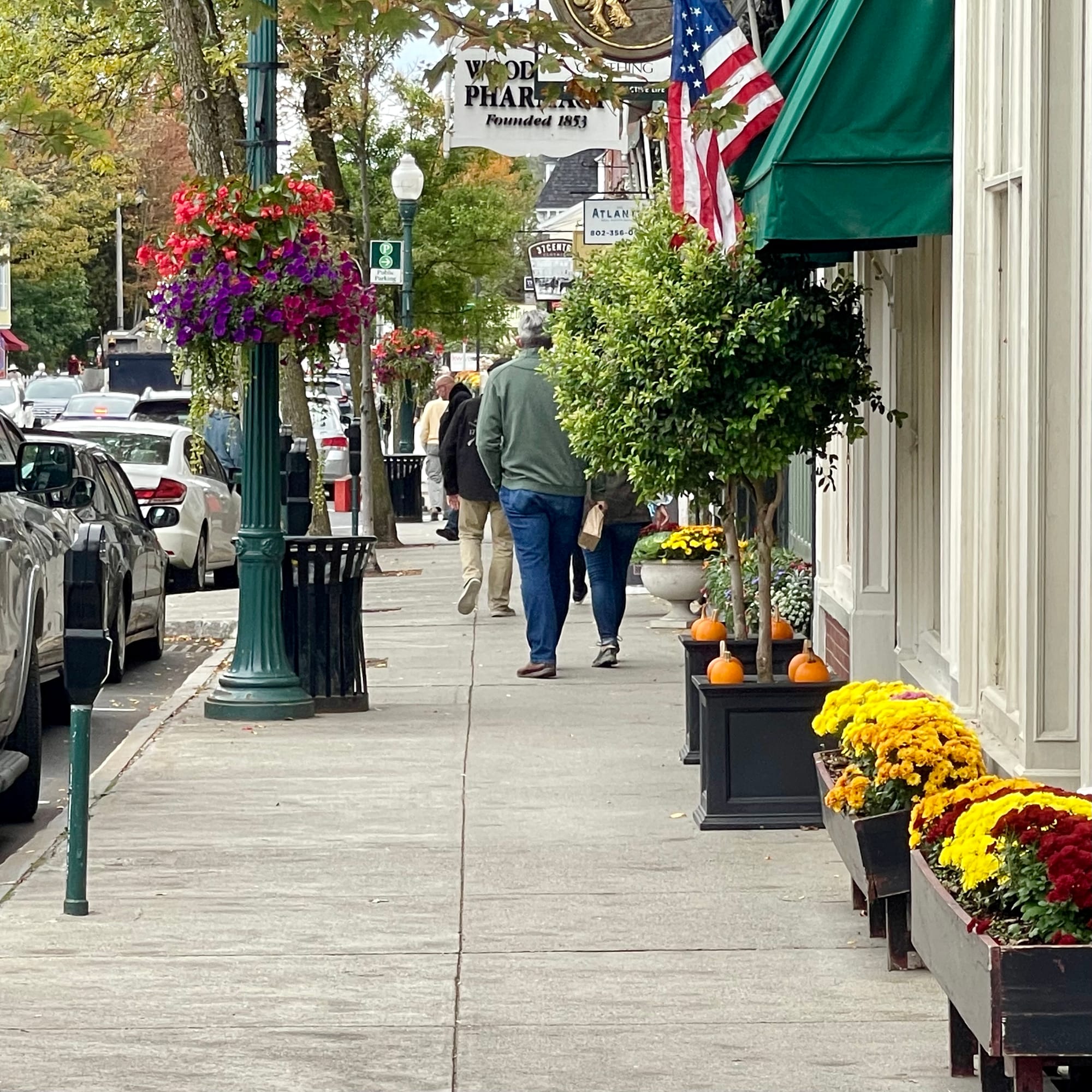
Woodstock needs to widen its sidewalks, starting at St. James Church and going to the west through downtown and east through the main intersection addressed above. This widening should go beyond the post office and the downtown's ice cream shop. The widenings should then extend along each of the cross-cutting alleys and side roads, spreading out like an "octopus" north and south from the center and Green. This would create multiple options for entering the neighborhoods from the town core and enjoying the richness of one of Vermont's most special communities.
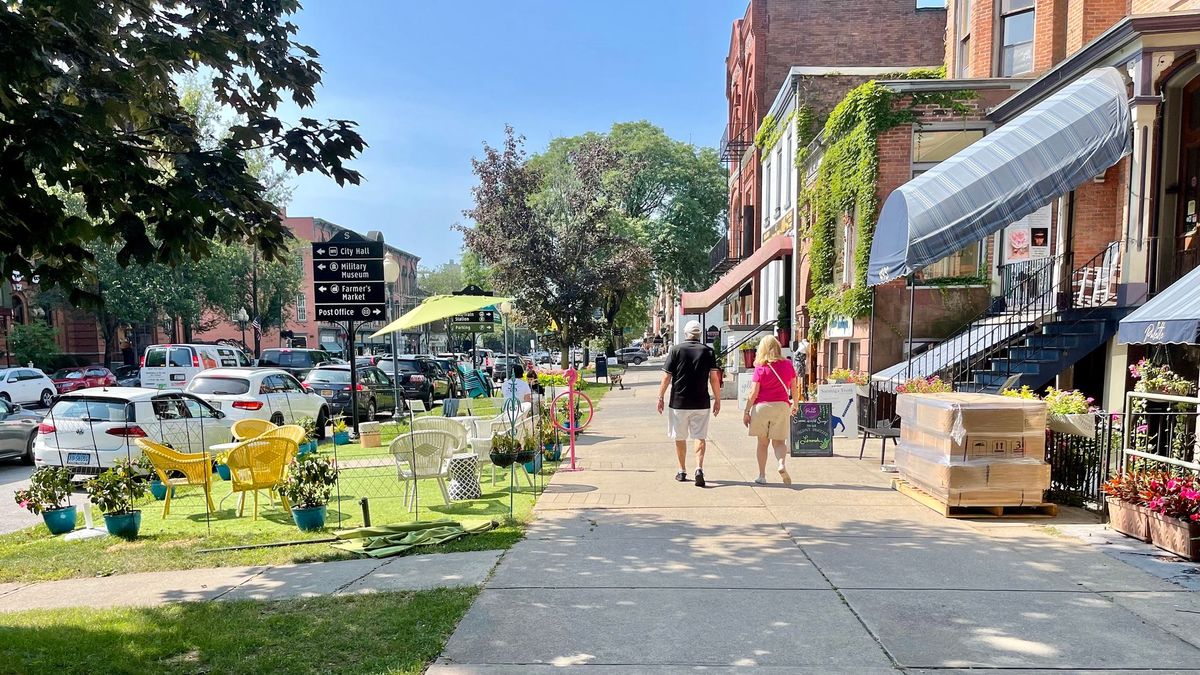
2) The Intersections
By narrowing the pavement and extending the curbs at the main intersection and along both sides of the Green, a central gathering place would be created that is interconnected with the downtown rather than separated from it. By expanding the central plaza and adding a second plaza in the western portion before the main intersection, the perception of the center would be expanded to include the library and the Green.
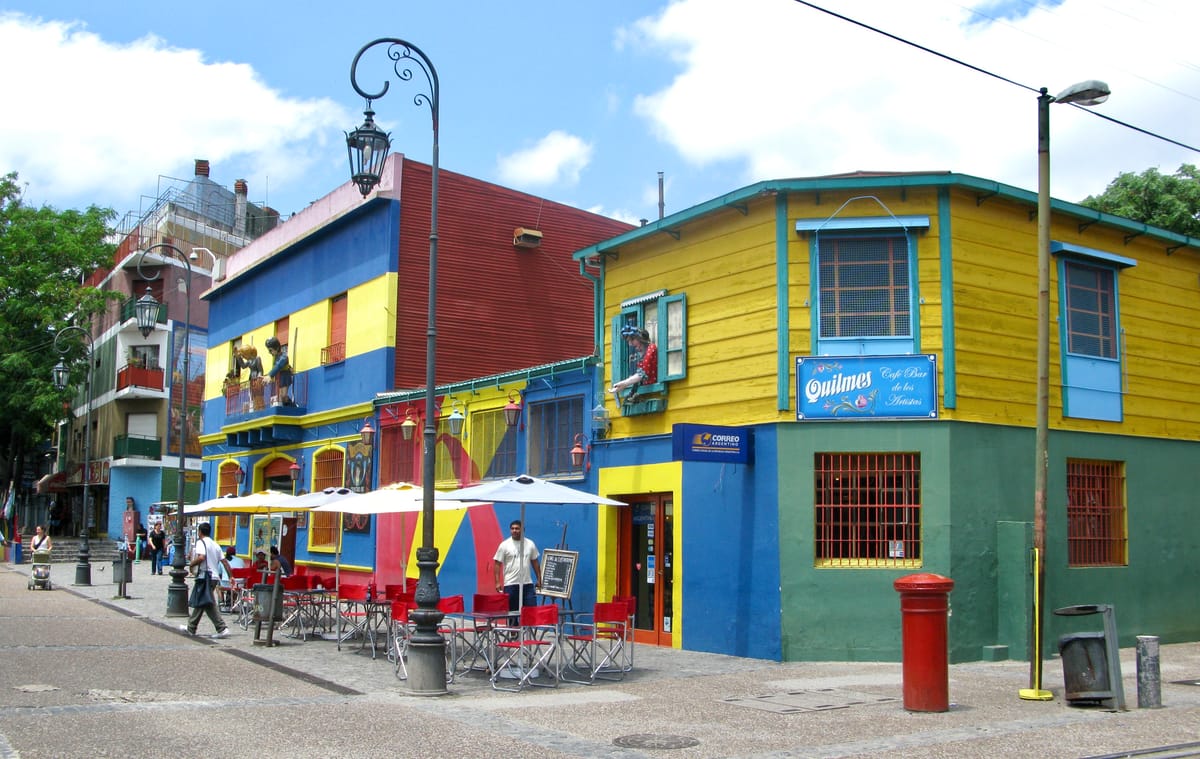
3) Promenade
Activating the Green with programming and amenities, adding attractions along its length, and then connecting it to the Woodstock Inn – which currently feels somewhat remote and disconnected – would expand the perception of town. Bringing the Woodstock Inn into the center can be achieved by creating a small pavilion with shops and food, maybe even a cheese and ice cream kiosk using Billings Farm milk.
Additionally, the river with its covered bridge is a stone's throw from Main Street, but is invisible to most visitors. A city's natural treasures should be well-integrated into core areas and highlighted. Spotlighting the town's assets while expanding the walking area would create a unique and special place to stroll through, what the Italians call a passeggiata.
4) Hubs
Small "hubs" of social and commercial activity can be created in a few places along the streets in the downtown core and even at the east intersection at the start of the downtown. These hubs can be achieved by designing "inside out" so that things normally inside an establishment are pulled outside, like seating, product displays, etc. It can also be done through "double loading," where amenities like kiosks, coffee trucks, seating areas, etc. are placed on both sides of the walkway. Places where one can stop and linger are key.



Within the downtown, some of the smaller intersections have started to create amenity zones that are a great step toward livening up the area, but the overwhelming size of the street stifles them. The next stage is a much more incisive set of activations that can be supported by wider sidewalks. We suggest a stronger series of "hubs," such as the kind that can be found on Brooklyn streets.
5) Main Street Through Town - Route 4
Strolling, walking dogs, casually stopping to talk or hang out are some of the most popular activities in a downtown, stretching from the center into the neighborhoods around it. However, narrow sidewalks create a limited setting to do these activities. Without basic amenities to add pleasure to the experience of being out and about, the city's public realm does not live up to its potential.
You can find a more detailed vision for how to transform a small town's Main Street here:
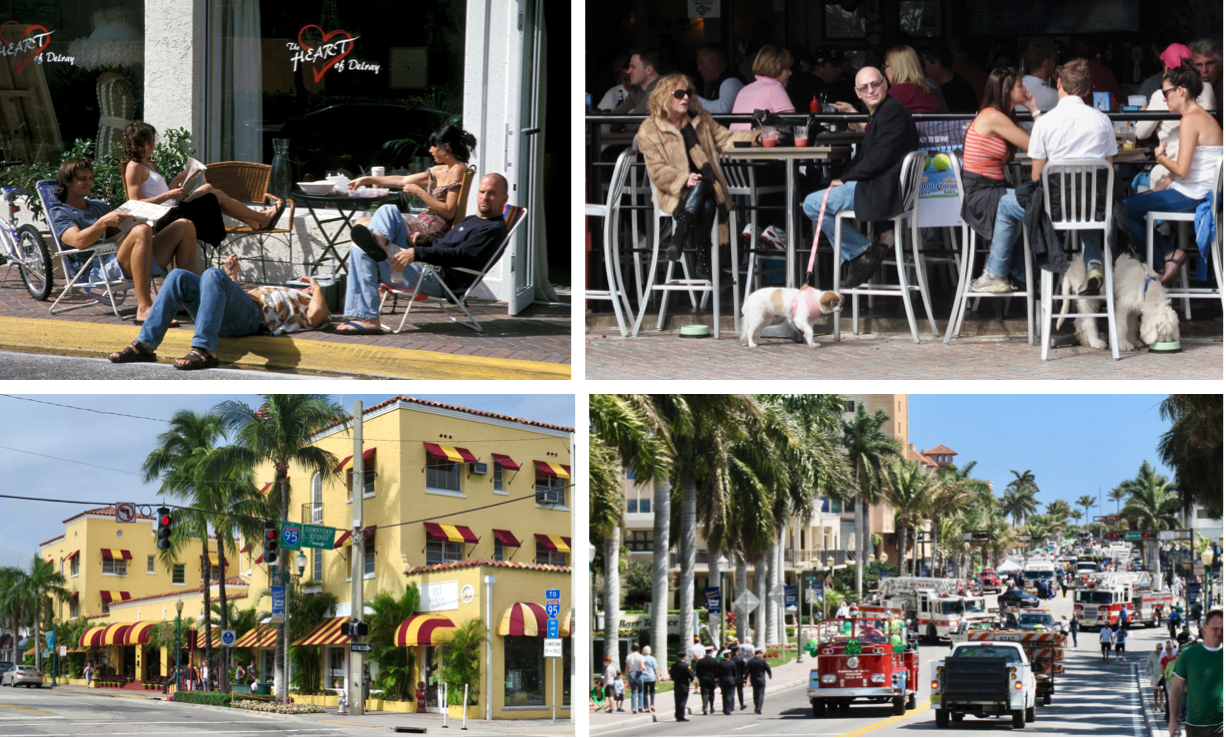
With these simple and straightforward changes, towns like Woodstock can be transformed. Instead of being sacrificed to cars and car infrastructure, key public spaces like streets and intersections can be redesigned for the community and local businesses in the form of vibrant sidewalks, squares, promenades, and the like. This would lead to a revitalization that, when paired with conservation and preservation, would allow Woodstock and towns like it to thrive.
For more on small towns:
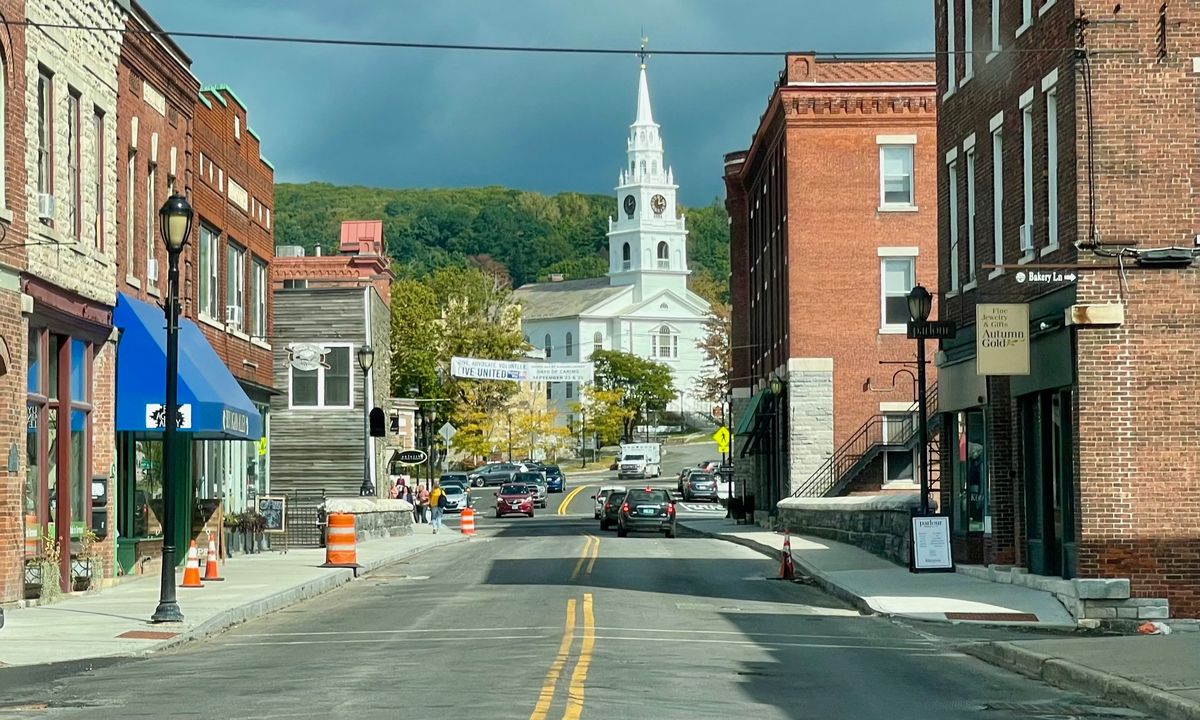

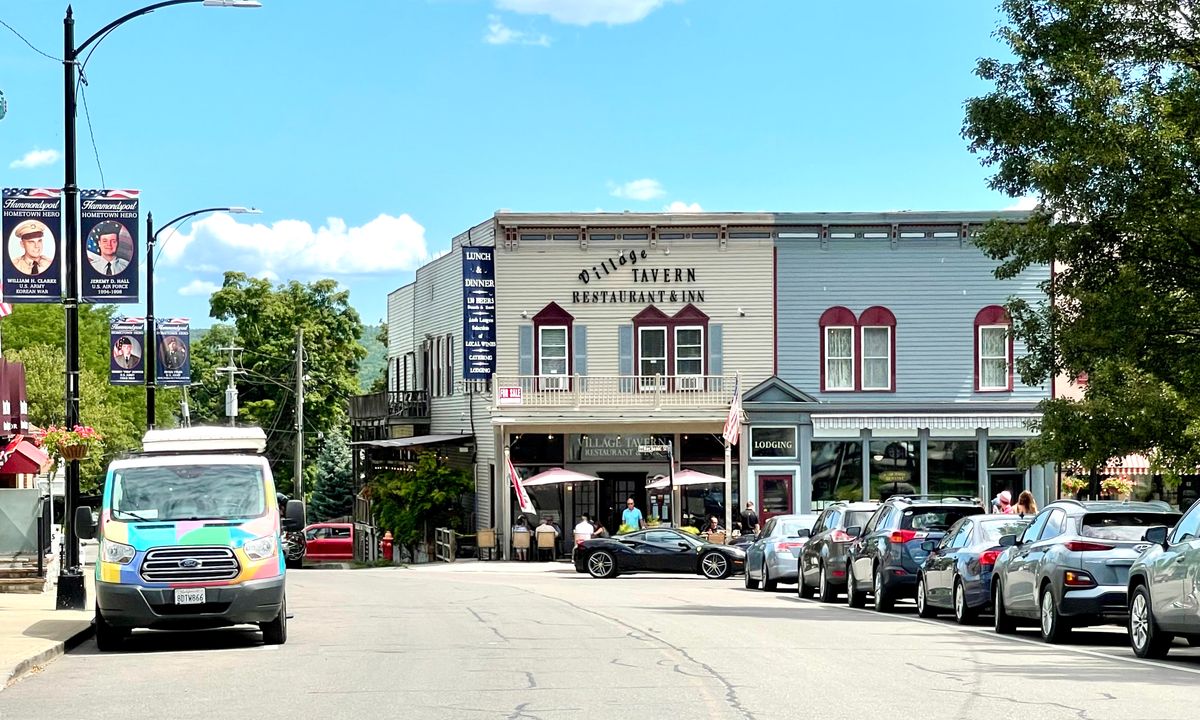
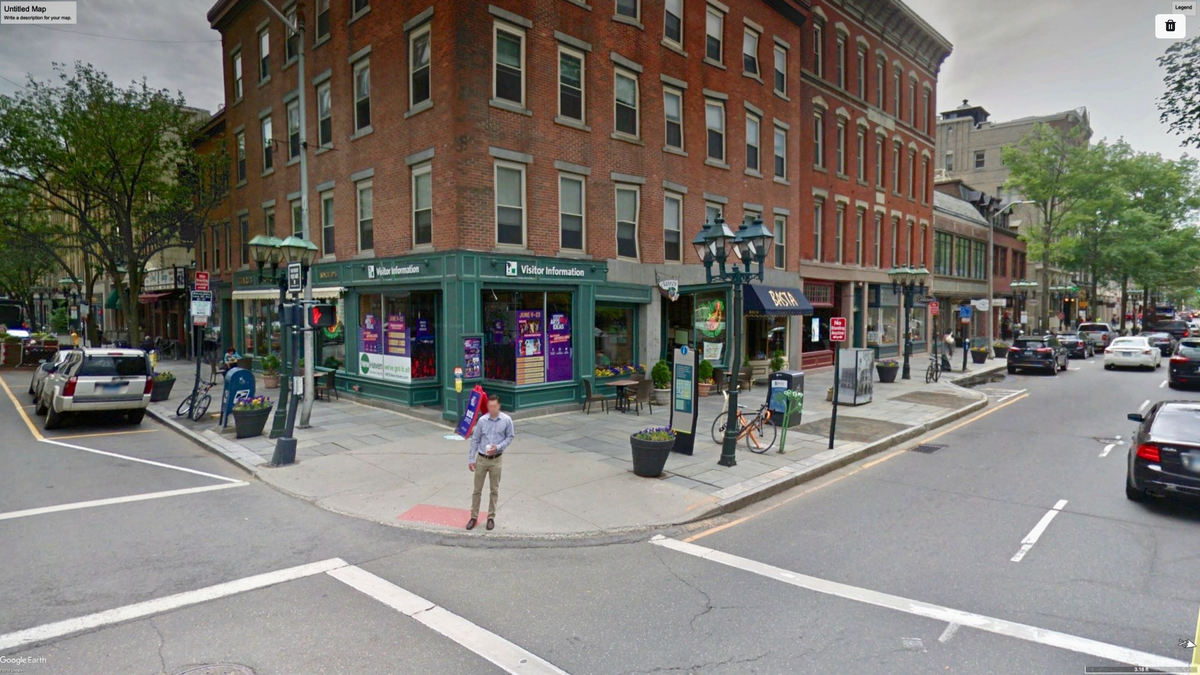
Who we are
We are the founders of the global placemaking movement that is soon celebrating its 50 year anniversary.
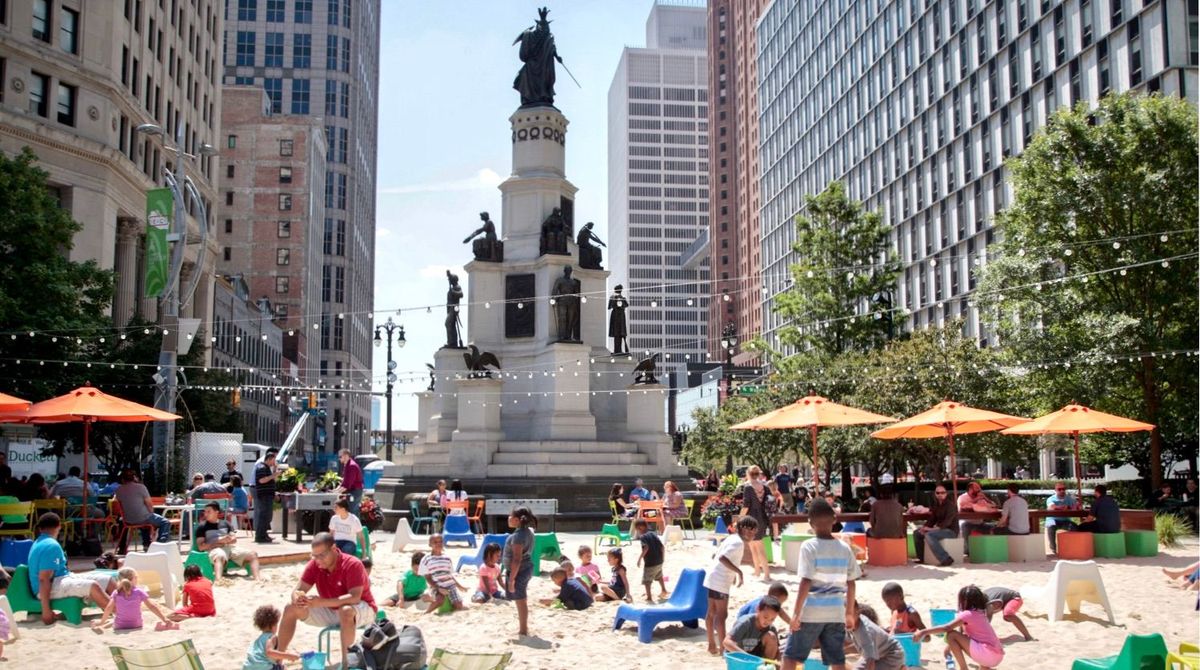
A documentary film recently came out about our work called The Place Man.
